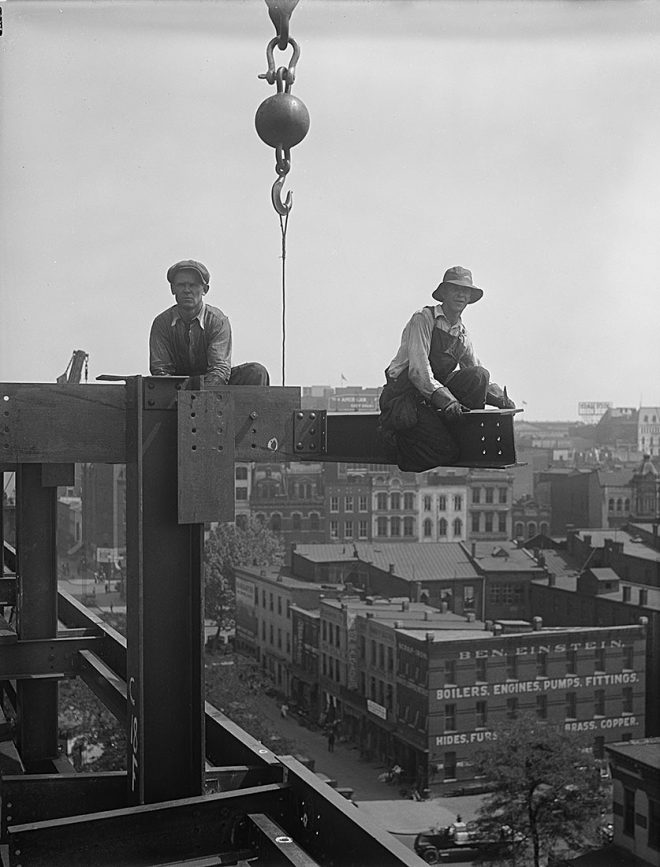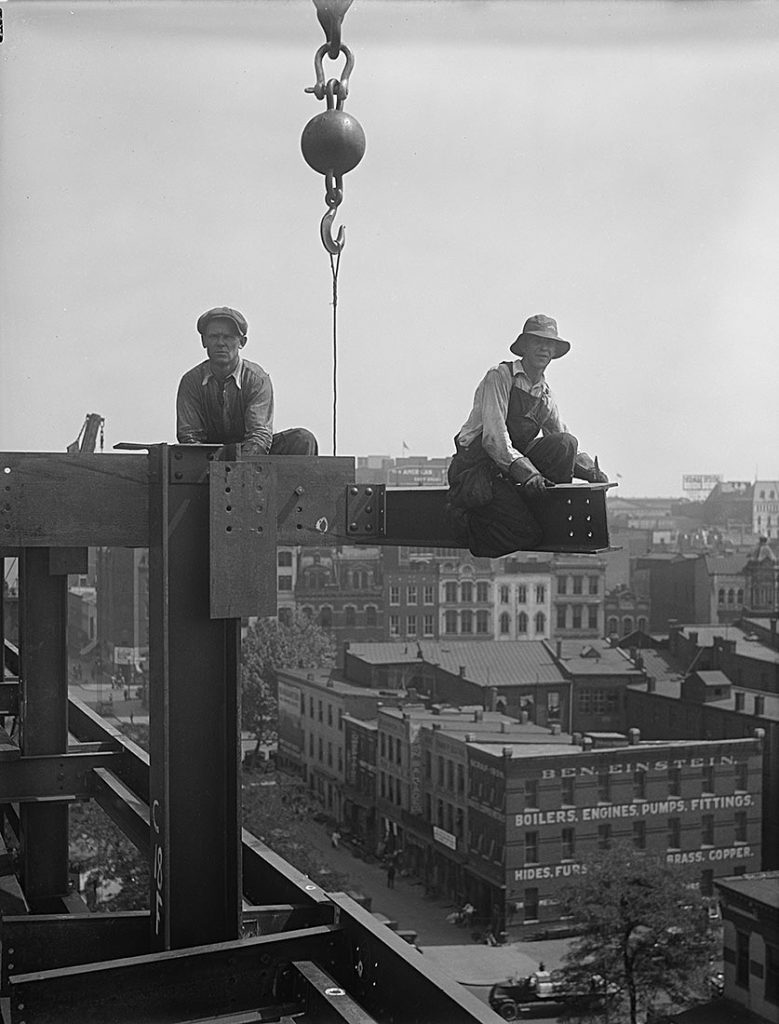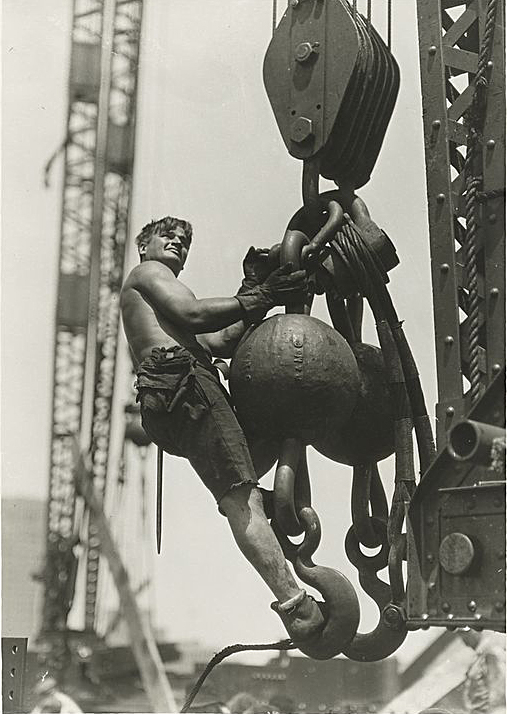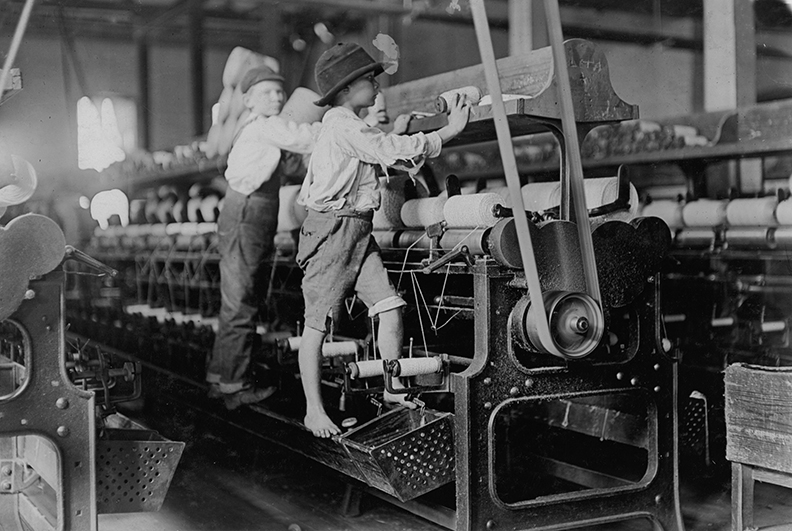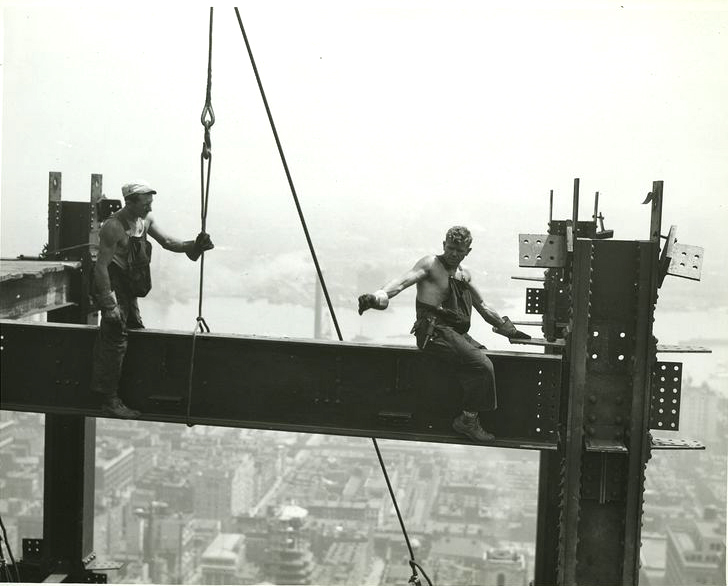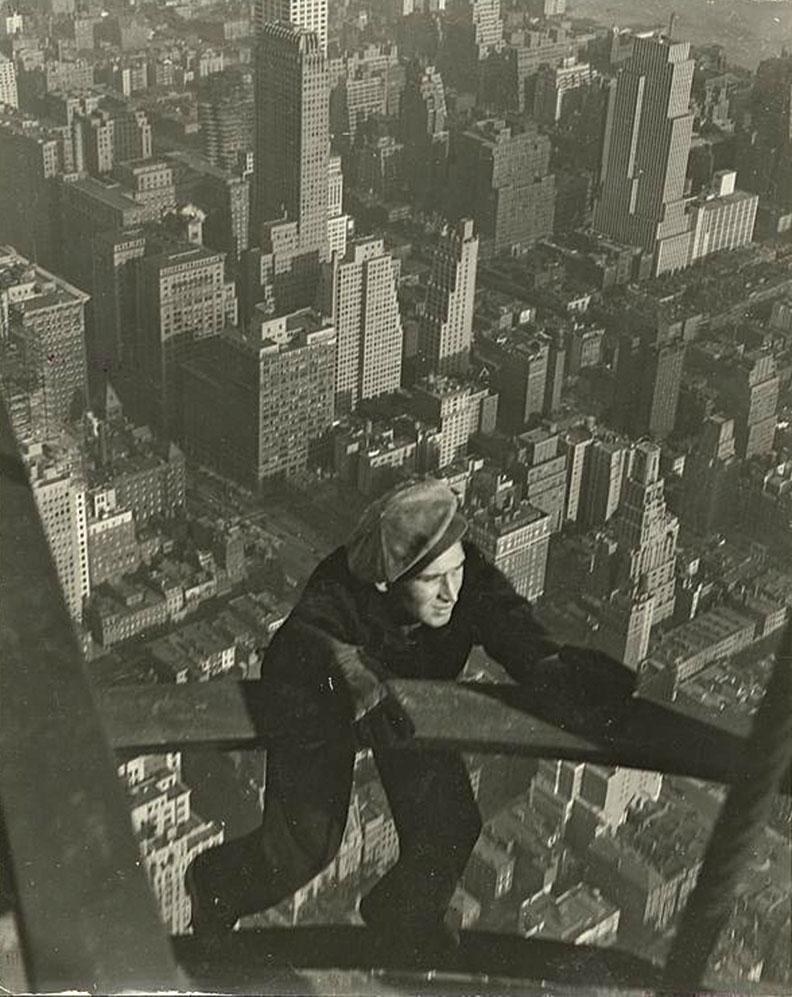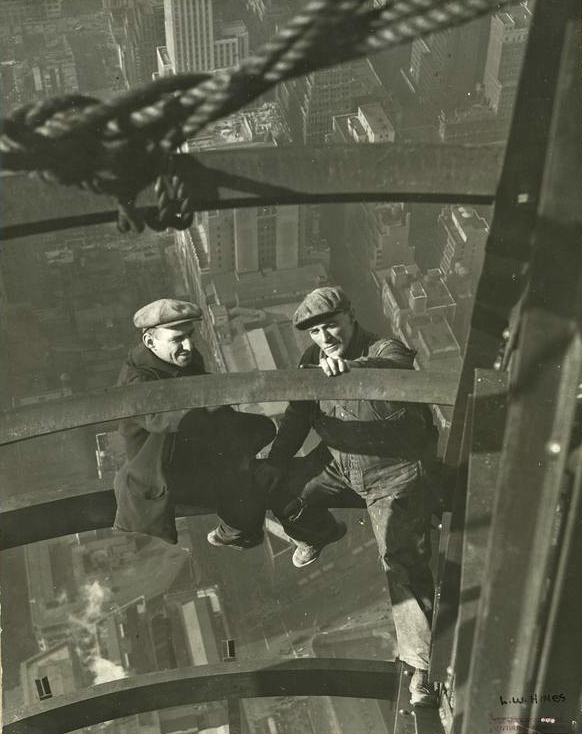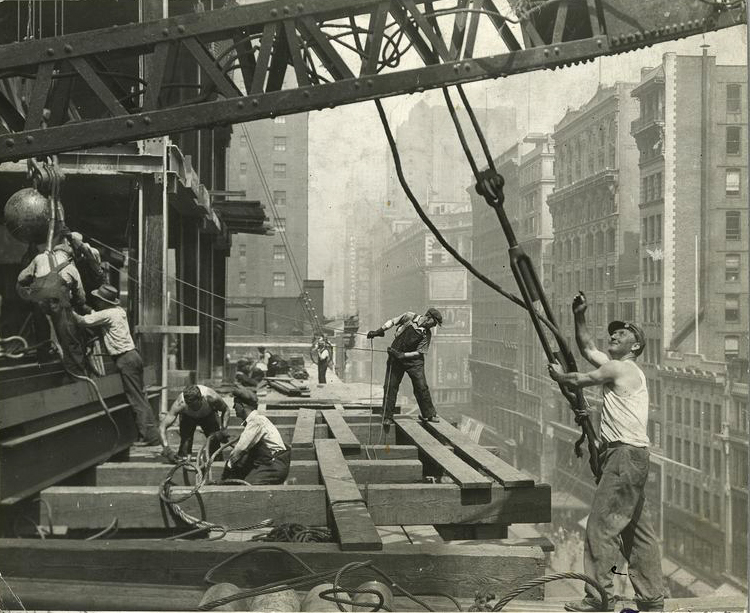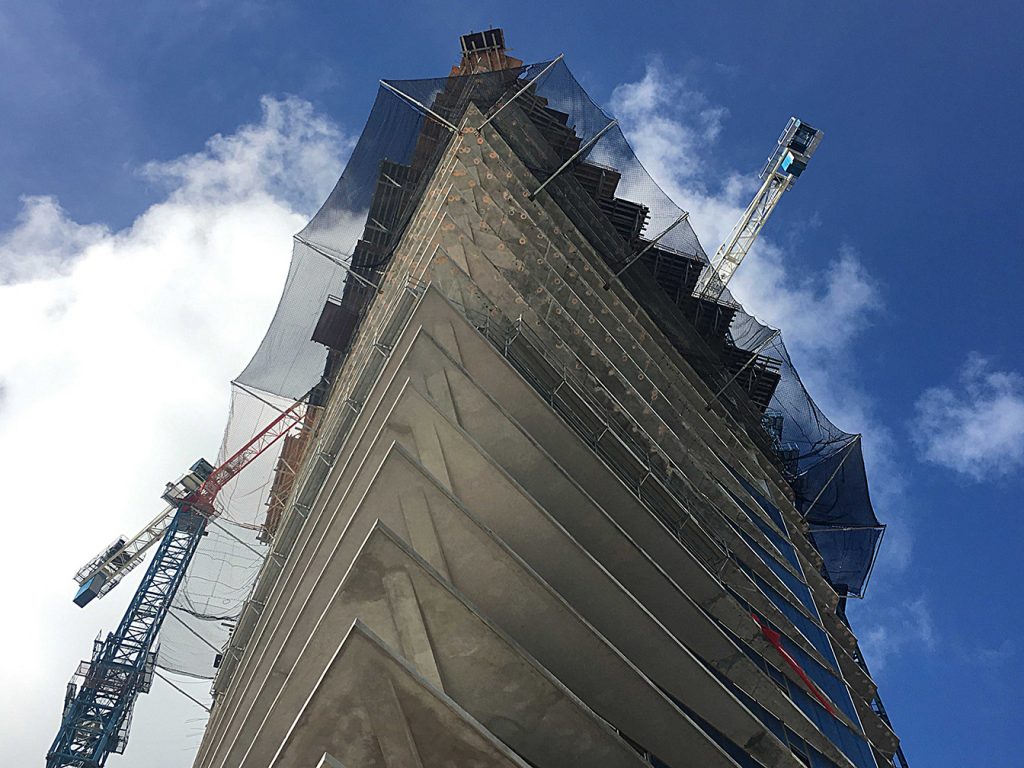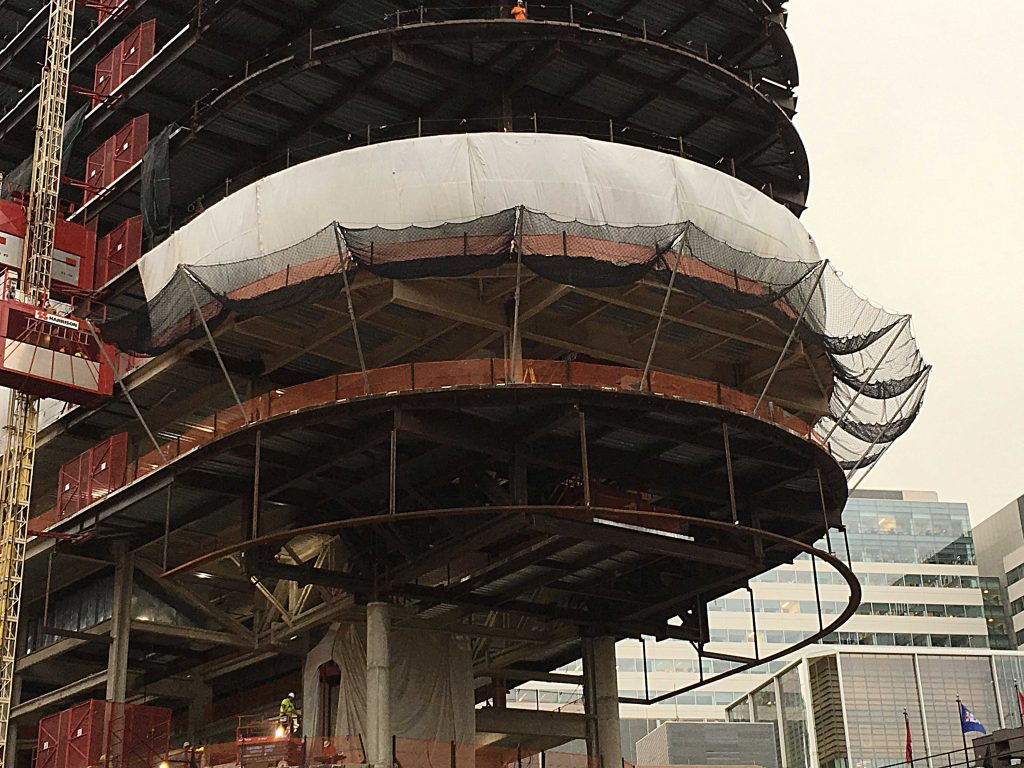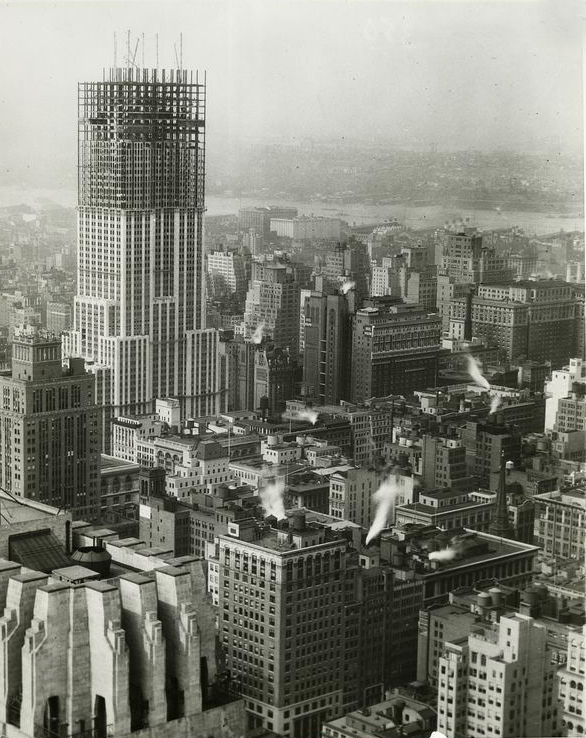
Between the years of 1929-1931 there was a race between real estate developers in New York City to construct the world’s tallest building. In the years leading up to the Great Financial collapse which lead to The Great Depression, there was a construction frenzy in New York. During this period, three buildings in Manhattan were in competition to eclipse the height of The Woolworth Building: The Chrysler Building, 40 Wall Street and finally The Empire State Building. Built during the art deco design style of the early 20th century, all three buildings are singular monuments to that era in architectural design and construction.
Competing architects, builders and financiers were intent on achieving the distinction of erecting the tallest structure in the world. Initially the battle went back and forth between 40 Wall Street and The Chrysler Building. That struggle involved multiple redesigns and additions of floors, but both buildings were ultimately limited by the size of their initial footprints as to how high they could build. 40 Wall Street would top out at 925 feet, while the Chrysler Building was only finalized when a 125 FT spire was added to the top of The Chrysler Building: its’ final height was 1,046 FT. This hard fought rivalry to win “The Race to the Sky” was finalized when The Empire State Building achieved a roof height of 1,250 FT and a total height of 1,454 FT, including its’ antenna.
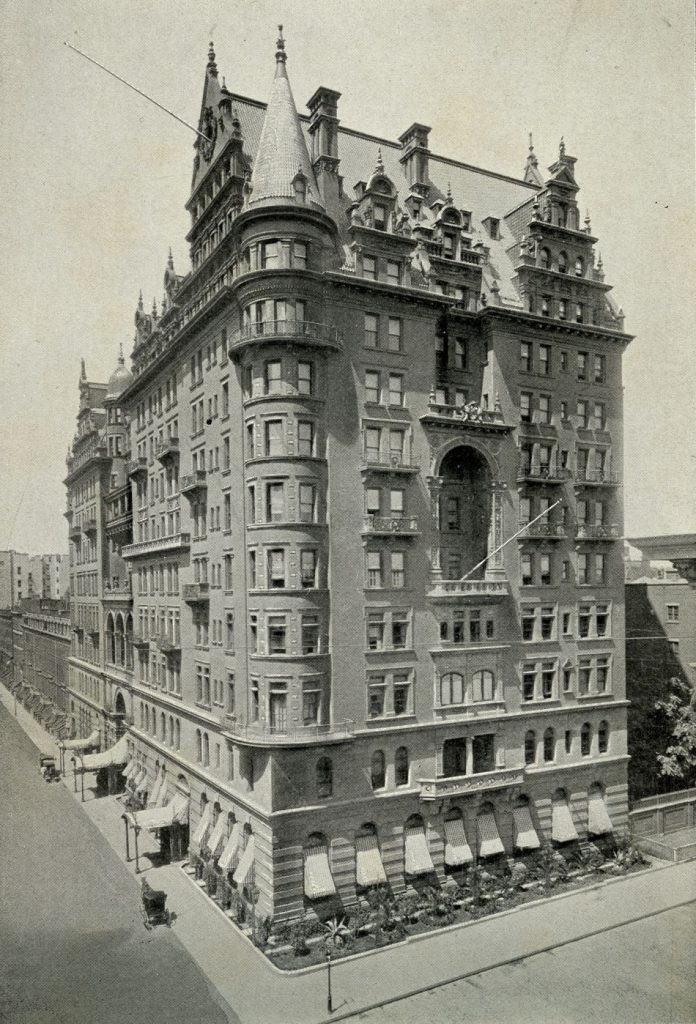
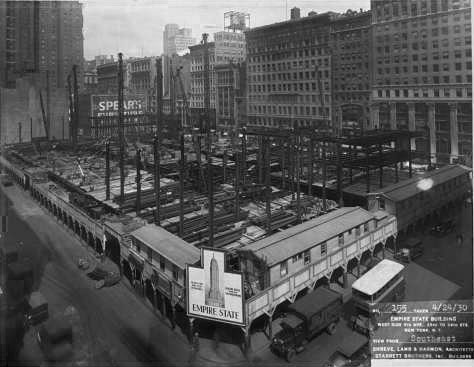 The Empire State Buildings’ location had been the site of the original Waldorf Astoria Hotel, built in 1893 by the Astor family. By the late 1920s it was perceived as outdated and the property sold to the developers of The Empire State Building in 1929. It was demolished later that same year. Construction on the new building started on March 17 of 1930.
The Empire State Buildings’ location had been the site of the original Waldorf Astoria Hotel, built in 1893 by the Astor family. By the late 1920s it was perceived as outdated and the property sold to the developers of The Empire State Building in 1929. It was demolished later that same year. Construction on the new building started on March 17 of 1930.
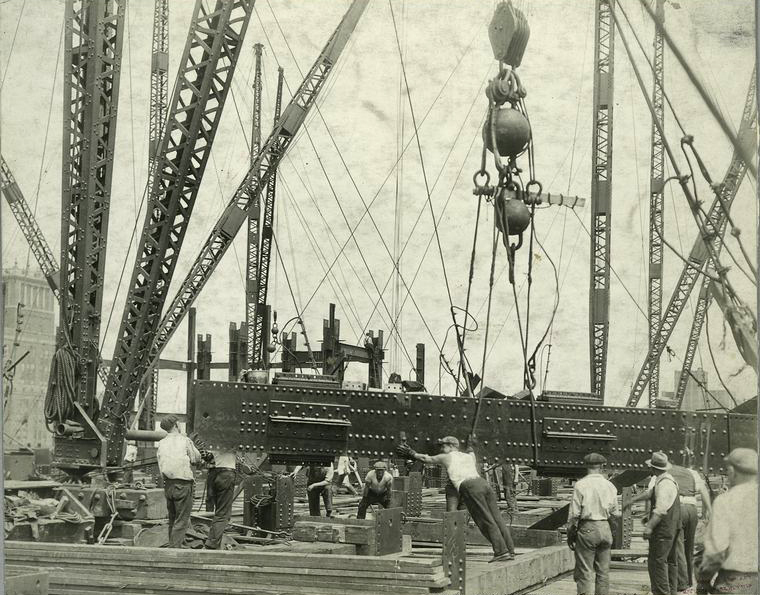
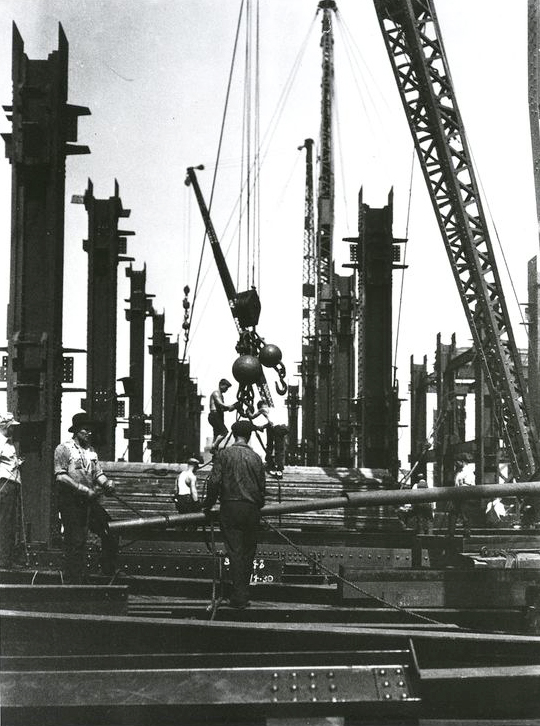
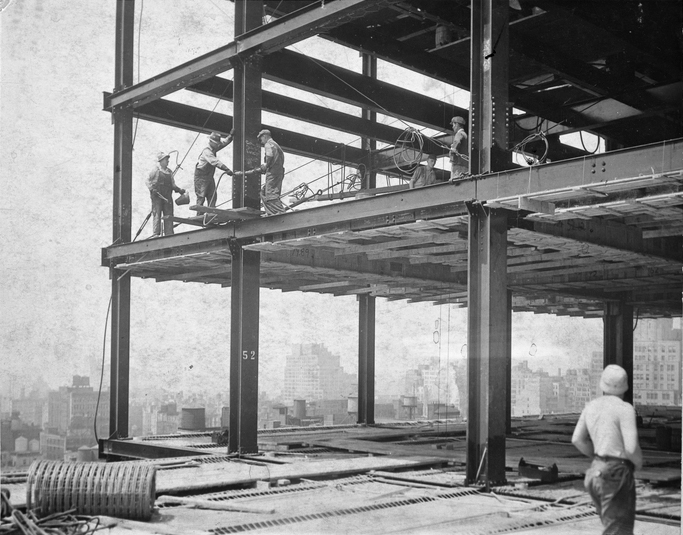
 The amount of material used to construct the building was more than any previous construction project. The steel ordered for the structure exceeded the amount used in both The Chrysler Building and 40 Wall Street combined. Building materials came in from all over the country. Limestone came from a quarry in Indiana, steel from Pittsburgh, cement from upstate New York, marble from Italy, France and England, hardware from the New England states and wood from the American Northwest.
The amount of material used to construct the building was more than any previous construction project. The steel ordered for the structure exceeded the amount used in both The Chrysler Building and 40 Wall Street combined. Building materials came in from all over the country. Limestone came from a quarry in Indiana, steel from Pittsburgh, cement from upstate New York, marble from Italy, France and England, hardware from the New England states and wood from the American Northwest.
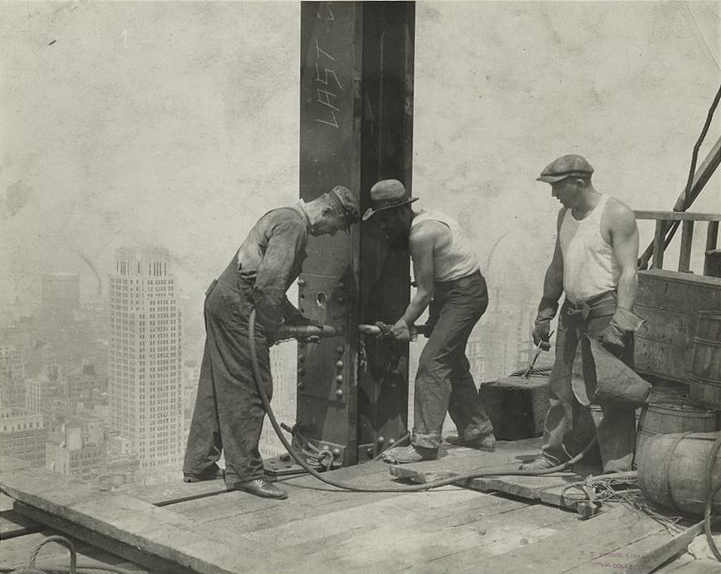
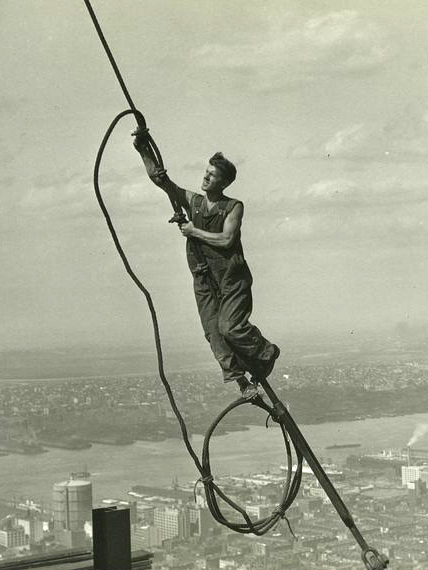
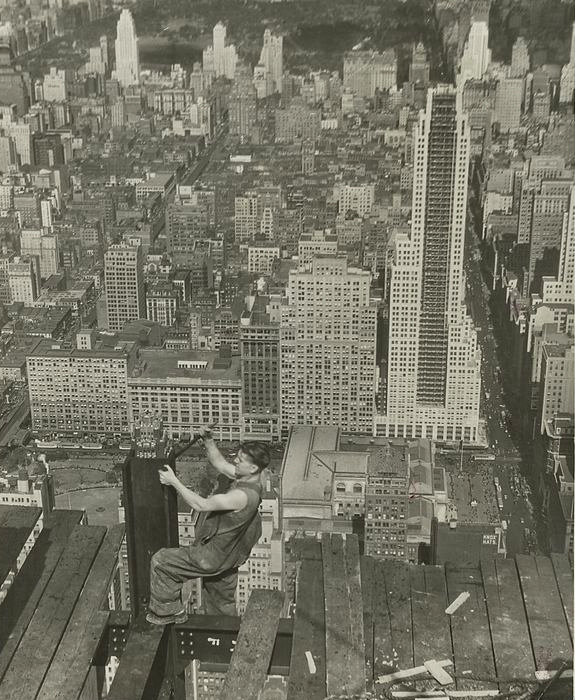 The construction manpower employed was more than 3,500 people at its highest. These laborers were immigrants from Ireland and Italy, with a sizable number of Mohawk Indians from Upstate New York and Canada. A primary focus of site management was to keep materials continually feeding construction. There were a series of cranes and derricks which lifted materials from the trucks below, while hoists and other lifts inside the structure enabled speedy movement of materials upwards.
The construction manpower employed was more than 3,500 people at its highest. These laborers were immigrants from Ireland and Italy, with a sizable number of Mohawk Indians from Upstate New York and Canada. A primary focus of site management was to keep materials continually feeding construction. There were a series of cranes and derricks which lifted materials from the trucks below, while hoists and other lifts inside the structure enabled speedy movement of materials upwards.
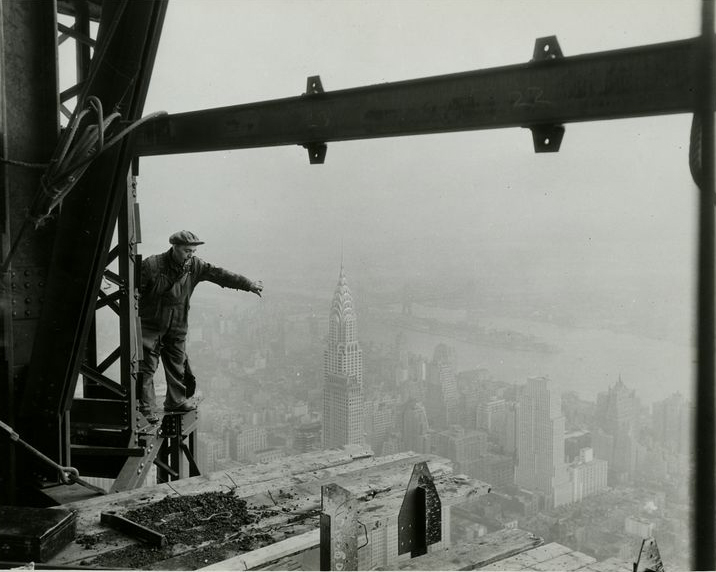
With an incredible rate of four and half floors completed each week, it outpaced the construction pace of the nearby Chrysler Building. It was completed a mere thirteen and a half months and opened on May 1, 1931. In its race to be the biggest structure ever erected, there had been several fatalities. Officially, 5 laborers died, while its’ neighbor the Chrysler building suffered no fatalities during its own construction. Including the demolition of the Waldorf-Astoria hotel, the total cost of construction was $40,948,900.00: in today’s dollars that would equal approximately $554,644,100.00.
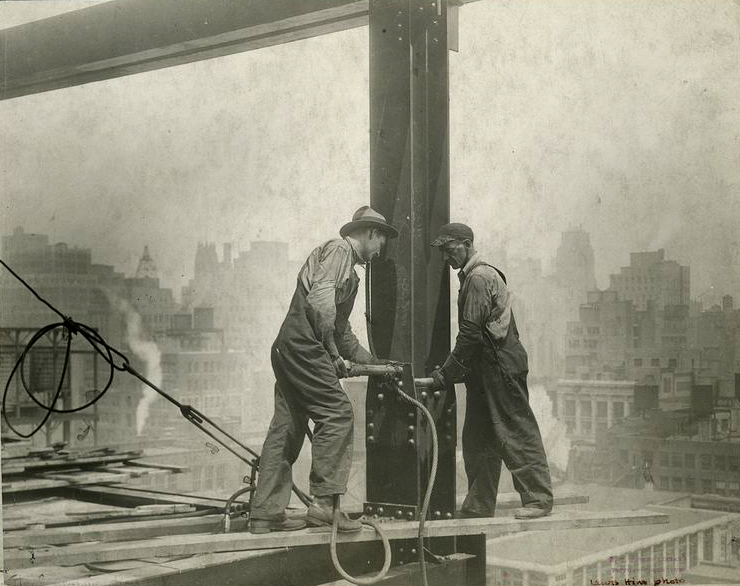
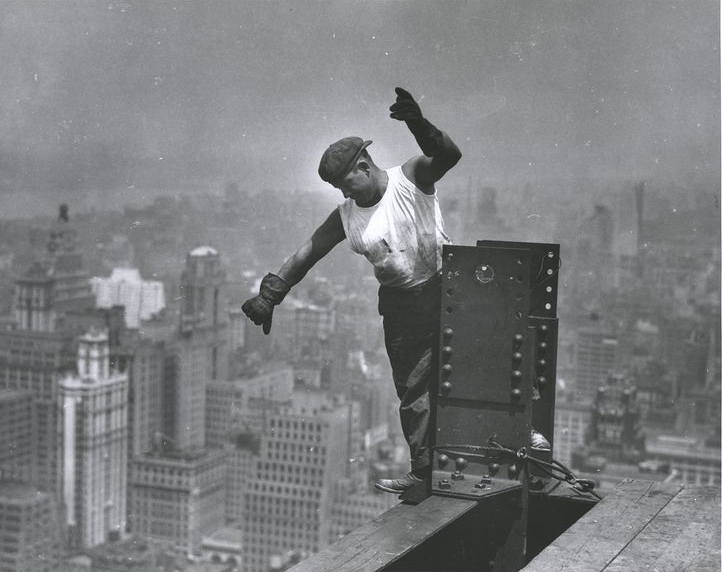
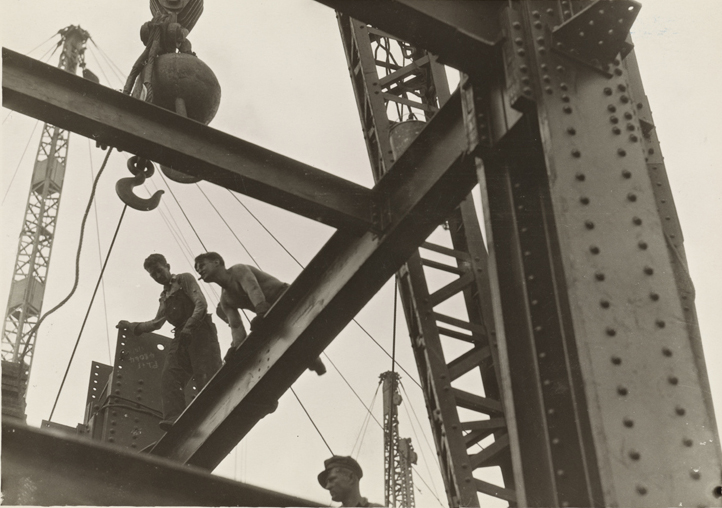
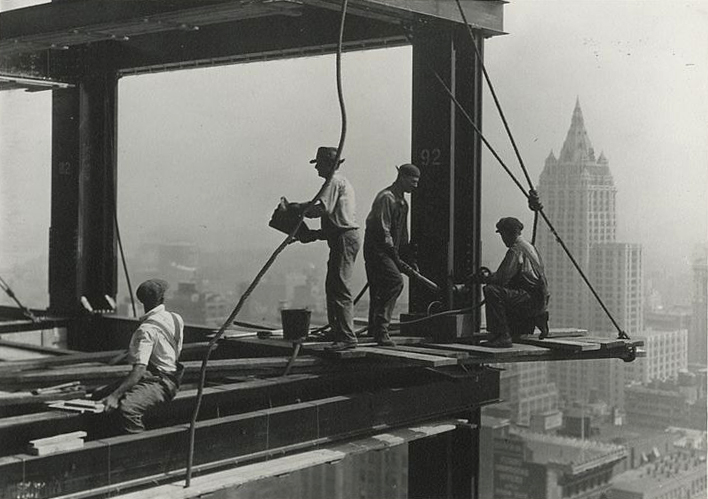 What’s important to note is that these three giant towers of the Art Deco age were built before the advent of modern safety standards and measures. There weren’t any hard hats, or perimeter safety netting systems, specified work clothes, tie-off locations or regulations to protect workers. Even though the International Union of Ironworkers fought for workers’ rights and some individual project engineers specified safety measures, it wasn’t until state and federal regulations emerged that minimum safety conditions were required on all work sites.
What’s important to note is that these three giant towers of the Art Deco age were built before the advent of modern safety standards and measures. There weren’t any hard hats, or perimeter safety netting systems, specified work clothes, tie-off locations or regulations to protect workers. Even though the International Union of Ironworkers fought for workers’ rights and some individual project engineers specified safety measures, it wasn’t until state and federal regulations emerged that minimum safety conditions were required on all work sites.
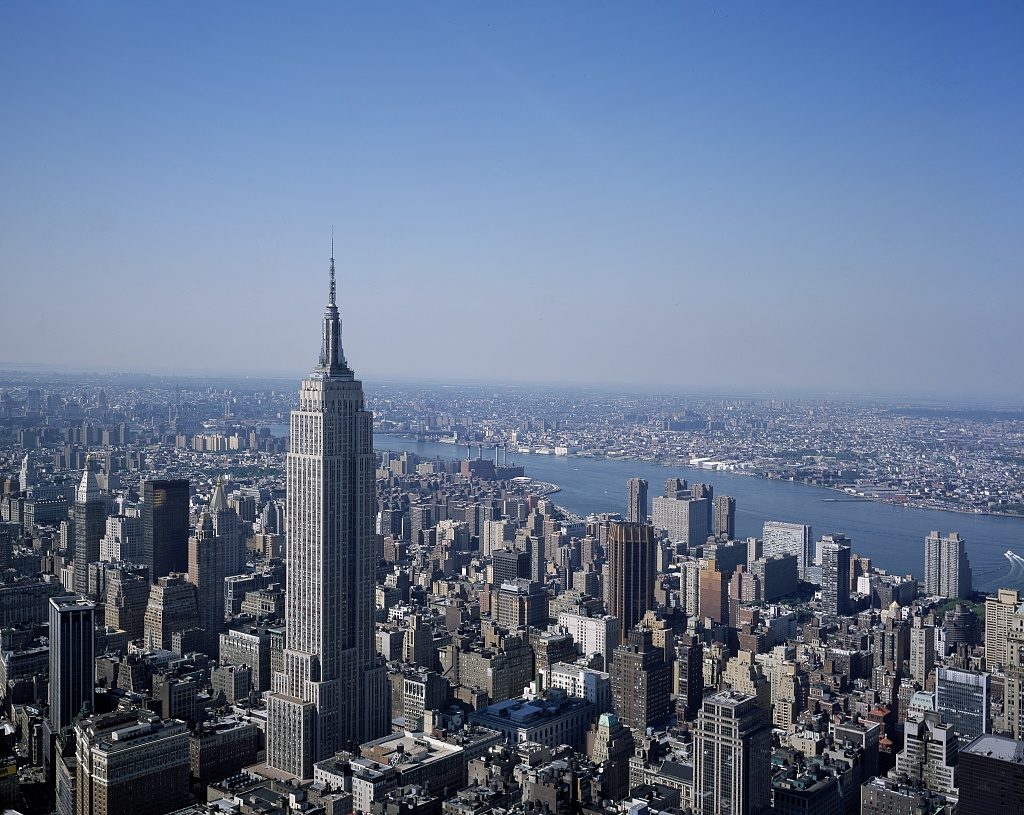 The Empire State building remained the world’s tallest building for 40 years until the North Tower of the World Trade Center surpassed it in height in 1970. After the destruction of the World Trade Center complex during the September 11th Attacks, in 2001, it briefly became the 2nd tallest building in the Americas. It is currently the 44th tallest building in the world and the 6th tallest in the Americas. As an internationally recognized symbol of New York City, it was awarded city landmark status and was designated as a National Historic Landmark in 1986. It receives 3 million visitors annually.
The Empire State building remained the world’s tallest building for 40 years until the North Tower of the World Trade Center surpassed it in height in 1970. After the destruction of the World Trade Center complex during the September 11th Attacks, in 2001, it briefly became the 2nd tallest building in the Americas. It is currently the 44th tallest building in the world and the 6th tallest in the Americas. As an internationally recognized symbol of New York City, it was awarded city landmark status and was designated as a National Historic Landmark in 1986. It receives 3 million visitors annually.
All B/W photos courtesy of The New York Public Library.
Pucuda Leading Edge provides safety netting for fall protection and debris containment. They provide assistance to both owners and contractors through consulting, engineering, and installation assistance.
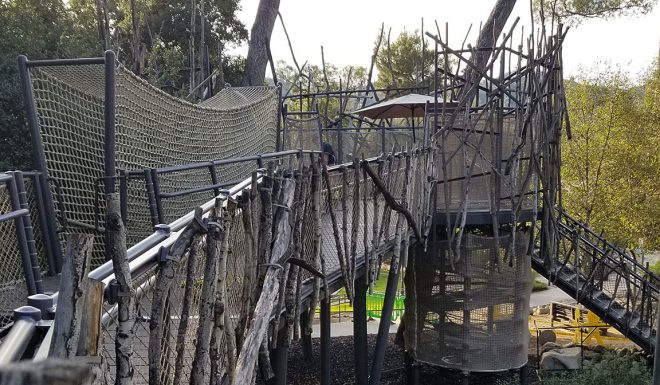
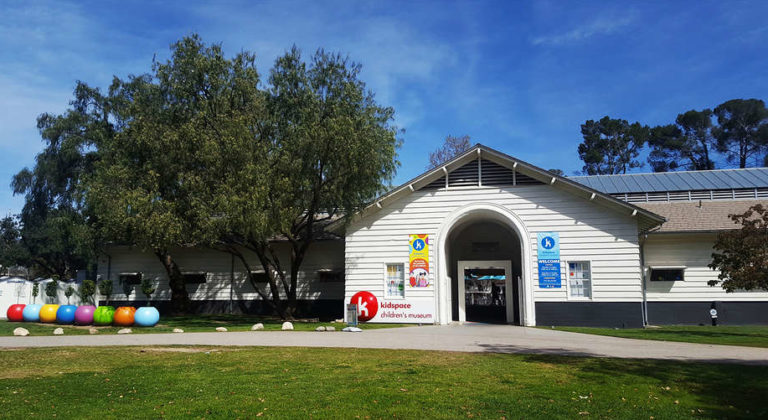 Kidspace children’s museum is situated beside the Rose Bowl in Pasadena, CA. This highly regarded family destination has over 40 interactive exhibits and play experiences for everyone. Situated on what had been a horticultural center at Brookside Park, the museum opened its 3 acre campus in 2004. The museum focuses its developmental learning programs on children aged 1 to 10 years of age, with variety of scientific and natural based exhibits that encourage exploration.
Kidspace children’s museum is situated beside the Rose Bowl in Pasadena, CA. This highly regarded family destination has over 40 interactive exhibits and play experiences for everyone. Situated on what had been a horticultural center at Brookside Park, the museum opened its 3 acre campus in 2004. The museum focuses its developmental learning programs on children aged 1 to 10 years of age, with variety of scientific and natural based exhibits that encourage exploration.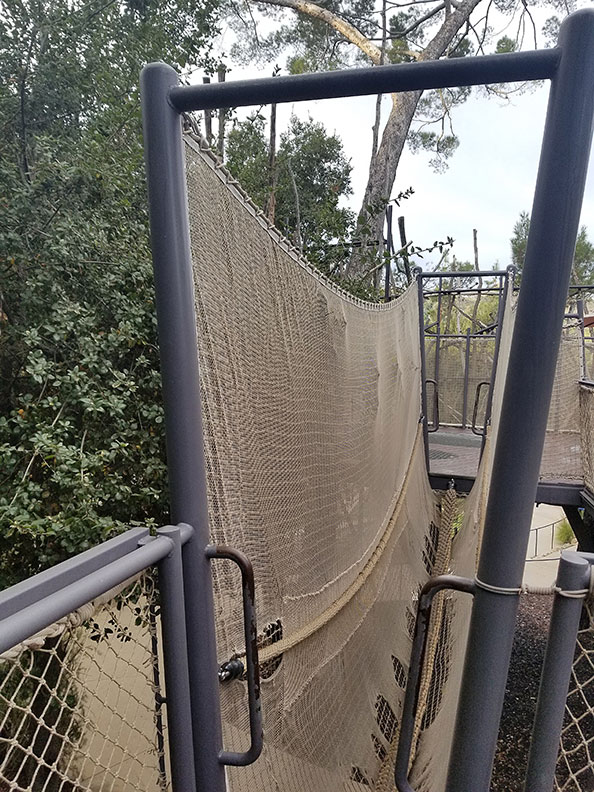
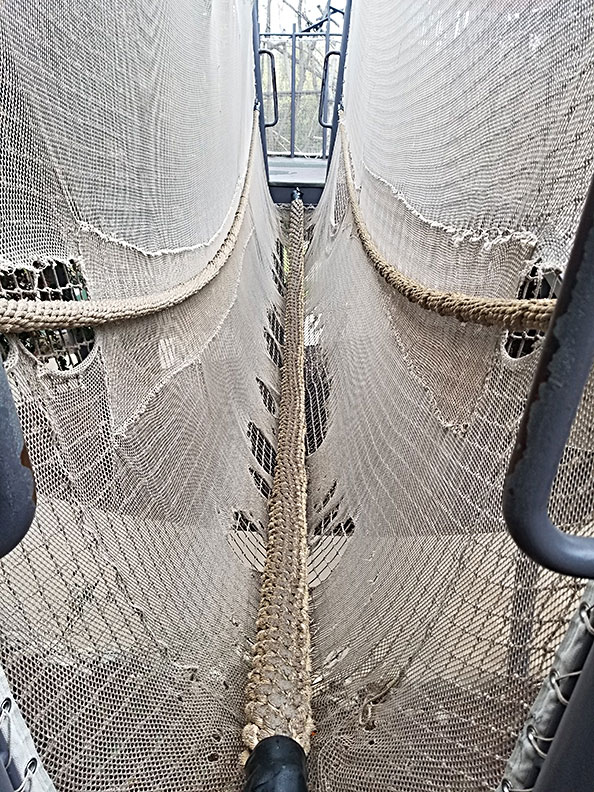
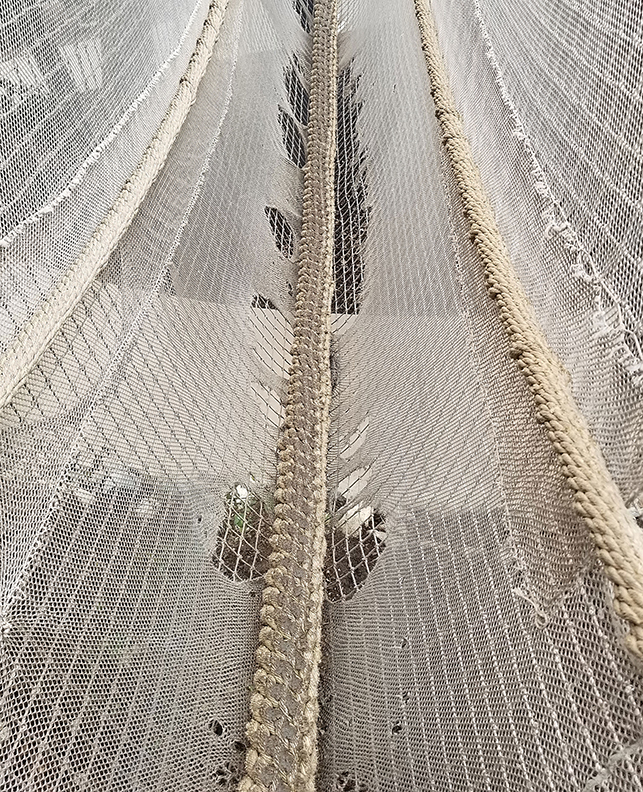 Pucuda had been called into provide a replacement climb netting system for a rope bridge in the museum’s outdoor climbing area called Arroyo Adventure. The product which had previously been installed was heavily damaged by the constant use of children climbing through the exhibit. The museum contacted us about our climb netting products, and in particular our own patented Shrinking Net®.
Pucuda had been called into provide a replacement climb netting system for a rope bridge in the museum’s outdoor climbing area called Arroyo Adventure. The product which had previously been installed was heavily damaged by the constant use of children climbing through the exhibit. The museum contacted us about our climb netting products, and in particular our own patented Shrinking Net®.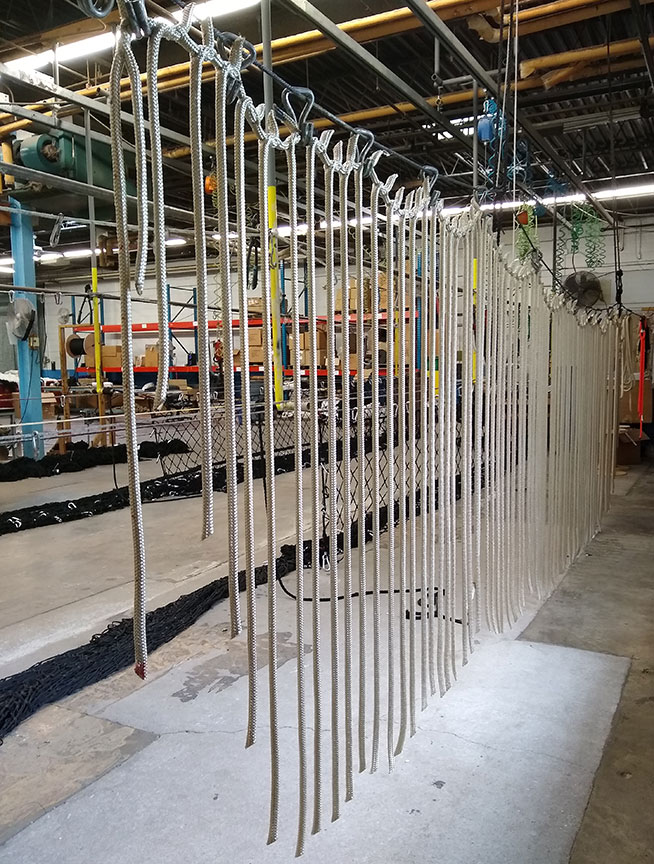
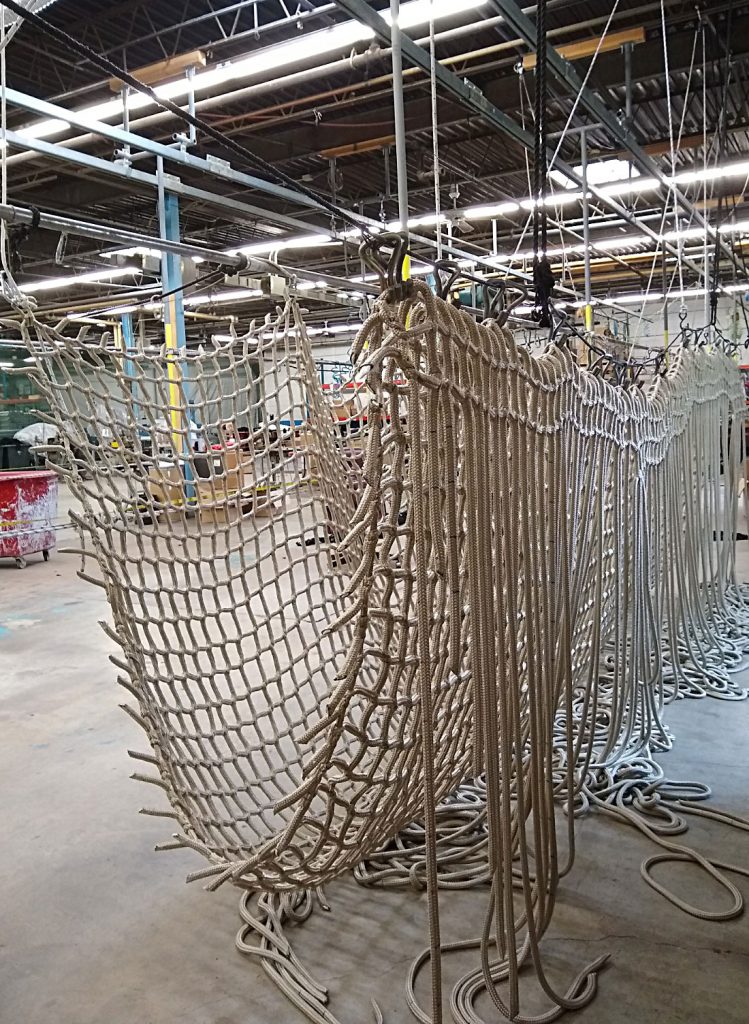
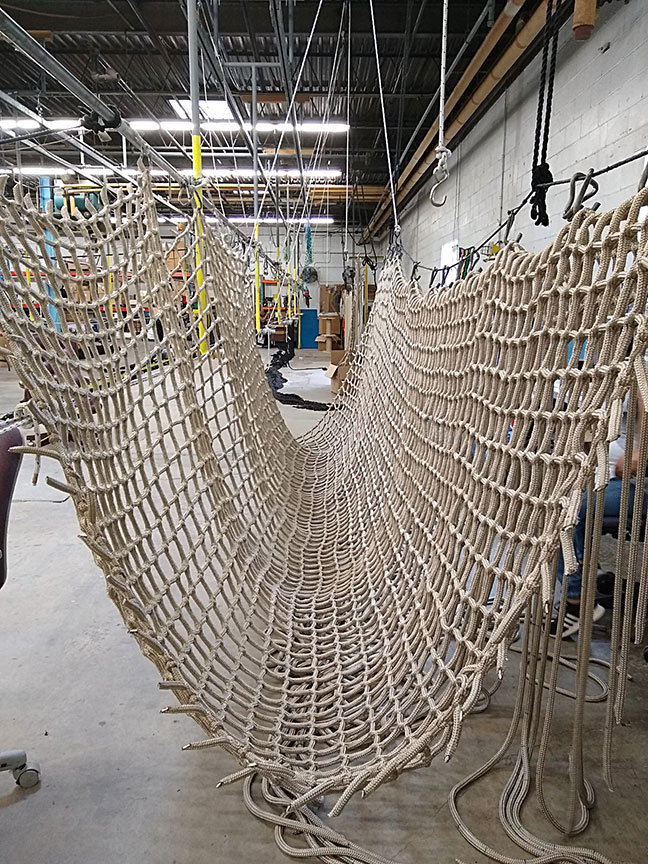 The difference with our climb netting products is that we manufacture them for specific functions. Our 5/8 Climbing Net, is hand woven and meets the ASTM standards for amusement netting. The Supersoft™ rope that the nets are made from is available in over 18 brilliant colors. In the case of the replacement net which we manufactured for the Kidspace rope bridge, we made them a jute colored, 5/8 Shrinking climb net, with a 30K barrier net for the top of the bridge.
The difference with our climb netting products is that we manufacture them for specific functions. Our 5/8 Climbing Net, is hand woven and meets the ASTM standards for amusement netting. The Supersoft™ rope that the nets are made from is available in over 18 brilliant colors. In the case of the replacement net which we manufactured for the Kidspace rope bridge, we made them a jute colored, 5/8 Shrinking climb net, with a 30K barrier net for the top of the bridge.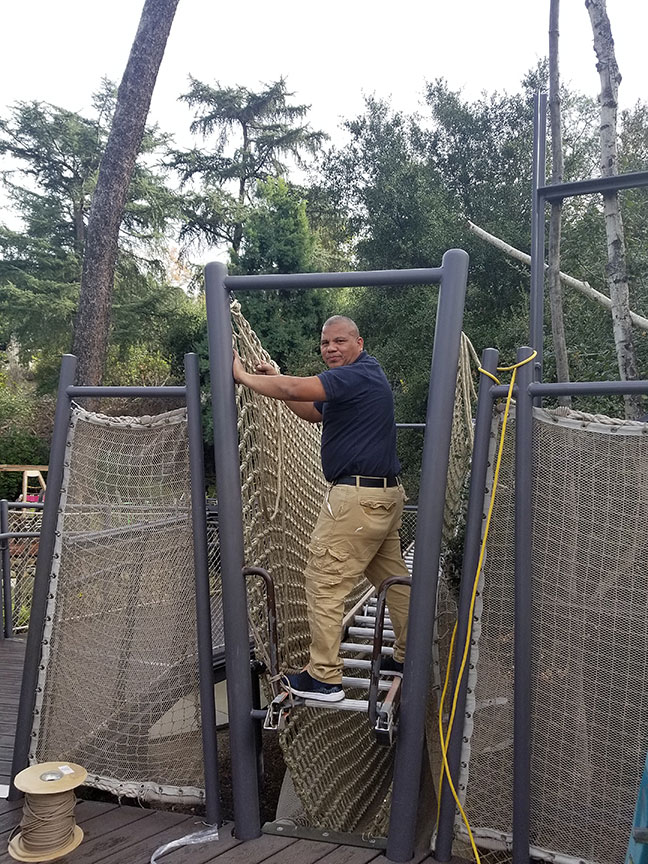
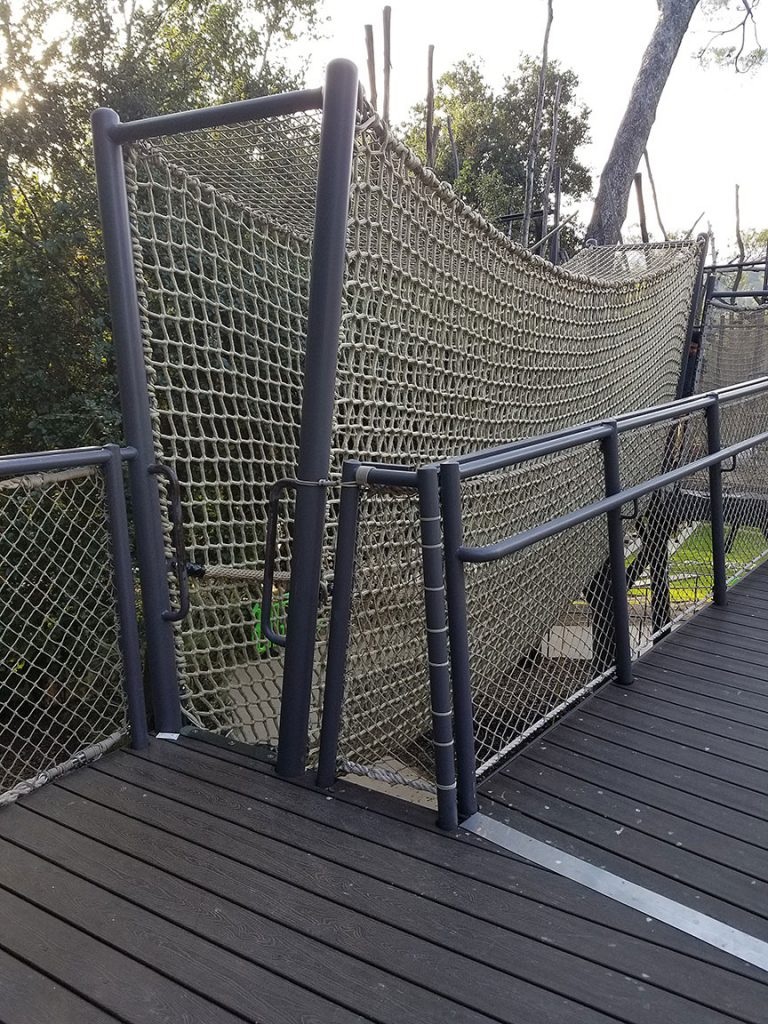
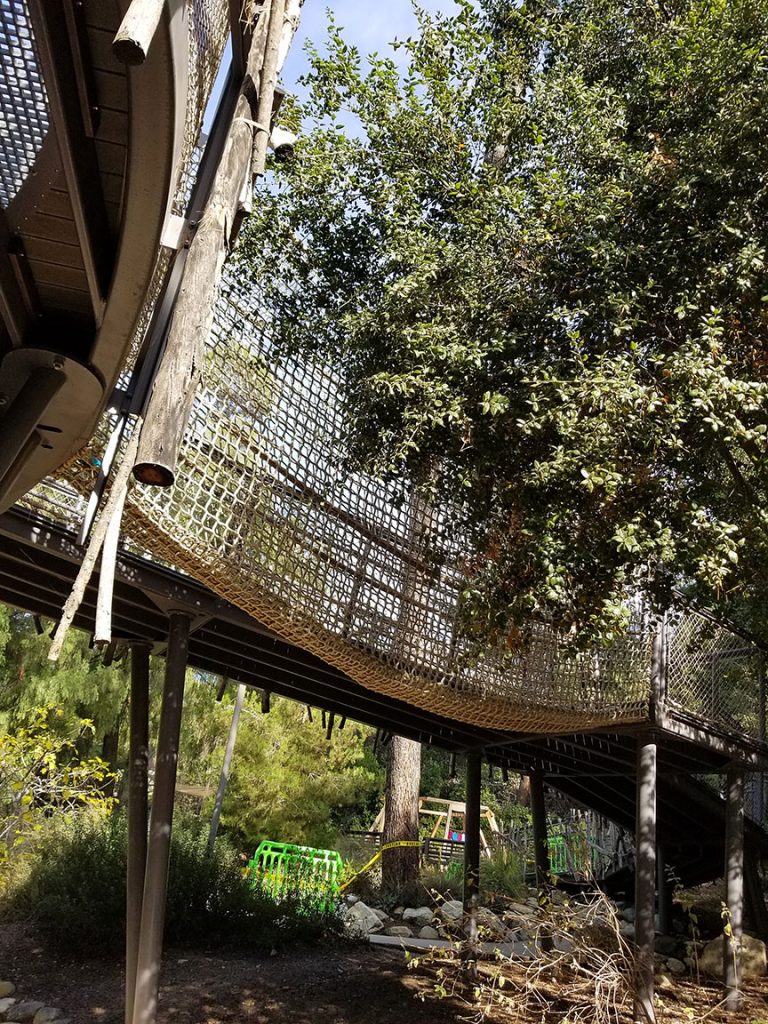
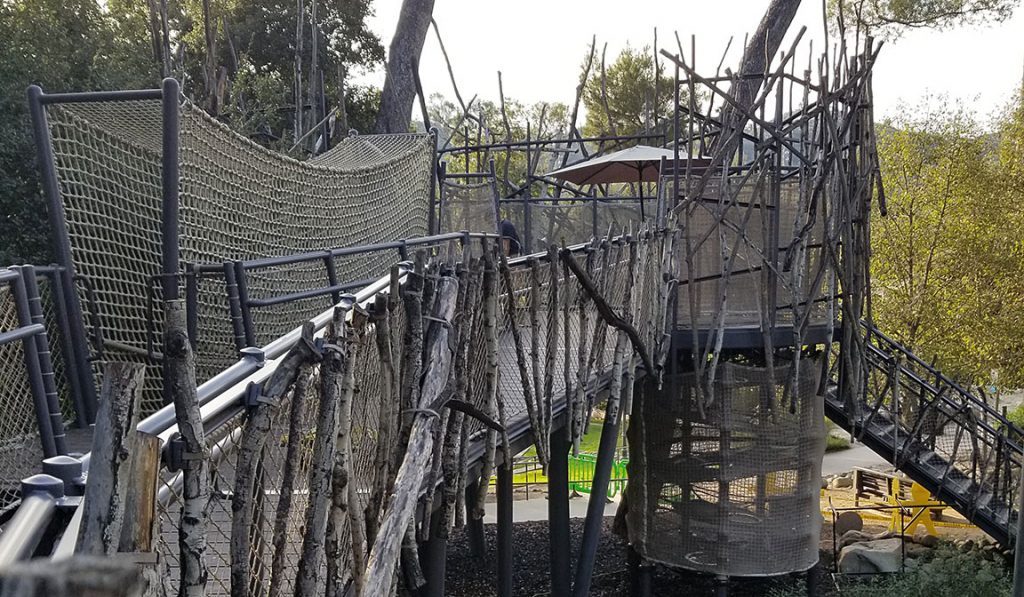 Many active play destinations such as children’s museums and amusement parks will use whatever material a netting re-seller, or net installer provides them. Trusting that they are being provided with a product and a professional installation that will be a good return on their investment. Unfortunately, we’ve seen many situations where an inappropriate product is installed and needs to be replaced before long.
Many active play destinations such as children’s museums and amusement parks will use whatever material a netting re-seller, or net installer provides them. Trusting that they are being provided with a product and a professional installation that will be a good return on their investment. Unfortunately, we’ve seen many situations where an inappropriate product is installed and needs to be replaced before long.

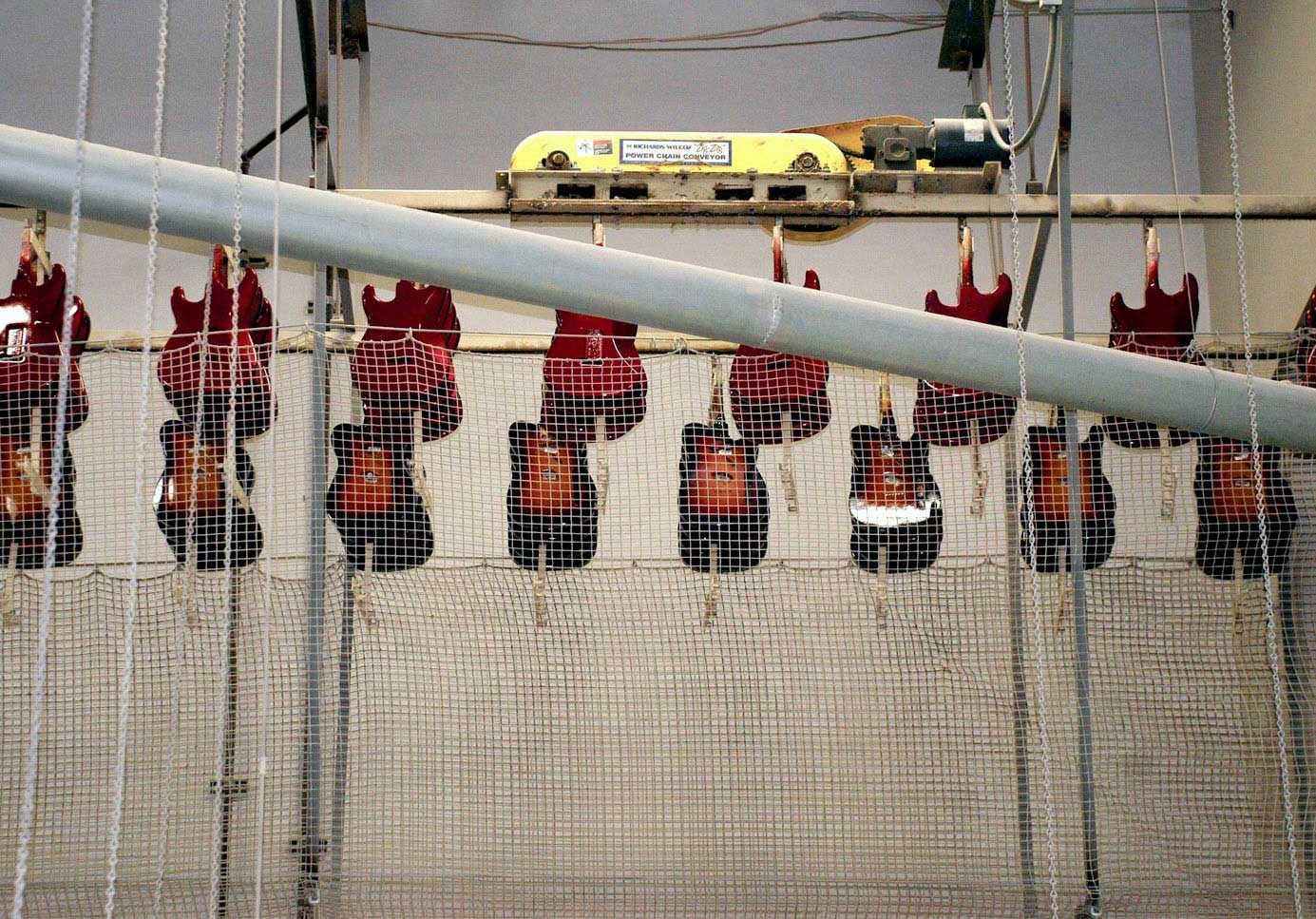




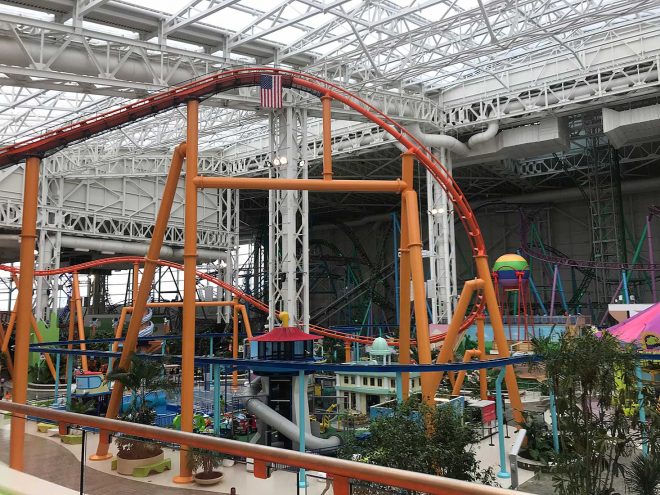
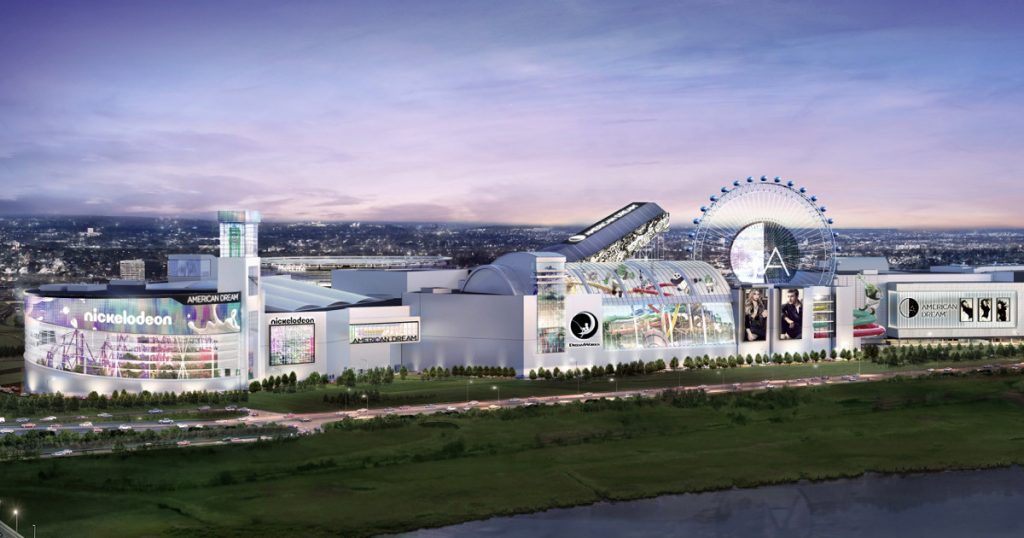
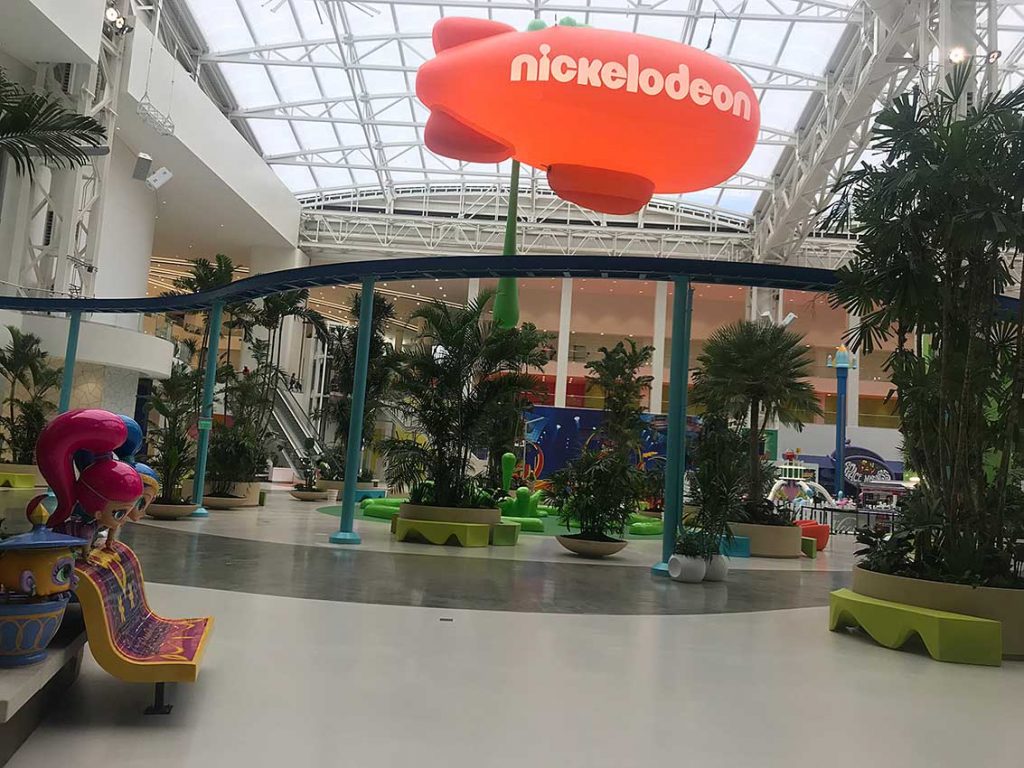
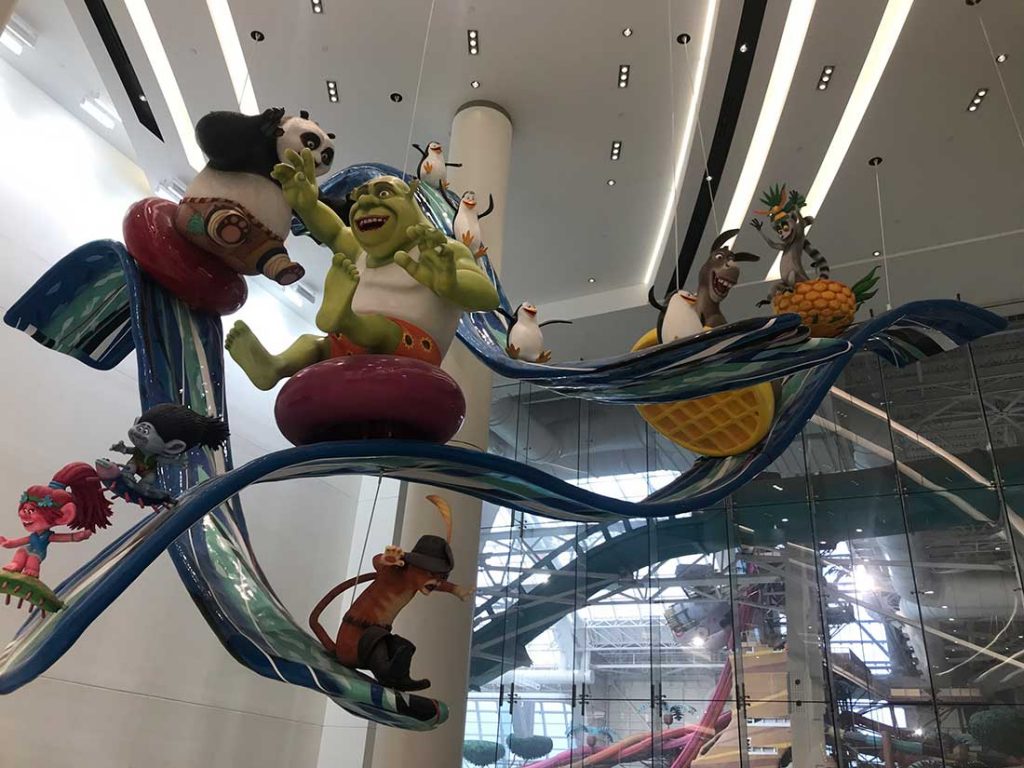 Next to debut will be Big Snow America, featuring an indoor ski slope. Then in March of 2020 the mall’s retail and dining destinations will open. There are supposed to be at least 350 retail stores and 100 dining options and 20 full service restaurants. In addition to that Sea Life Aquarium, Legoland Discovery Center and several movie theaters and the 300’ Observation Wheel will open at the same time.
Next to debut will be Big Snow America, featuring an indoor ski slope. Then in March of 2020 the mall’s retail and dining destinations will open. There are supposed to be at least 350 retail stores and 100 dining options and 20 full service restaurants. In addition to that Sea Life Aquarium, Legoland Discovery Center and several movie theaters and the 300’ Observation Wheel will open at the same time.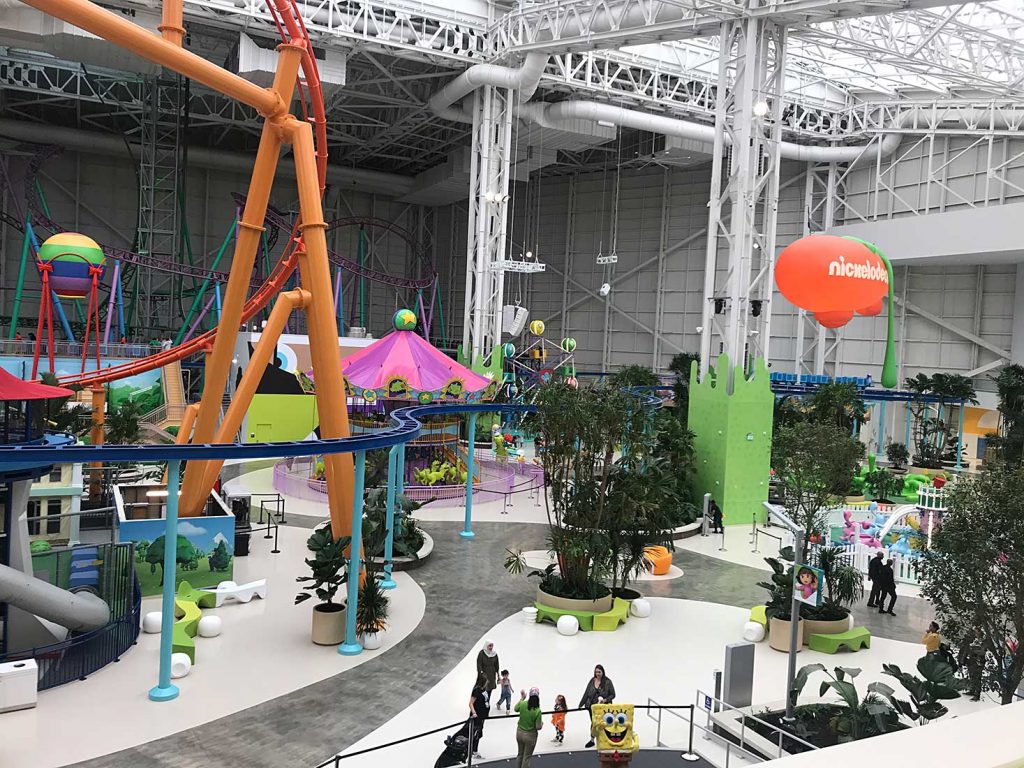
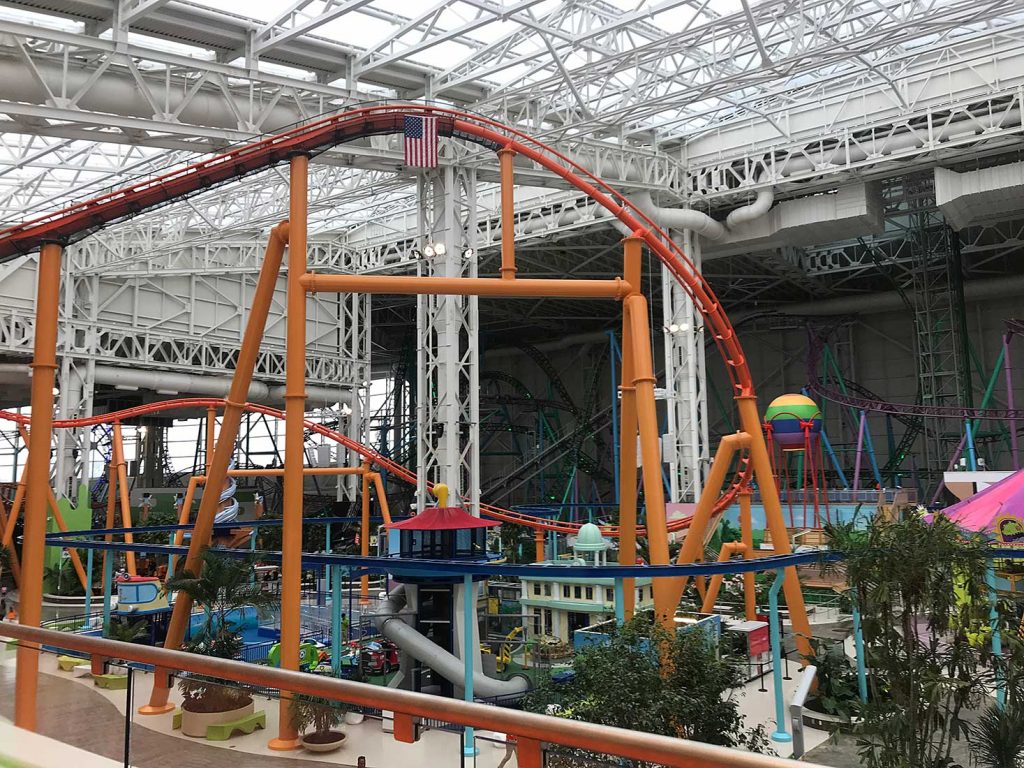 Pucuda-Leading Edge was called into action days before the scheduled opening of Nickelodeon Universe. There was a concern about the possibility of debris falling on the queue lines of visitors while they waited on lines. In the gigantic Nickelodeon Universe indoor amusement park, roller coasters literally zoom over the heads of bystanders waiting below. So we took the trip to New Jersey for a tour of the park and consulted with the onsite engineers about the locations where safety netting and debris netting systems needed to be installed.
Pucuda-Leading Edge was called into action days before the scheduled opening of Nickelodeon Universe. There was a concern about the possibility of debris falling on the queue lines of visitors while they waited on lines. In the gigantic Nickelodeon Universe indoor amusement park, roller coasters literally zoom over the heads of bystanders waiting below. So we took the trip to New Jersey for a tour of the park and consulted with the onsite engineers about the locations where safety netting and debris netting systems needed to be installed.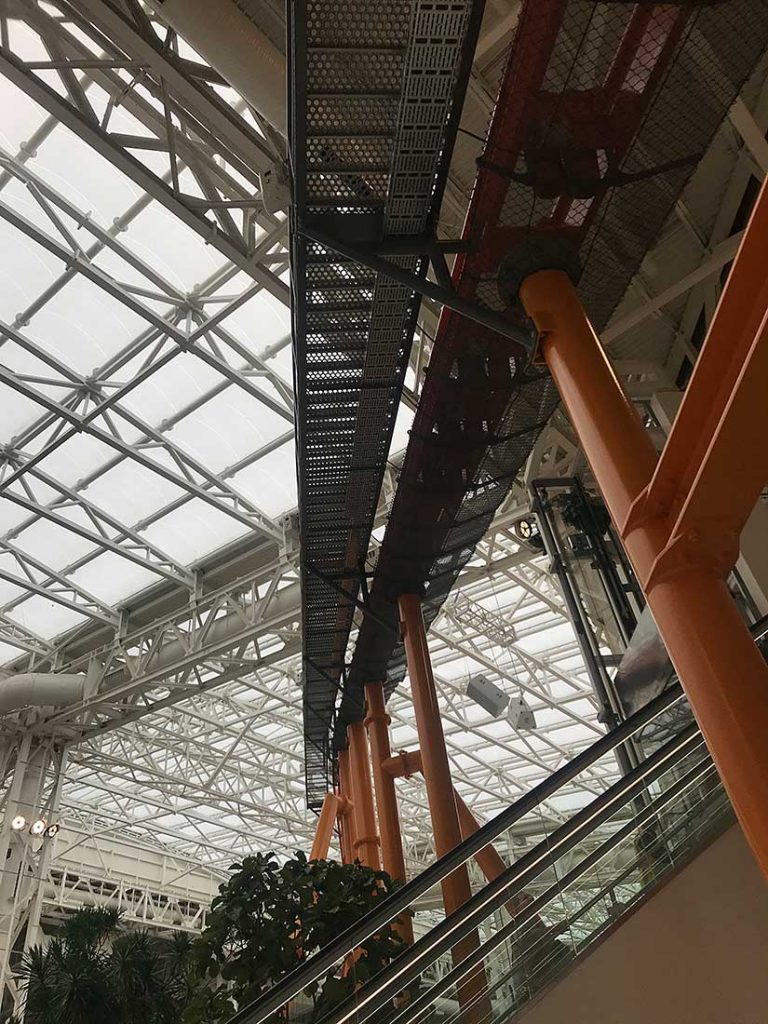
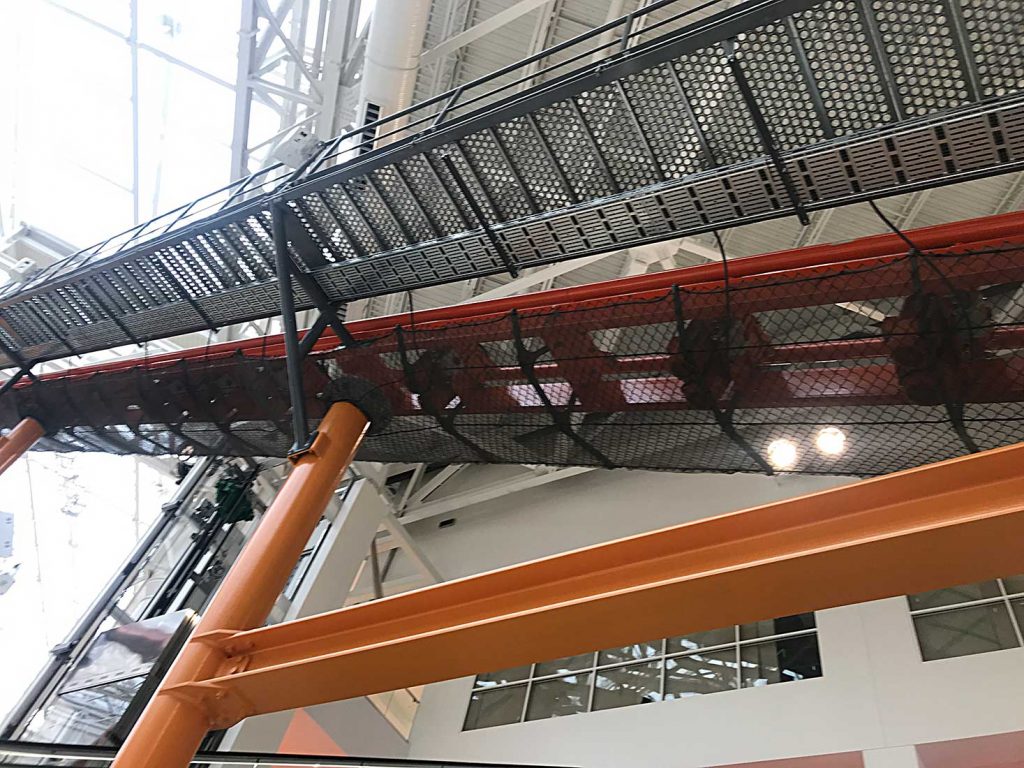
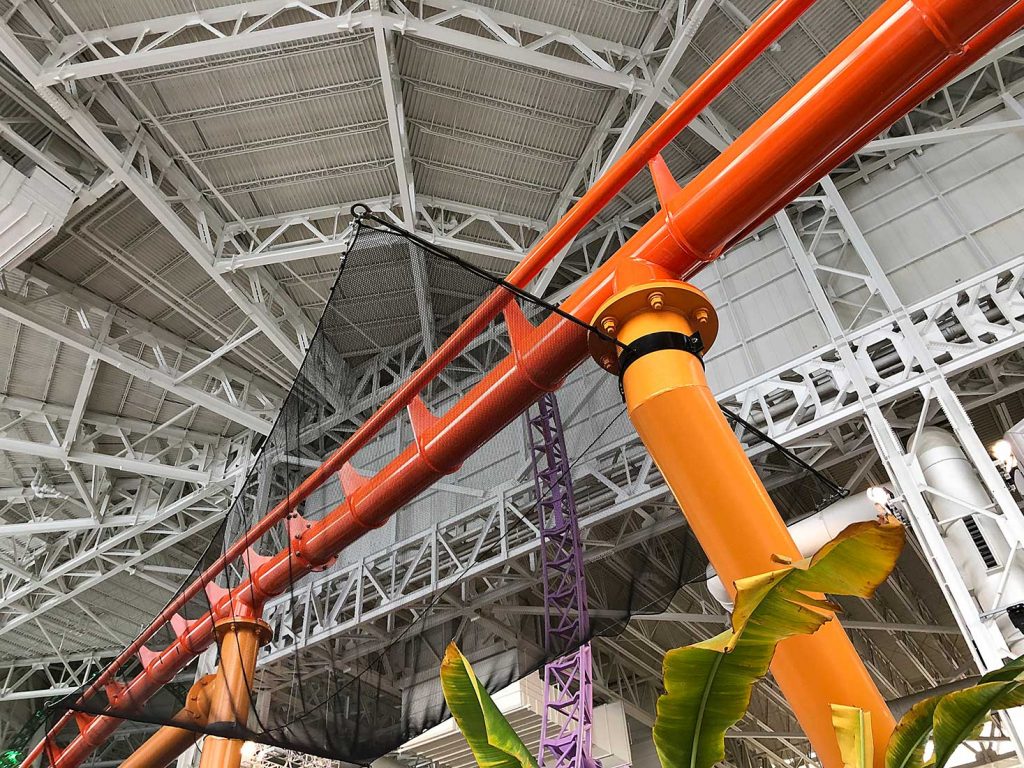
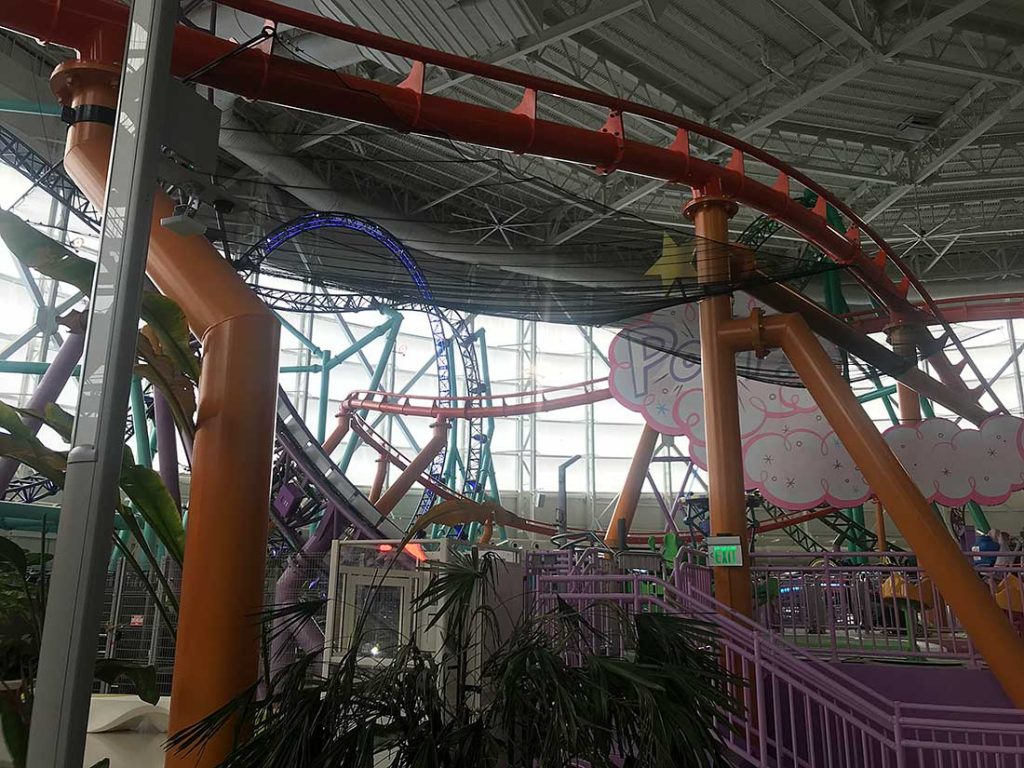
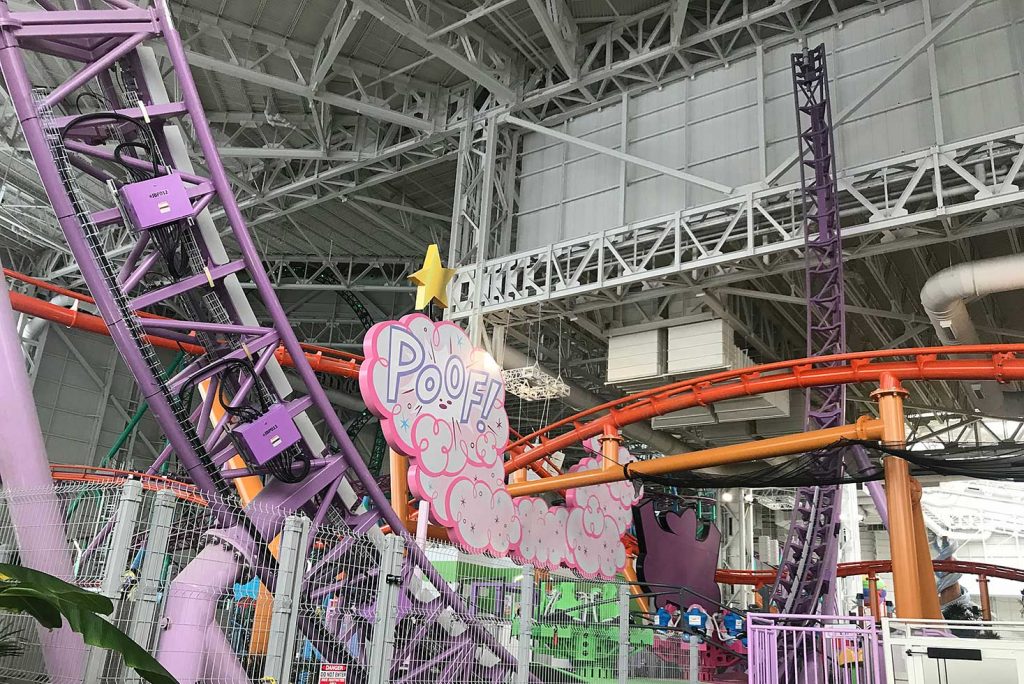 The installation of our ride safety netting systems at American Dream went smoothly and we did a final walk through of the Nickelodeon Universe. Some of the Pucuda staff are thinking of a special mid-winter trip to check out Catch the PerfectSwell at the massive wave pool at Dreamworks Water Park, because it’s cheaper than a trip to Hawaii.
The installation of our ride safety netting systems at American Dream went smoothly and we did a final walk through of the Nickelodeon Universe. Some of the Pucuda staff are thinking of a special mid-winter trip to check out Catch the PerfectSwell at the massive wave pool at Dreamworks Water Park, because it’s cheaper than a trip to Hawaii.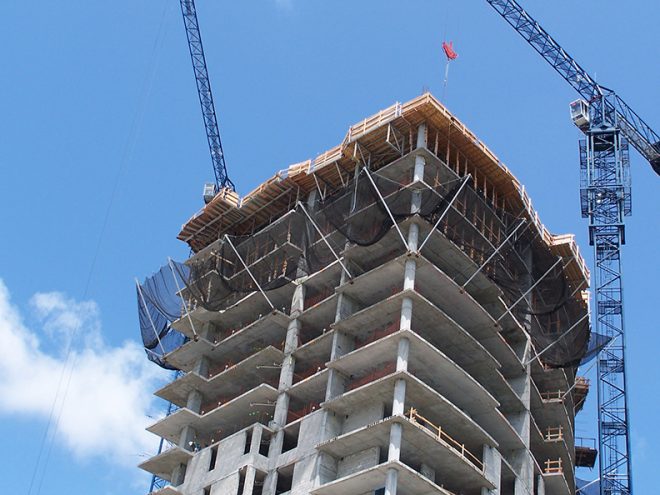
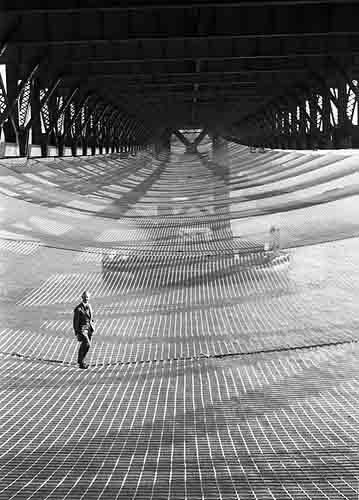
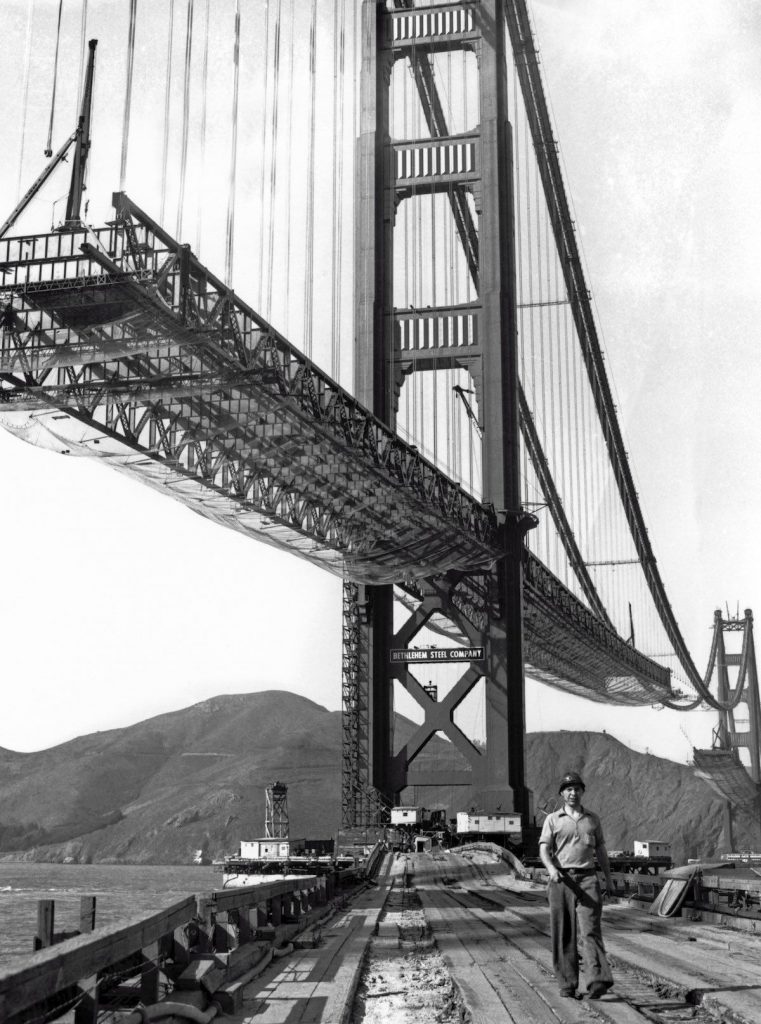
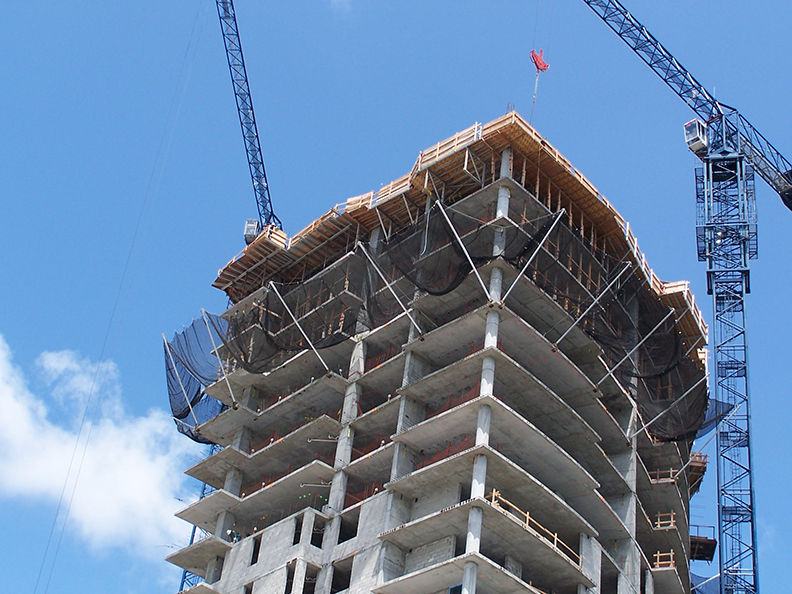
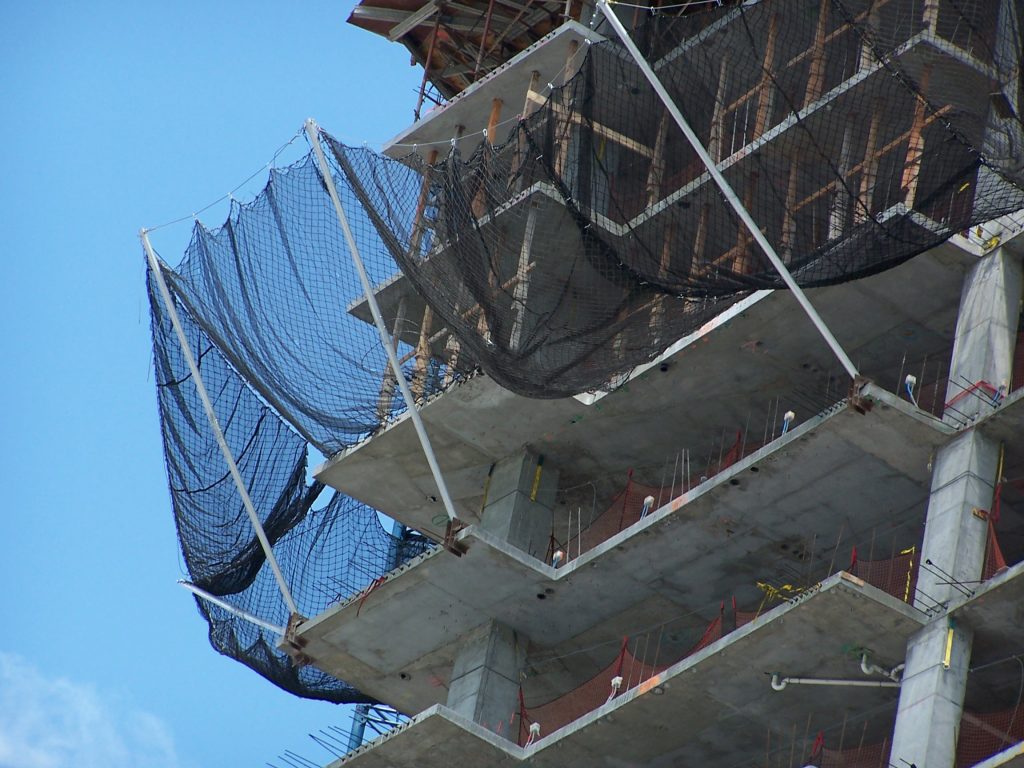 Why is passive safety the best way to protect a construction jobsite? Because human beings are fallible and accidents happen all the time through carelessness and poor decisions. The problem that occurs is that certain manufacturers are distributing horizontal safety nets systems which fail to meet the standards as set by ASTM, ASSE/ANSI, OSHA and The Army Corps of Engineers. In short this is what people are entitled to know about a safety netting system.
Why is passive safety the best way to protect a construction jobsite? Because human beings are fallible and accidents happen all the time through carelessness and poor decisions. The problem that occurs is that certain manufacturers are distributing horizontal safety nets systems which fail to meet the standards as set by ASTM, ASSE/ANSI, OSHA and The Army Corps of Engineers. In short this is what people are entitled to know about a safety netting system.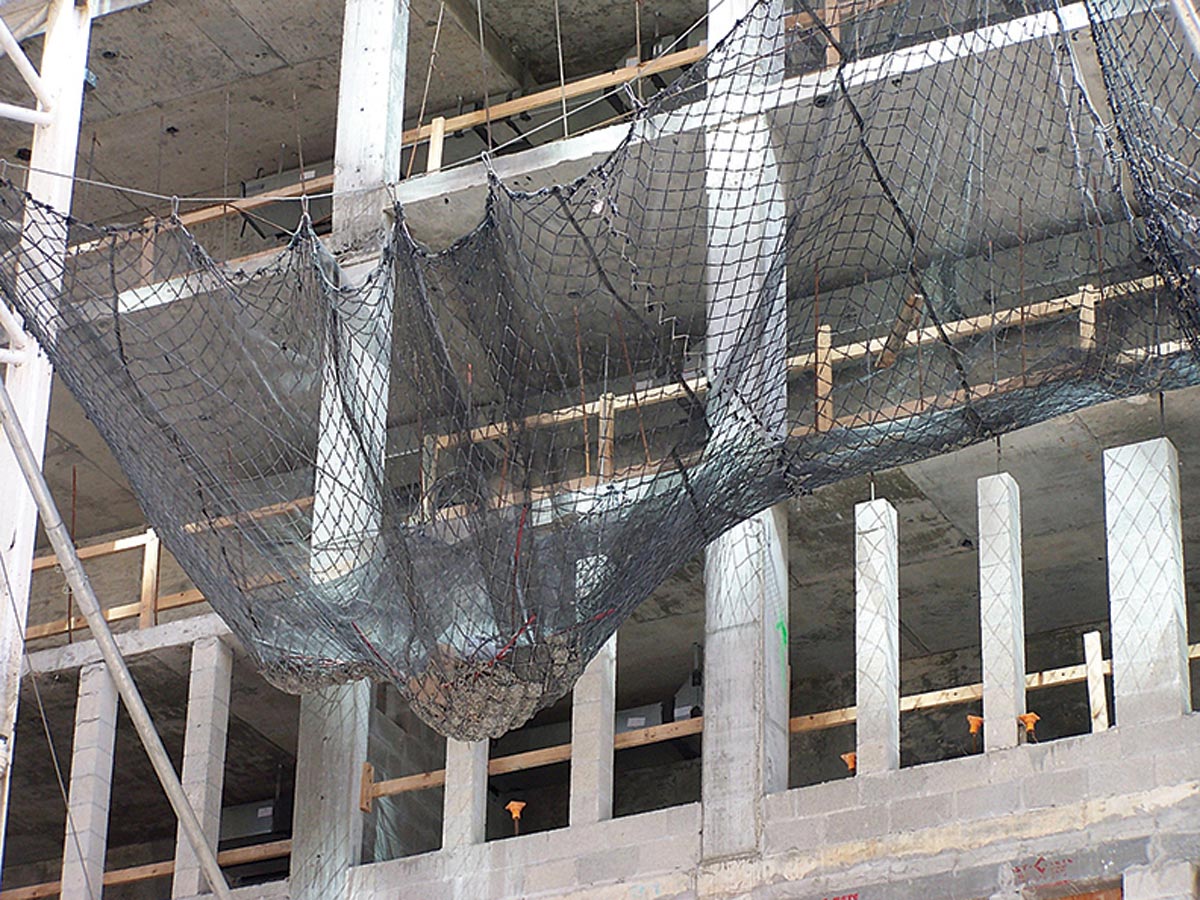
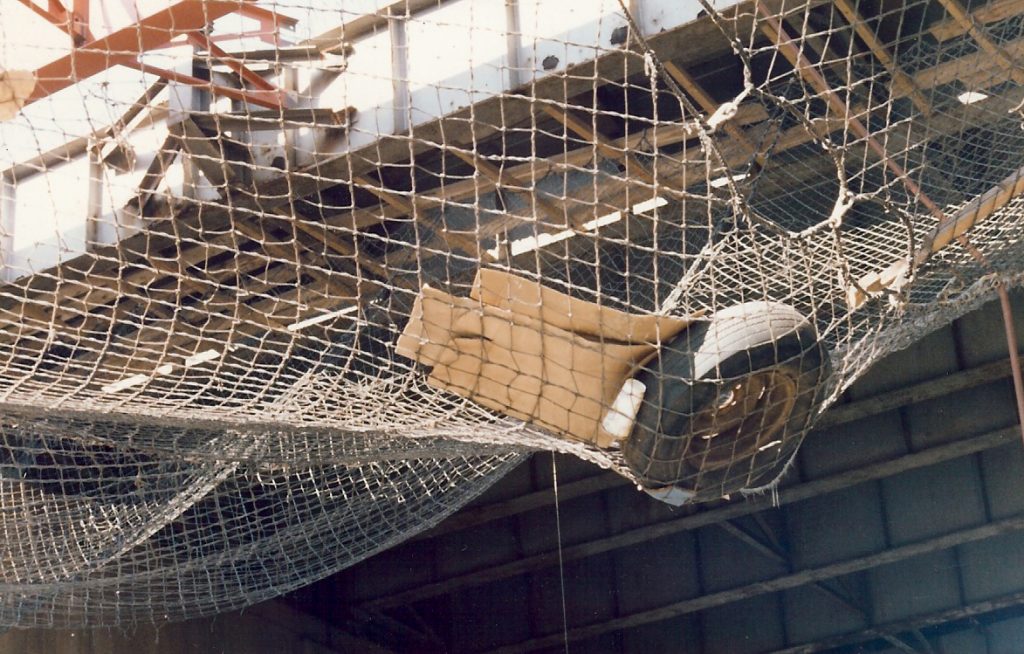
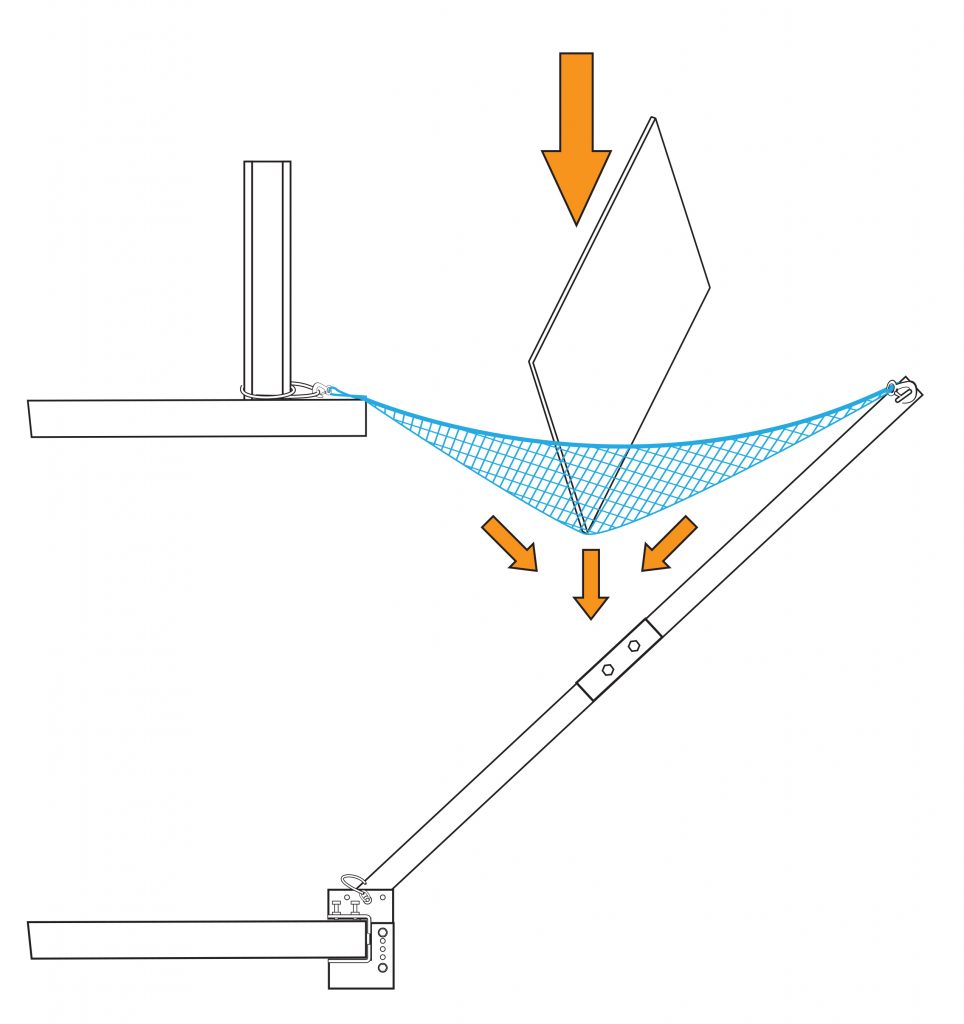
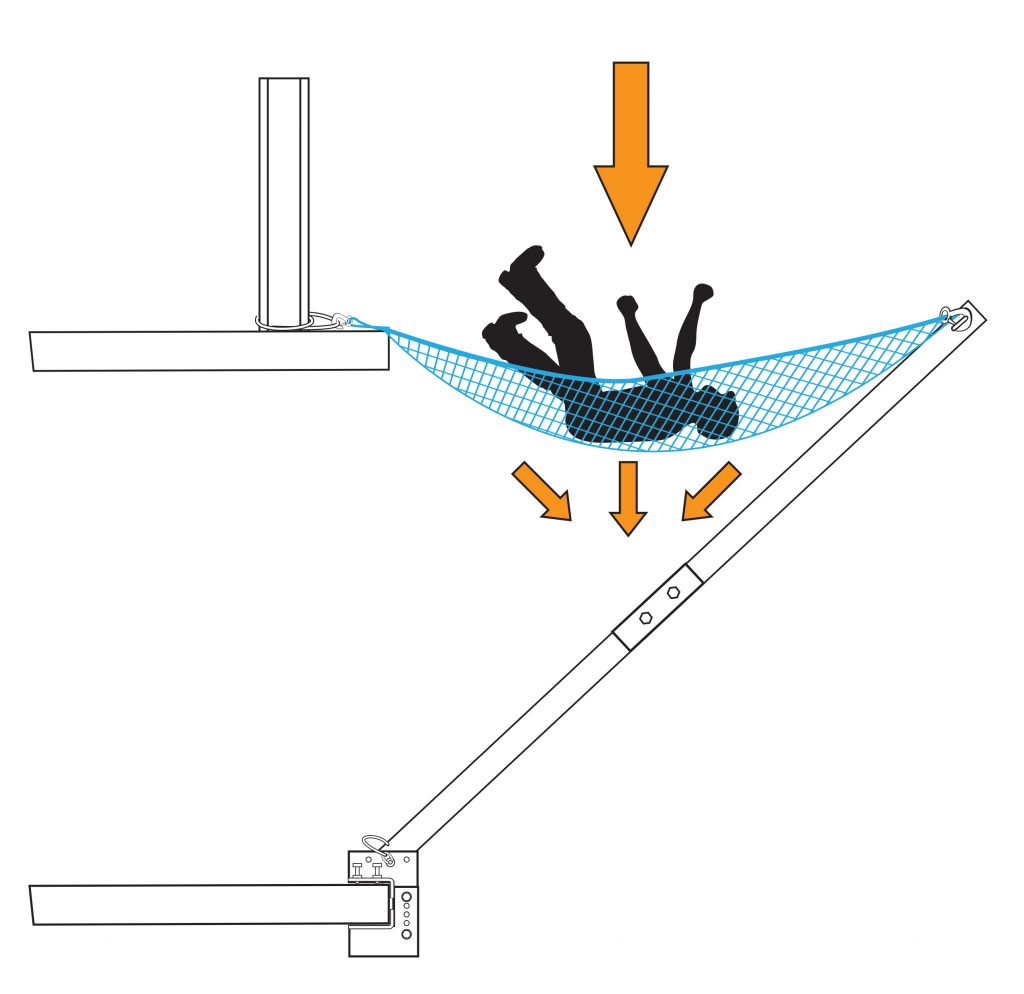
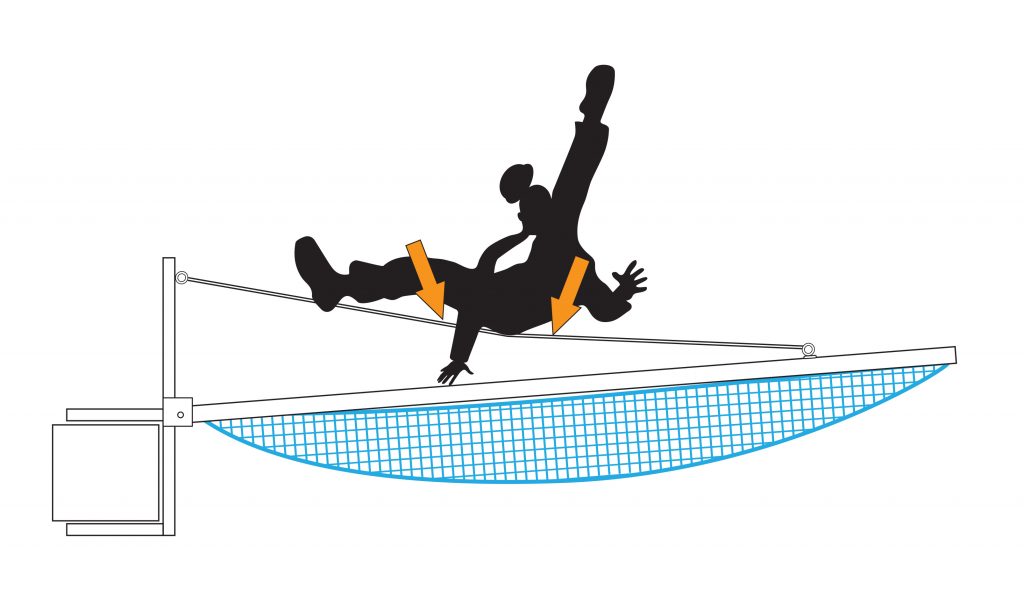
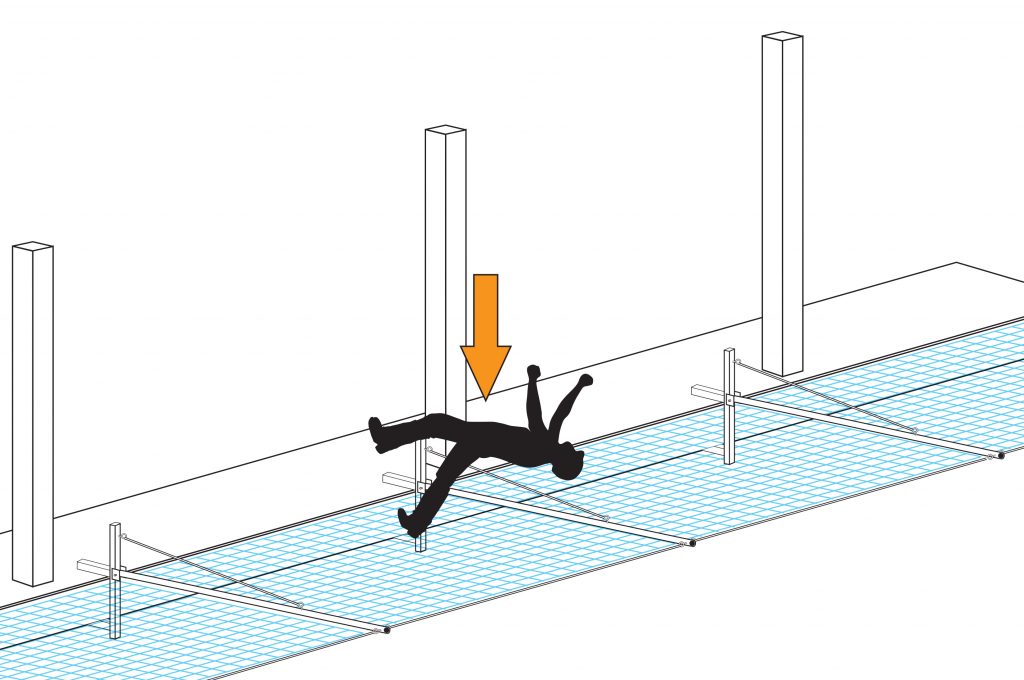
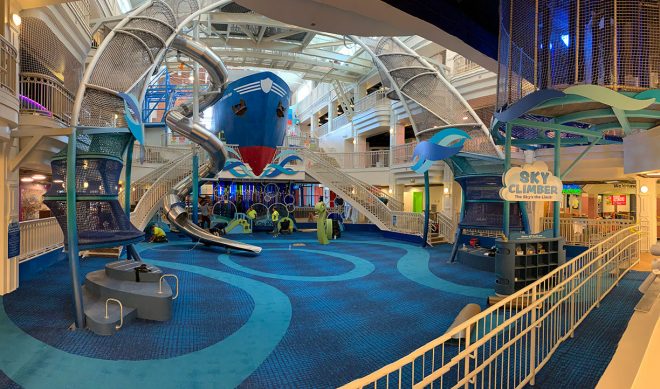
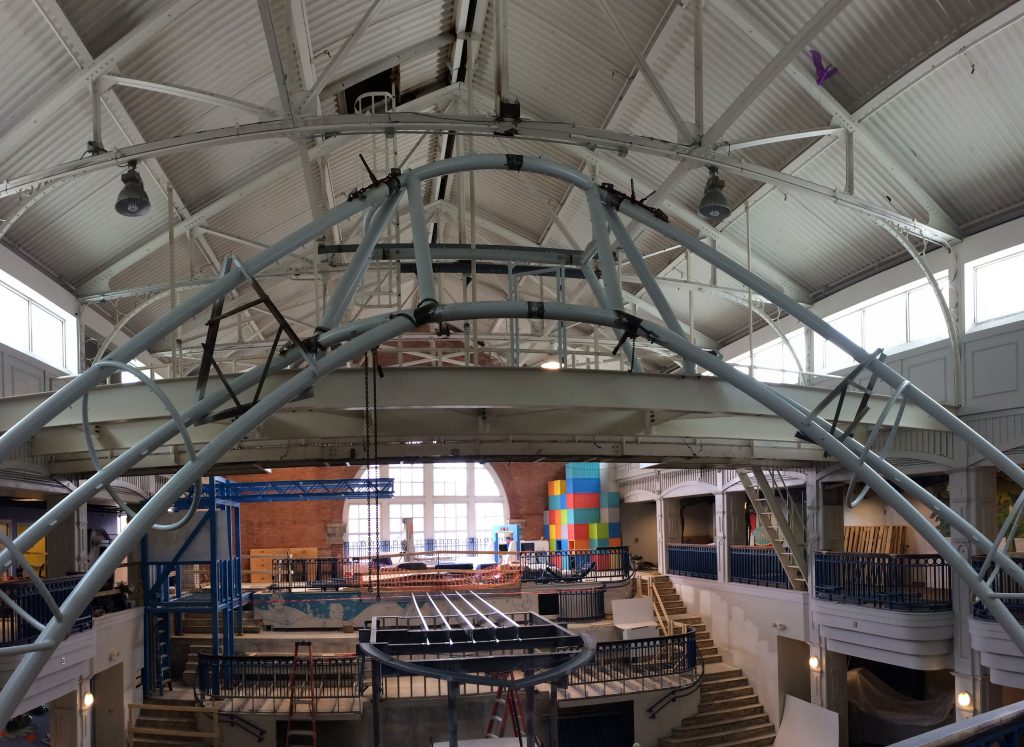
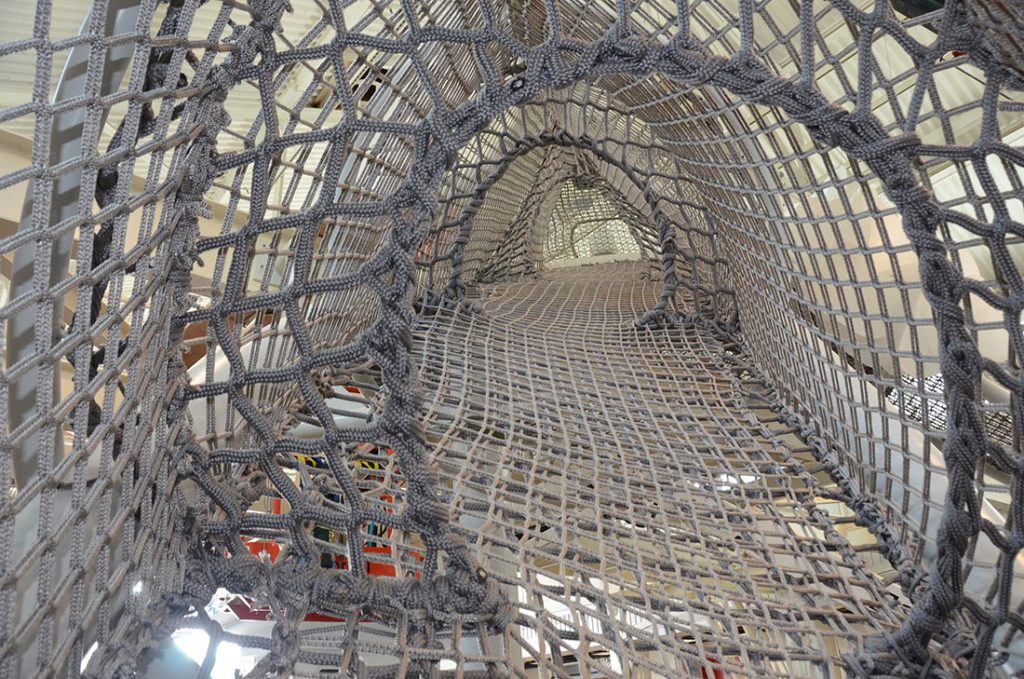
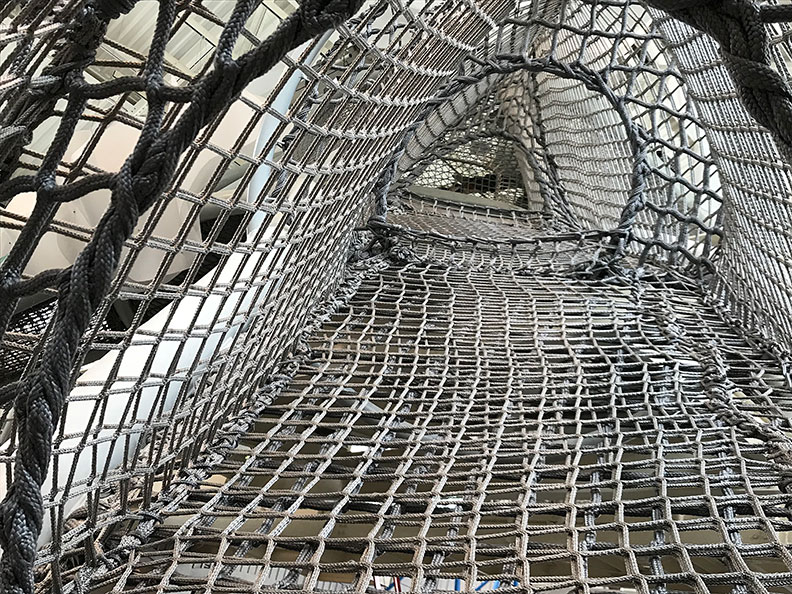 After looking at prototype models for sections of the Roto units we were able to advise attachment locations and methods before fabrication of the structure started. On location at Port Discovery, where a huge remodeling effort was underway, there were many contractors involved in different phases of the project.
After looking at prototype models for sections of the Roto units we were able to advise attachment locations and methods before fabrication of the structure started. On location at Port Discovery, where a huge remodeling effort was underway, there were many contractors involved in different phases of the project.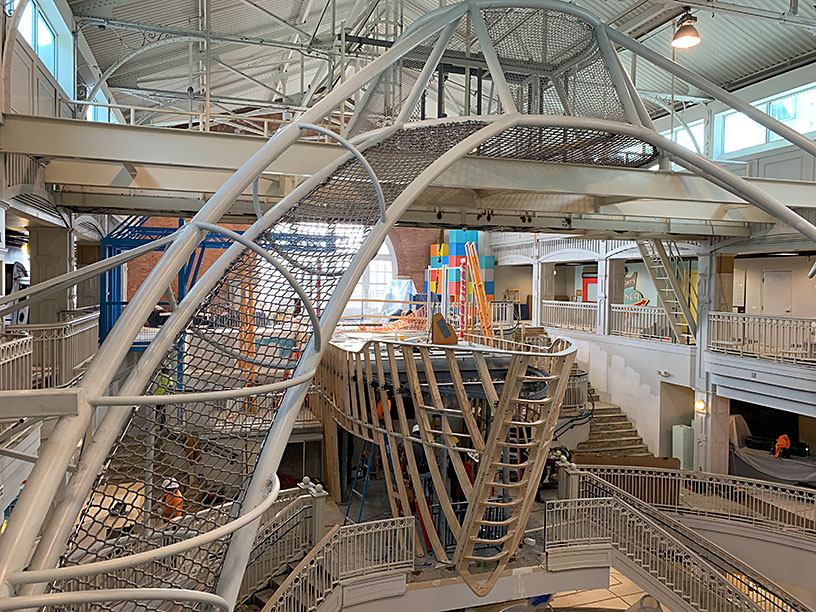
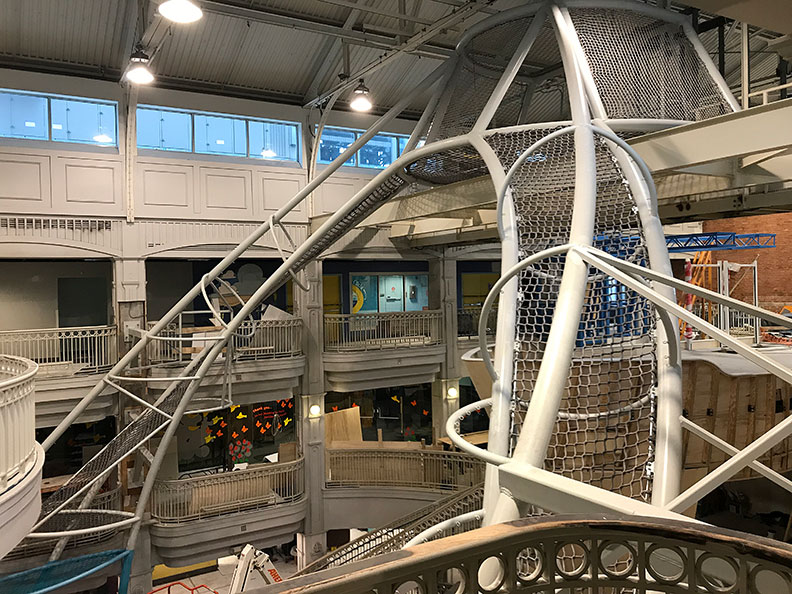
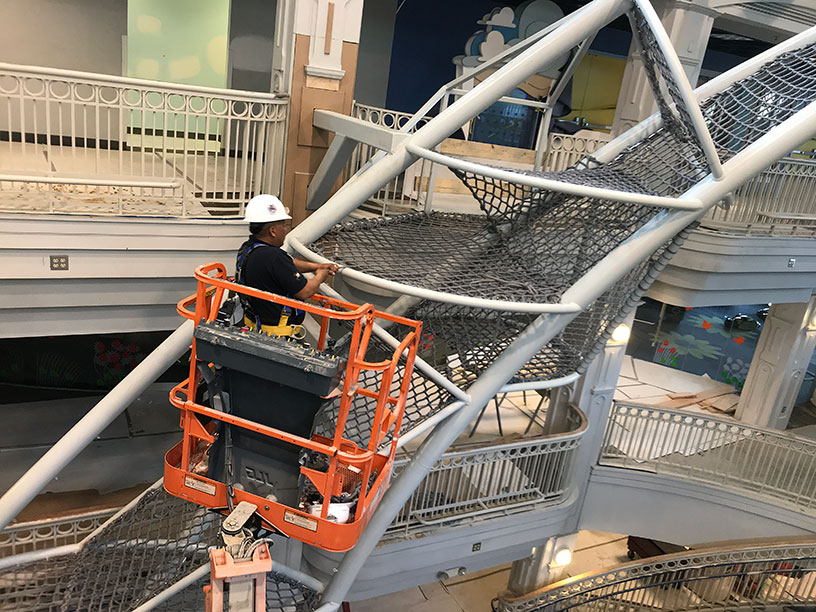
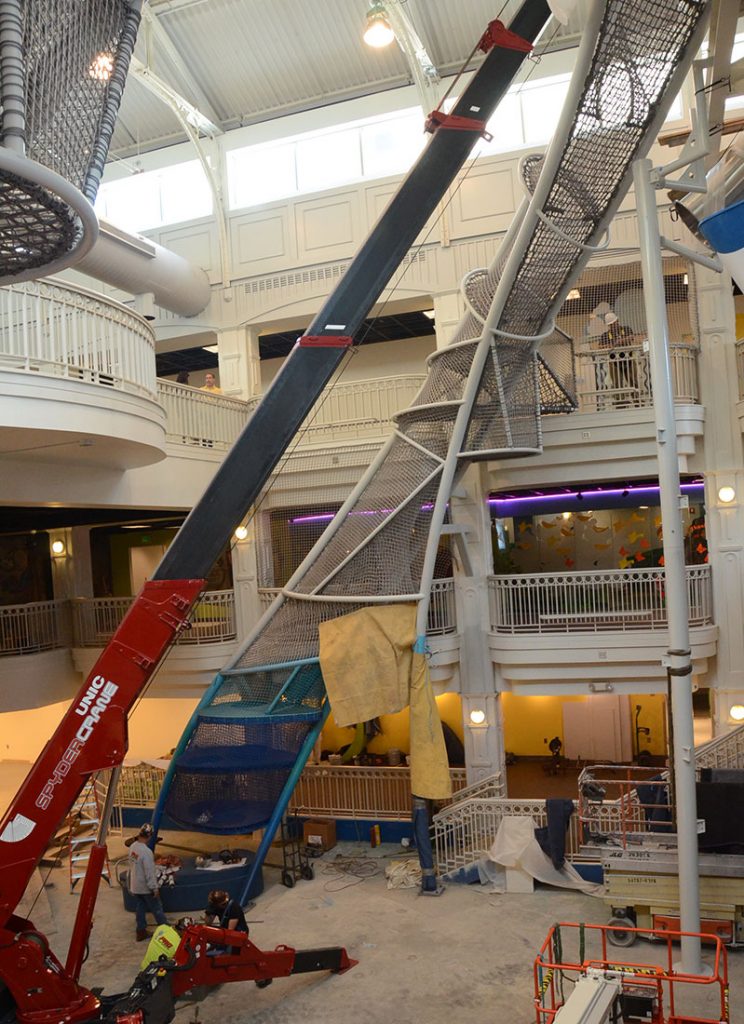
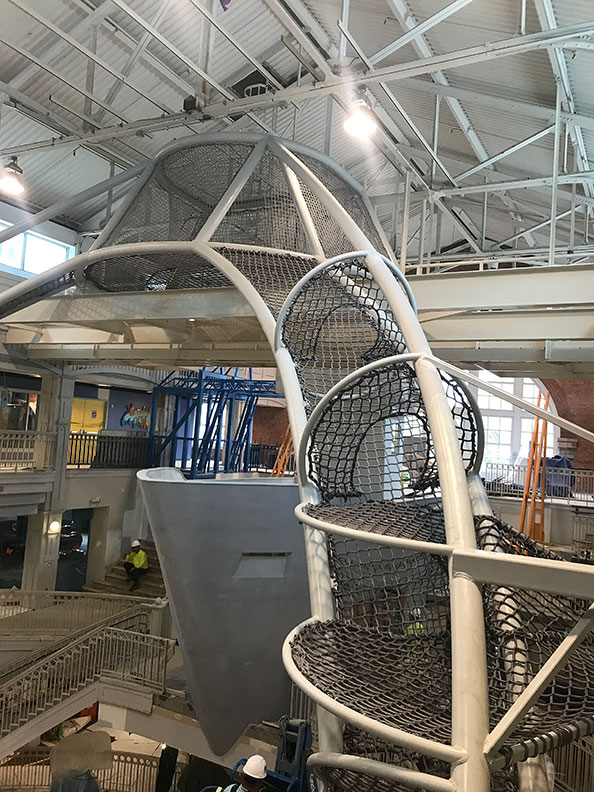
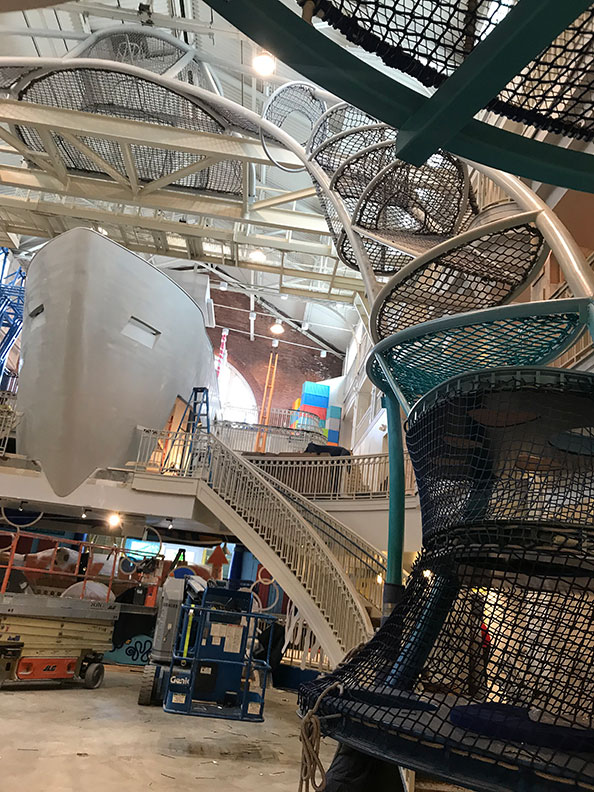
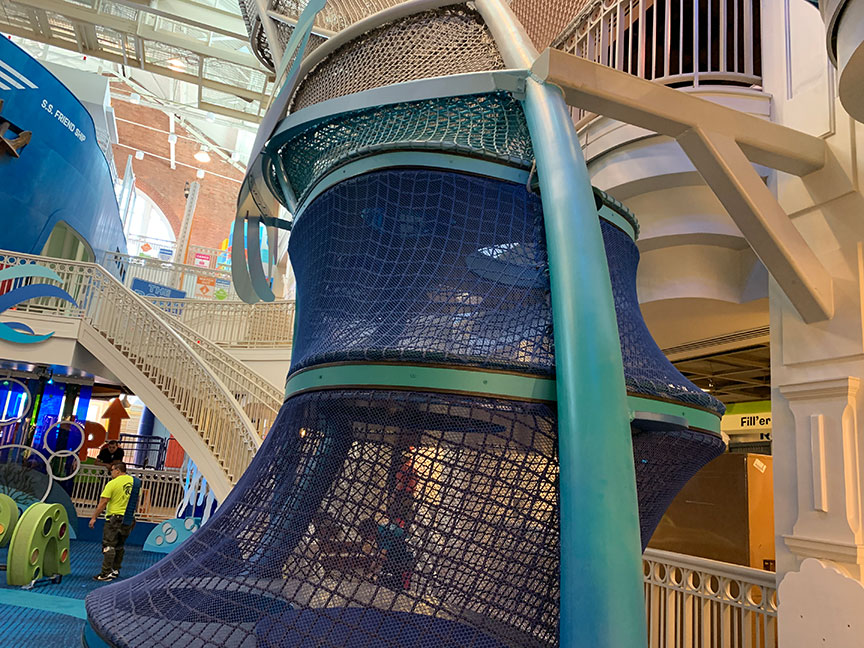
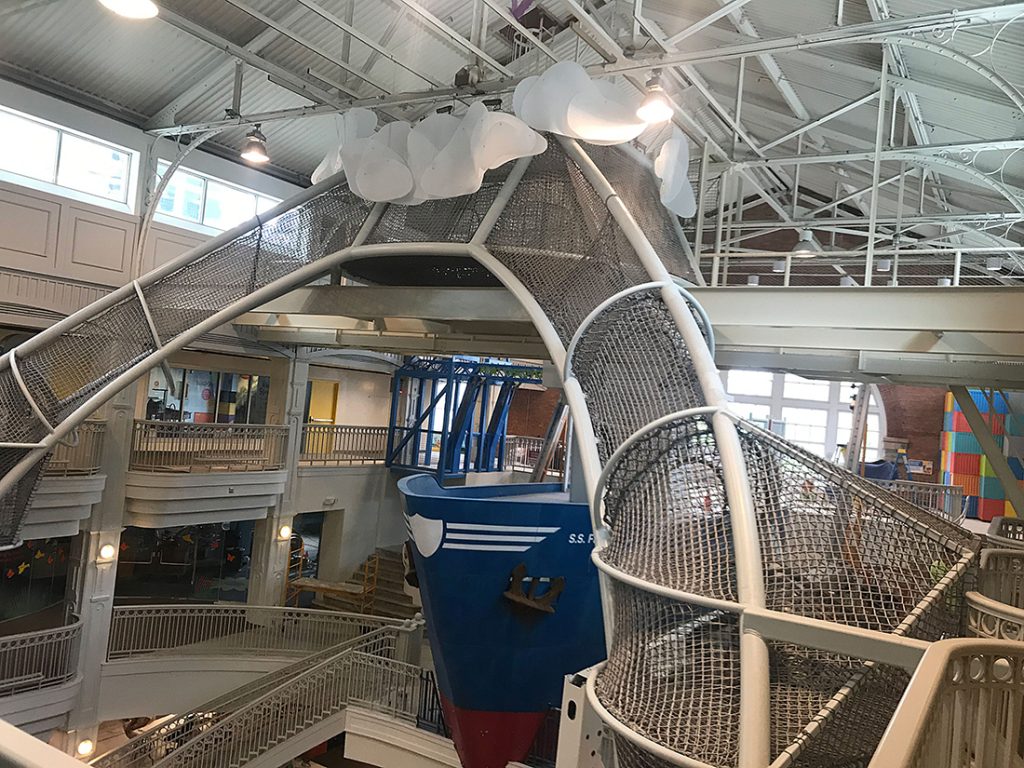
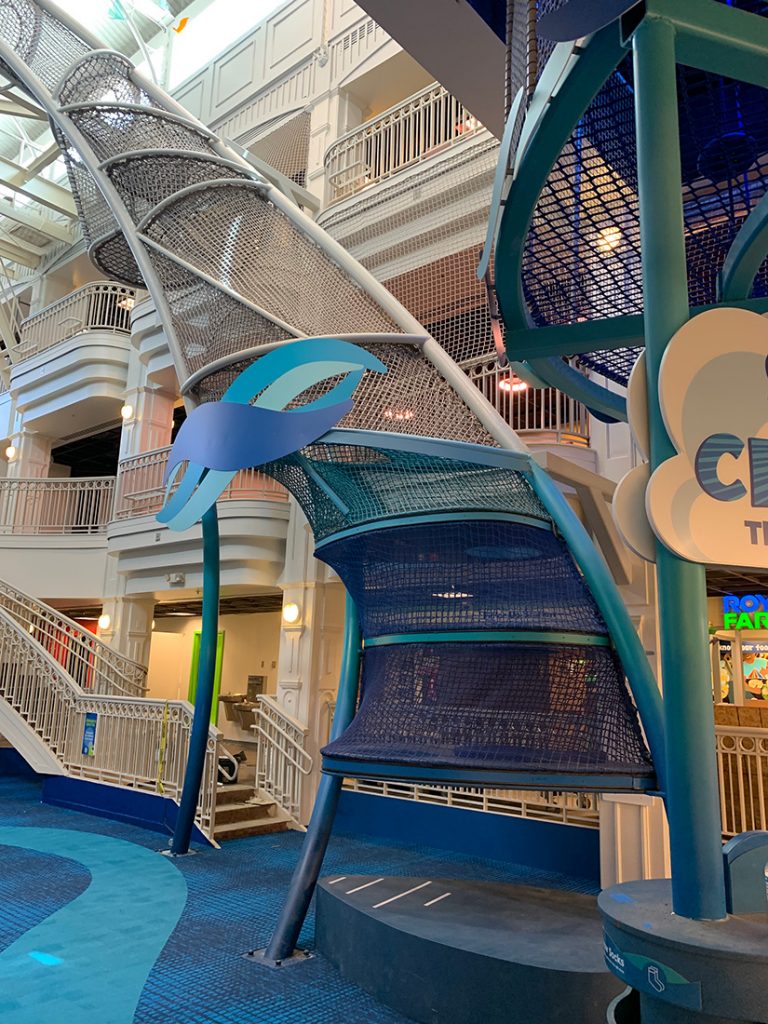
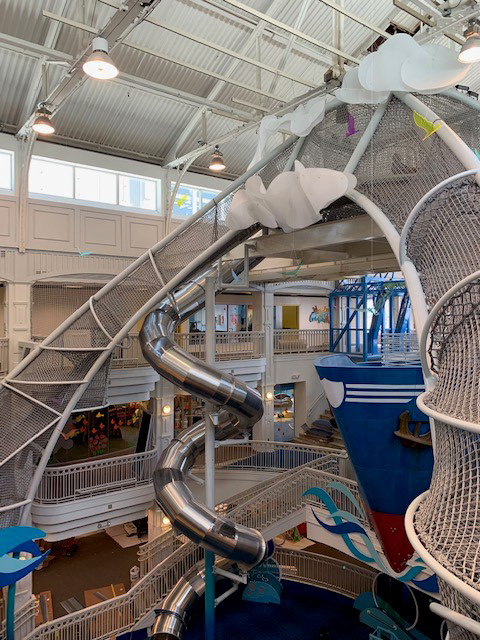
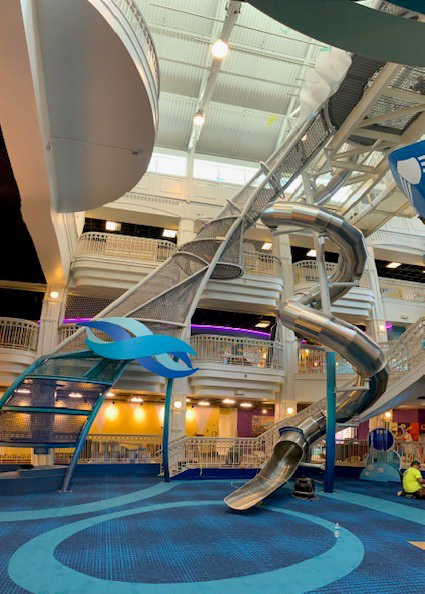 In addition to manufacturing and installing all climbing and barrier netting in the Climber Unit, Pucuda was also responsible for all the netting and activities in The Think Tank. This is a partially wheelchair accessible elevated area, which features soft play opportunities for people with disabilities.
In addition to manufacturing and installing all climbing and barrier netting in the Climber Unit, Pucuda was also responsible for all the netting and activities in The Think Tank. This is a partially wheelchair accessible elevated area, which features soft play opportunities for people with disabilities.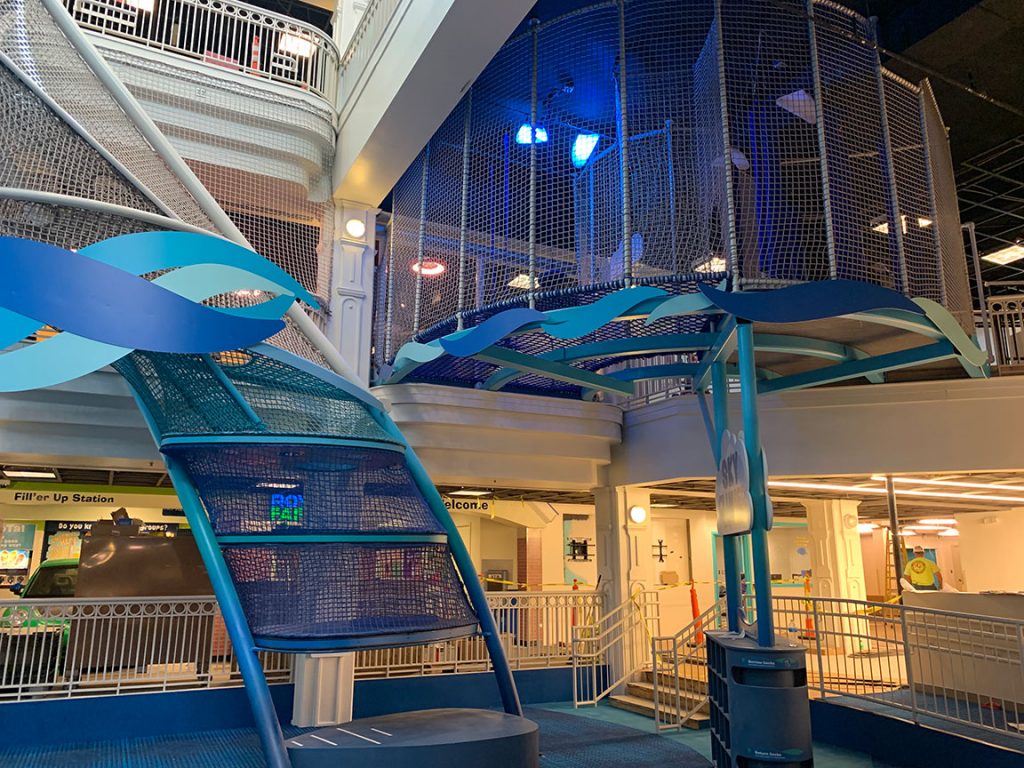
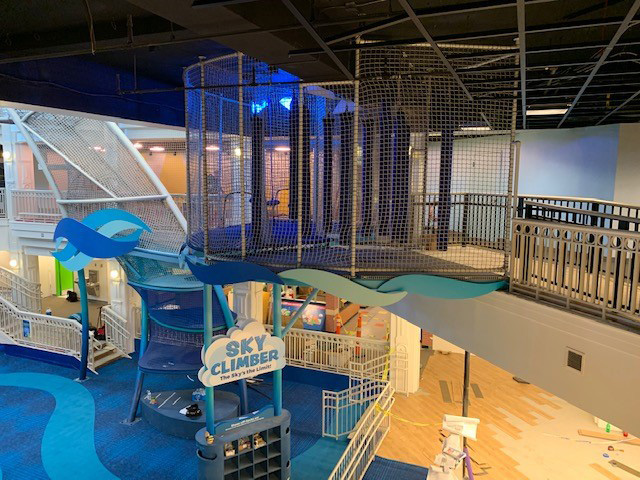
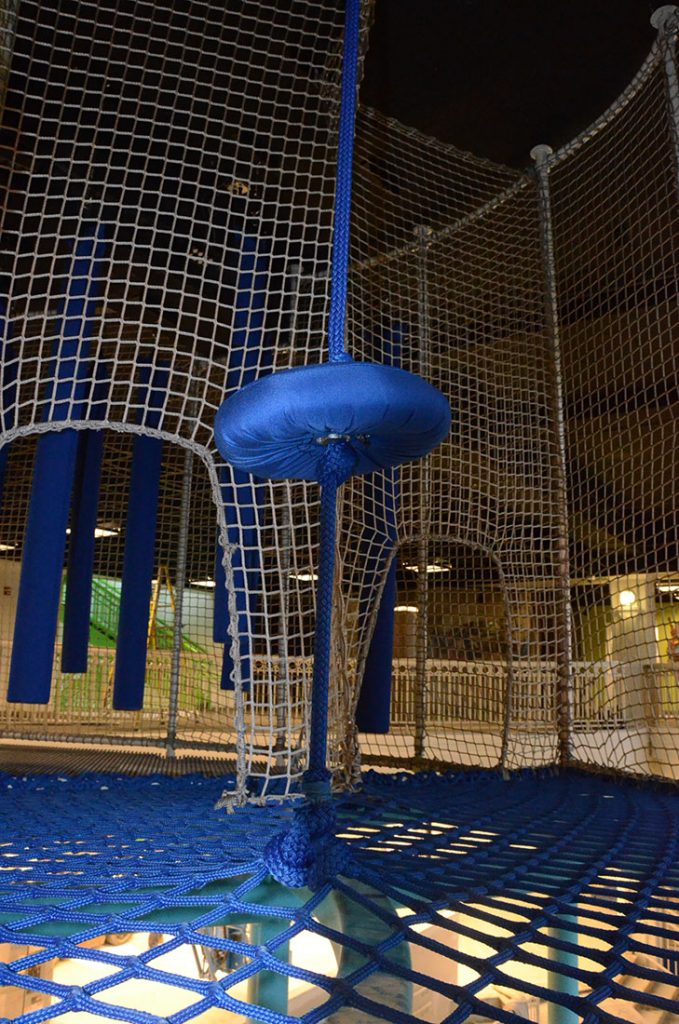
 In summation, we’d like to showcase the revolutionary netting product used in Roto’s climbing structures at Port Discovery: our patented Shrinking NetTM. This net is custom made by hand from our Shrinking Rope and is one of our most popular products. It’s usually used in situations where a platform net is required because it is highly resilient and provides a durable non-sagging climbing experience. Because of its’ patented design and materials, the netting tightens when water is applied: this results in a tight installation of the net — with no sagging. We produce our climbing net in 19 brilliant colors. Check out the brochures on our website for more information. Or better yet, call us up for a sample!
In summation, we’d like to showcase the revolutionary netting product used in Roto’s climbing structures at Port Discovery: our patented Shrinking NetTM. This net is custom made by hand from our Shrinking Rope and is one of our most popular products. It’s usually used in situations where a platform net is required because it is highly resilient and provides a durable non-sagging climbing experience. Because of its’ patented design and materials, the netting tightens when water is applied: this results in a tight installation of the net — with no sagging. We produce our climbing net in 19 brilliant colors. Check out the brochures on our website for more information. Or better yet, call us up for a sample!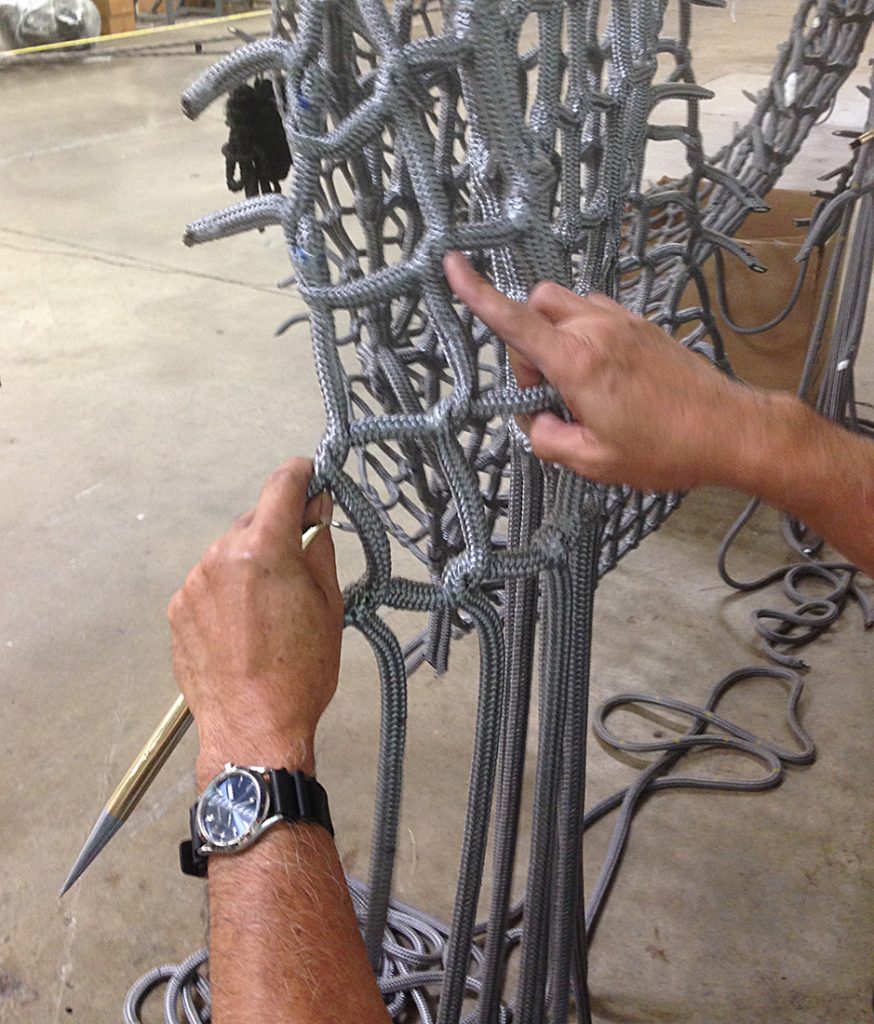
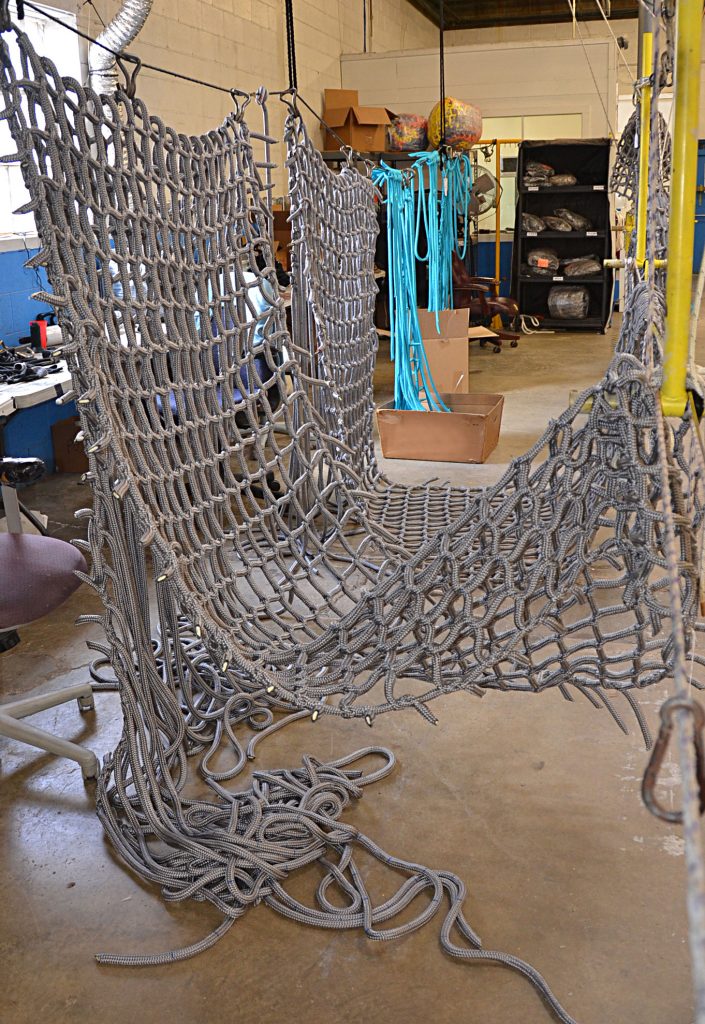
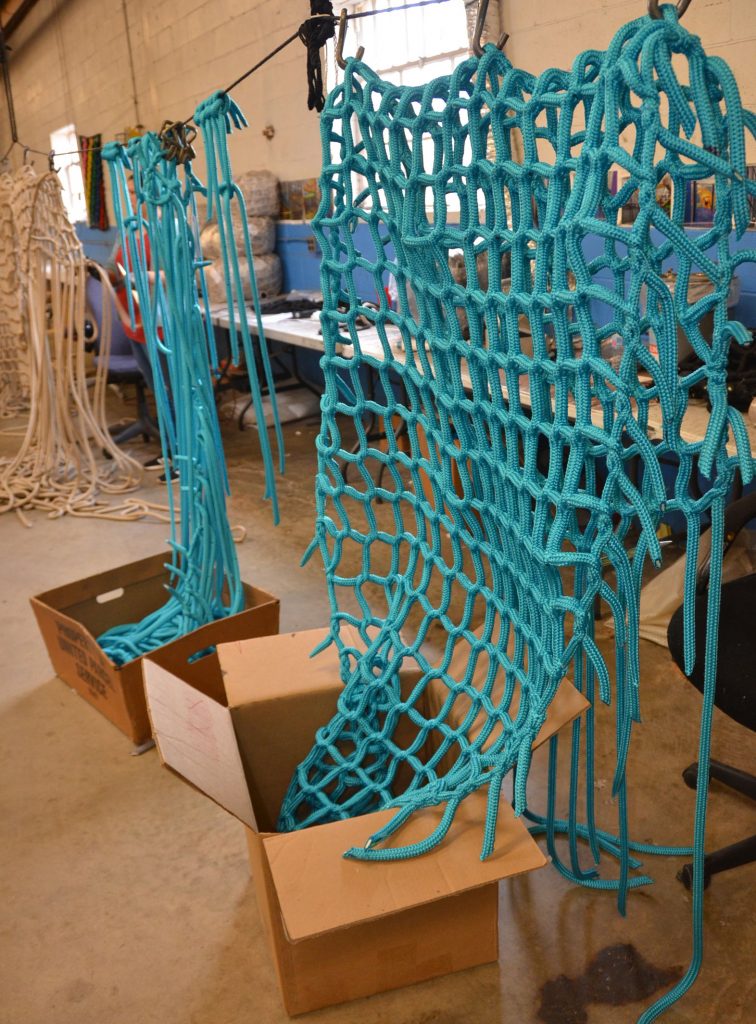
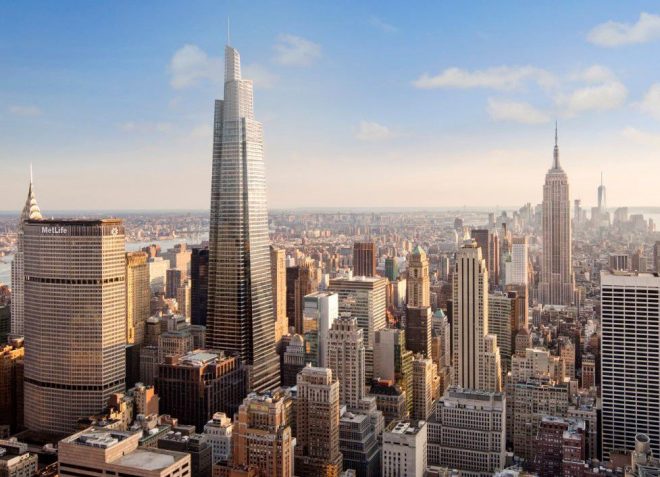
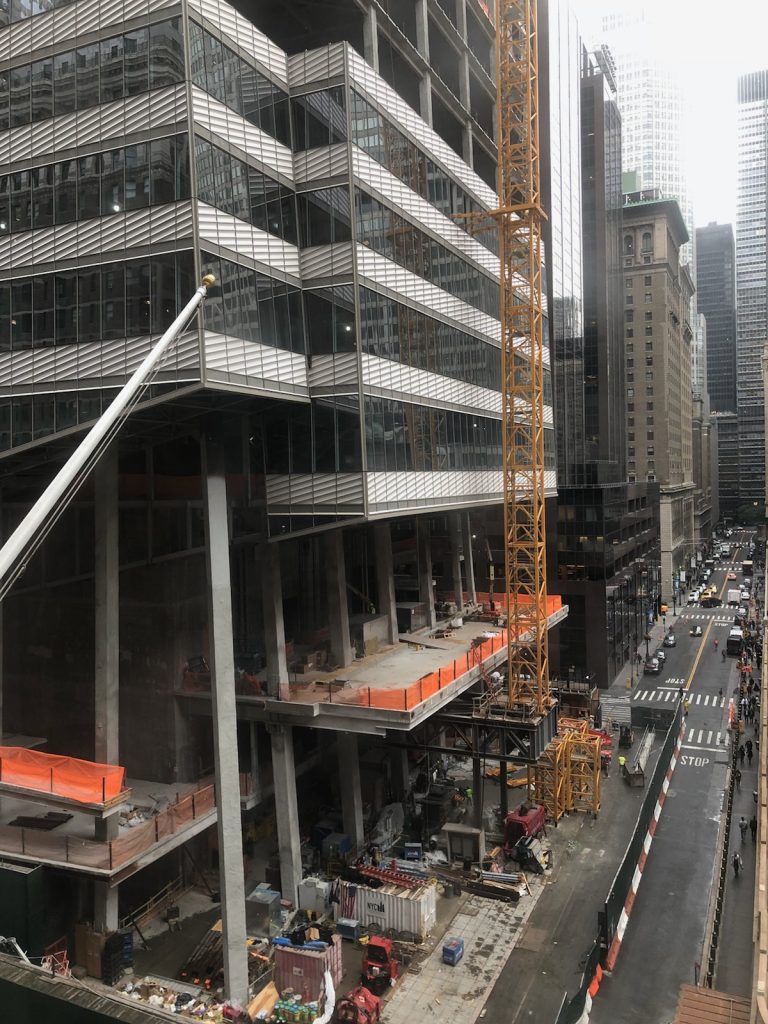
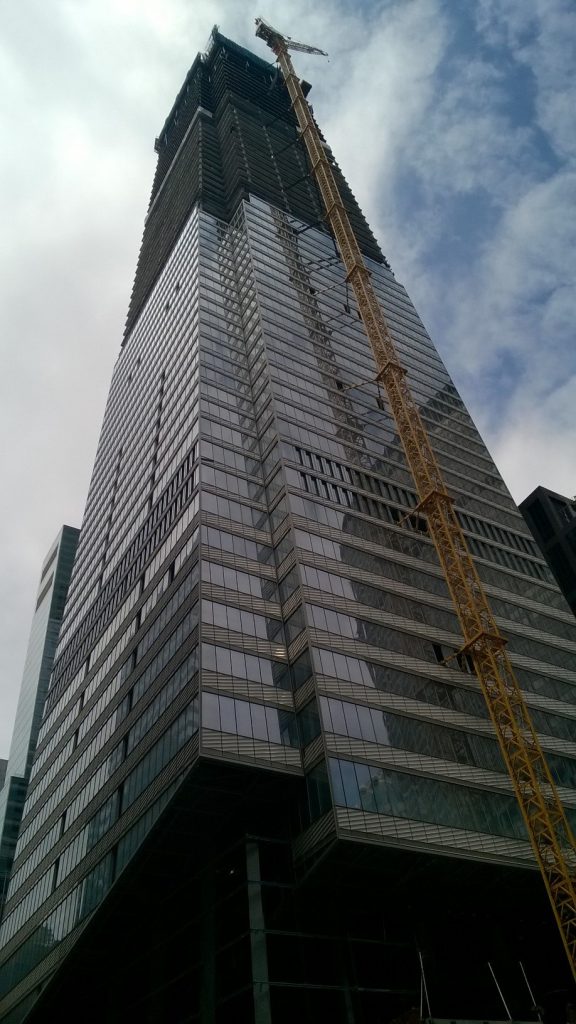 New York City has undergone a construction boom in the last 20 years, which has seen many new super tall buildings join the skyline. Starting with the construction of One World Trade Center, super tall structures have sprouted all over the city as new zoning regulations have allowed for larger buildings to be designed and constructed in neighborhoods that hadn’t changed for decades.
New York City has undergone a construction boom in the last 20 years, which has seen many new super tall buildings join the skyline. Starting with the construction of One World Trade Center, super tall structures have sprouted all over the city as new zoning regulations have allowed for larger buildings to be designed and constructed in neighborhoods that hadn’t changed for decades.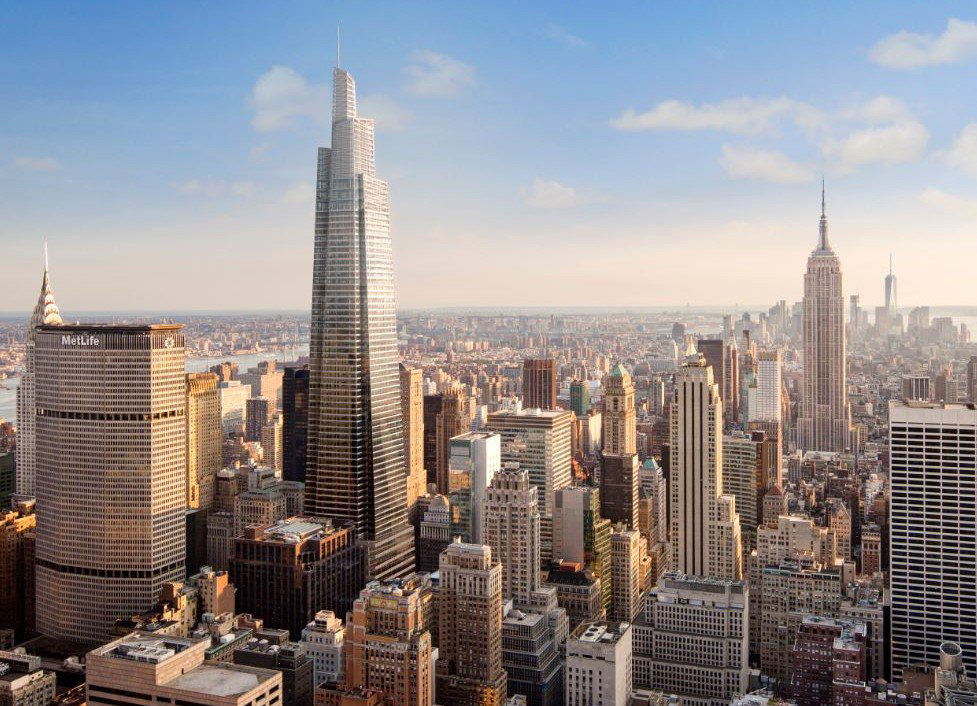
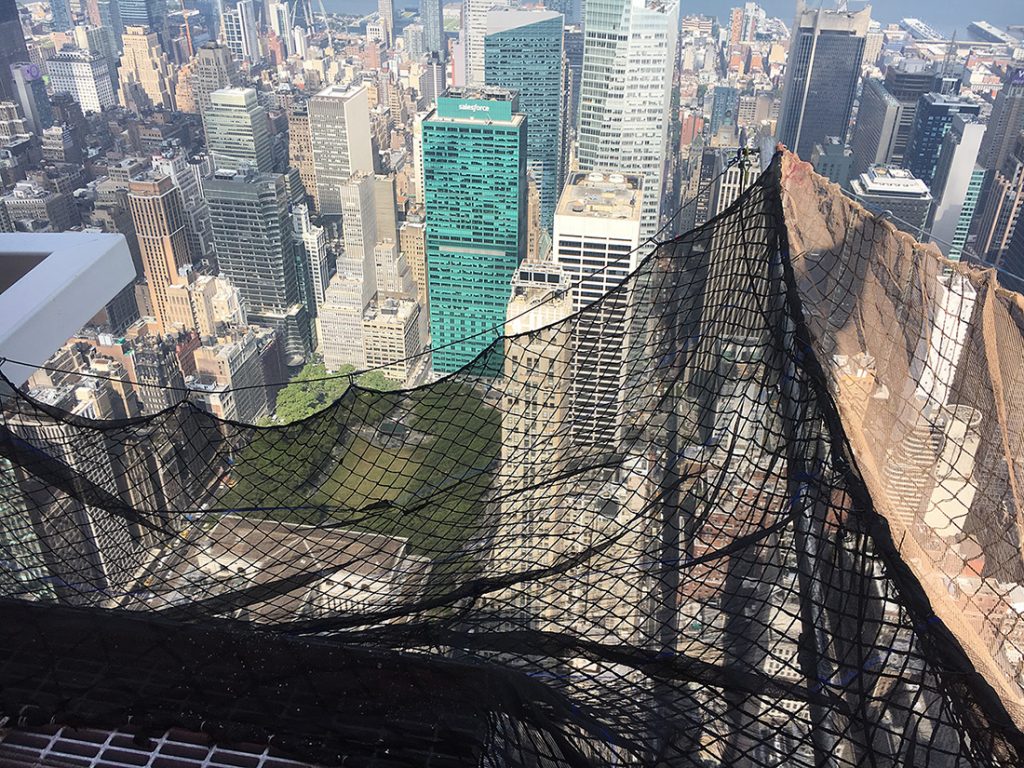
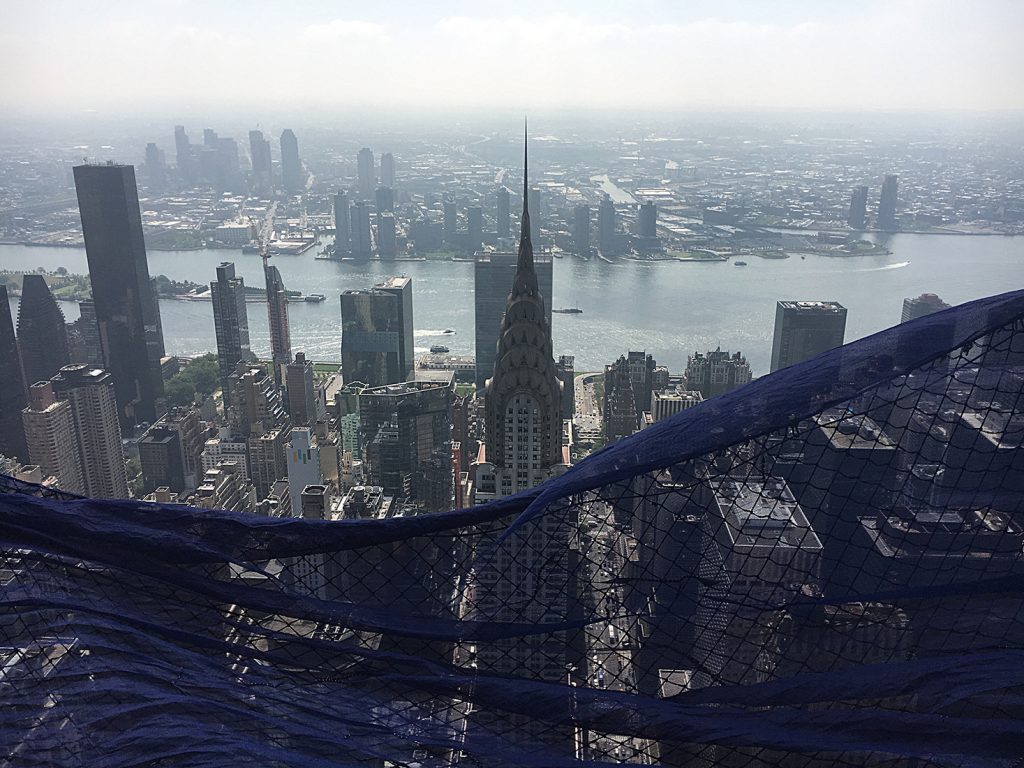
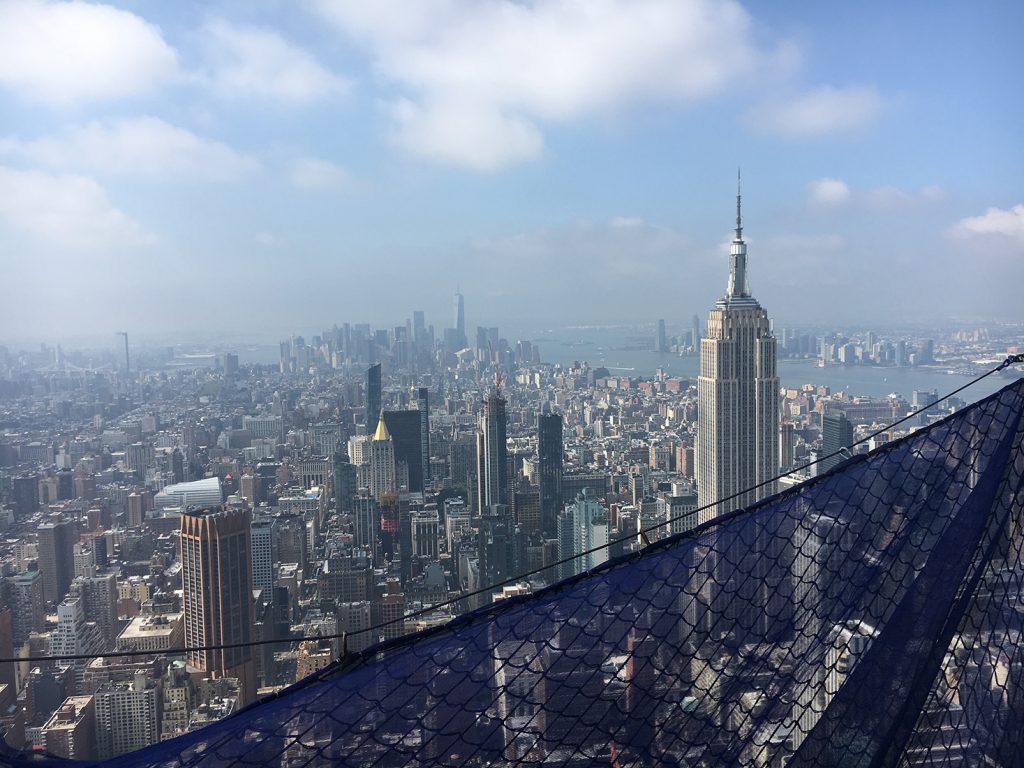
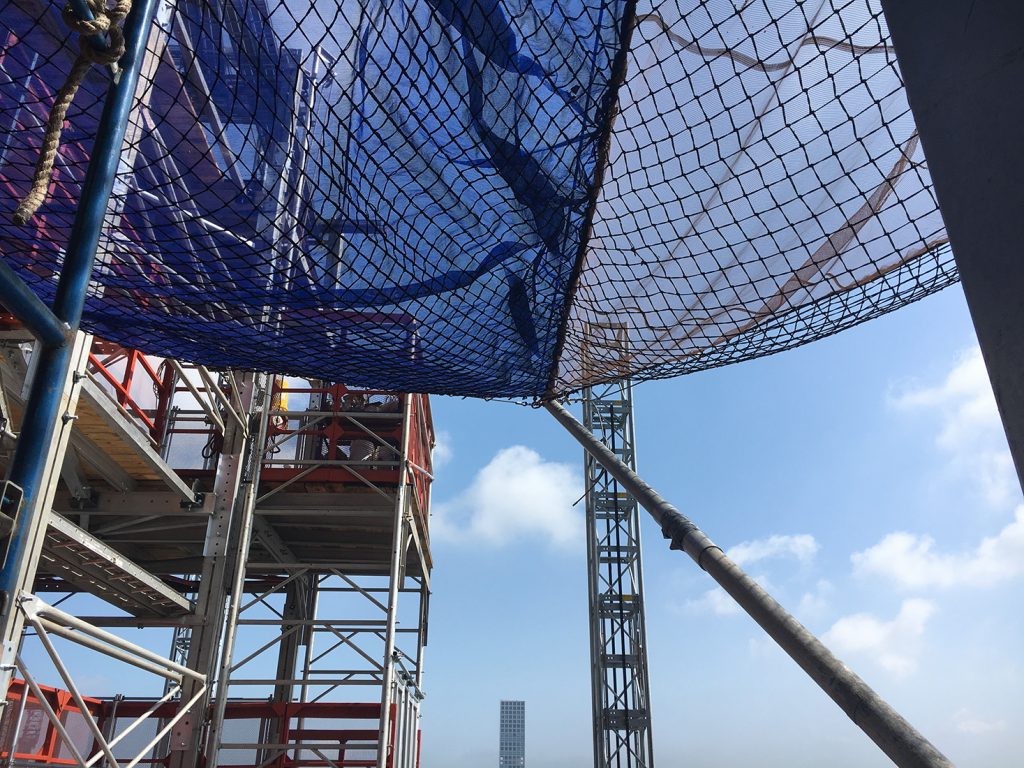 Pucuda-Leading Edge was called in to provide perimeter safety netting and custom curtain netting systems for the tower spire above the 61st floor. The systems were trucked in on a flatbed truck and then lifted by crane to the 60th floor, where they were initially installed. There are two separate perimeter safety net systems on the spire, which will be individually moved upwards as it is completed.
Pucuda-Leading Edge was called in to provide perimeter safety netting and custom curtain netting systems for the tower spire above the 61st floor. The systems were trucked in on a flatbed truck and then lifted by crane to the 60th floor, where they were initially installed. There are two separate perimeter safety net systems on the spire, which will be individually moved upwards as it is completed.

 The Empire State Buildings’ location had been the site of the original Waldorf Astoria Hotel, built in 1893 by the Astor family. By the late 1920s it was perceived as outdated and the property sold to the developers of The Empire State Building in 1929. It was demolished later that same year. Construction on the new building started on March 17 of 1930.
The Empire State Buildings’ location had been the site of the original Waldorf Astoria Hotel, built in 1893 by the Astor family. By the late 1920s it was perceived as outdated and the property sold to the developers of The Empire State Building in 1929. It was demolished later that same year. Construction on the new building started on March 17 of 1930.




 The construction manpower employed was more than 3,500 people at its highest. These laborers were immigrants from Ireland and Italy, with a sizable number of Mohawk Indians from Upstate New York and Canada. A primary focus of site management was to keep materials continually feeding construction. There were a series of cranes and derricks which lifted materials from the trucks below, while hoists and other lifts inside the structure enabled speedy movement of materials upwards.
The construction manpower employed was more than 3,500 people at its highest. These laborers were immigrants from Ireland and Italy, with a sizable number of Mohawk Indians from Upstate New York and Canada. A primary focus of site management was to keep materials continually feeding construction. There were a series of cranes and derricks which lifted materials from the trucks below, while hoists and other lifts inside the structure enabled speedy movement of materials upwards.



 What’s important to note is that these three giant towers of the Art Deco age were built before the advent of modern safety standards and measures. There weren’t any hard hats, or perimeter safety netting systems, specified work clothes, tie-off locations or regulations to protect workers. Even though the International Union of Ironworkers fought for workers’ rights and some individual project engineers specified safety measures, it wasn’t until state and federal regulations emerged that minimum safety conditions were required on all work sites.
What’s important to note is that these three giant towers of the Art Deco age were built before the advent of modern safety standards and measures. There weren’t any hard hats, or perimeter safety netting systems, specified work clothes, tie-off locations or regulations to protect workers. Even though the International Union of Ironworkers fought for workers’ rights and some individual project engineers specified safety measures, it wasn’t until state and federal regulations emerged that minimum safety conditions were required on all work sites. The Empire State building remained the world’s tallest building for 40 years until the North Tower of the World Trade Center surpassed it in height in 1970. After the destruction of the World Trade Center complex during the September 11th Attacks, in 2001, it briefly became the 2nd tallest building in the Americas. It is currently the 44th tallest building in the world and the 6th tallest in the Americas. As an internationally recognized symbol of New York City, it was awarded city landmark status and was designated as a National Historic Landmark in 1986. It receives 3 million visitors annually.
The Empire State building remained the world’s tallest building for 40 years until the North Tower of the World Trade Center surpassed it in height in 1970. After the destruction of the World Trade Center complex during the September 11th Attacks, in 2001, it briefly became the 2nd tallest building in the Americas. It is currently the 44th tallest building in the world and the 6th tallest in the Americas. As an internationally recognized symbol of New York City, it was awarded city landmark status and was designated as a National Historic Landmark in 1986. It receives 3 million visitors annually.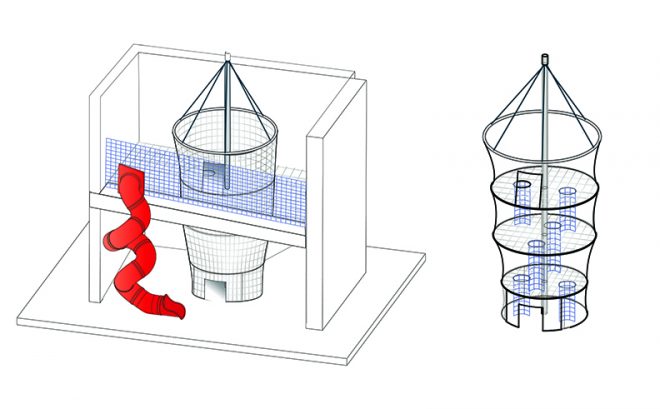
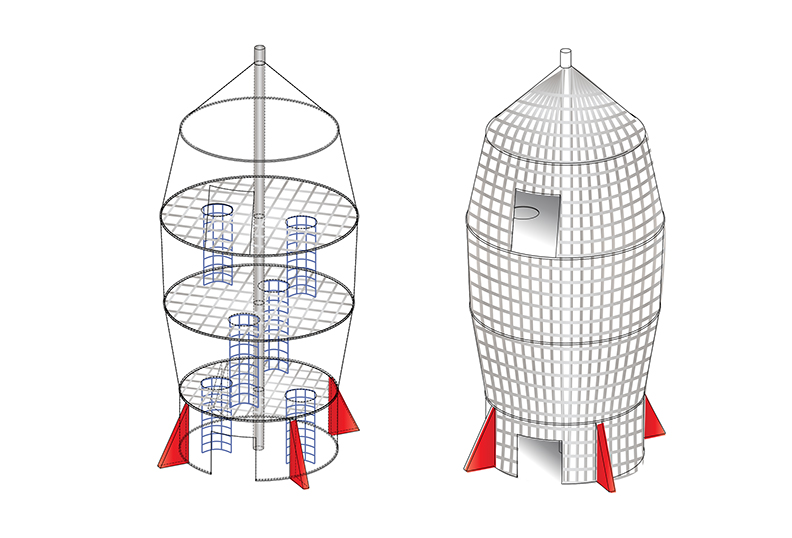

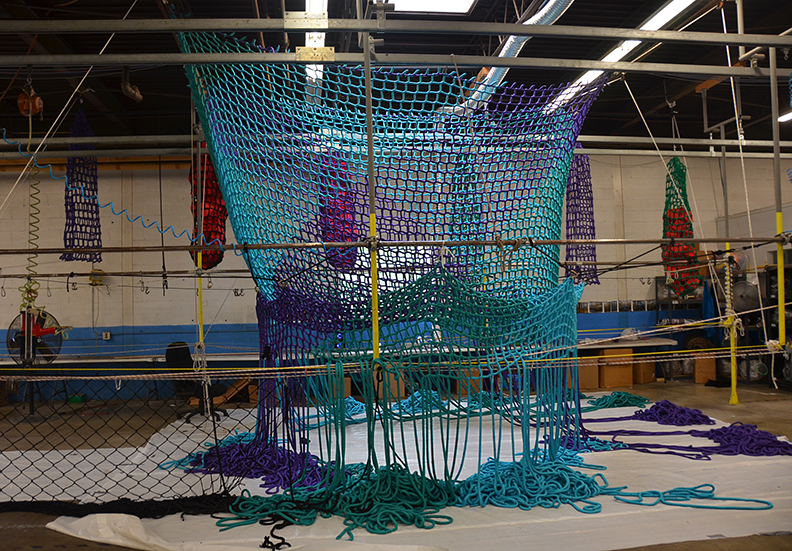
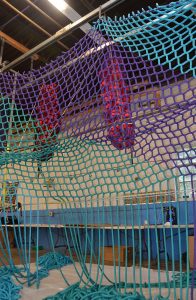
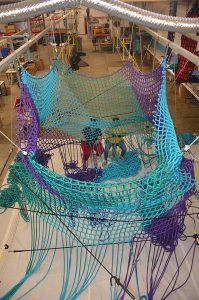
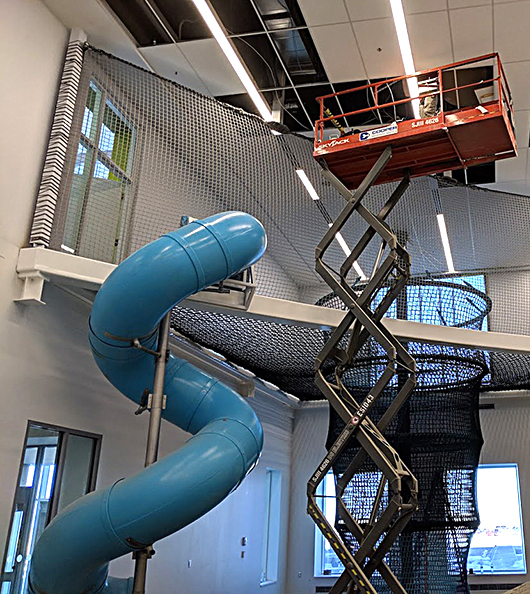
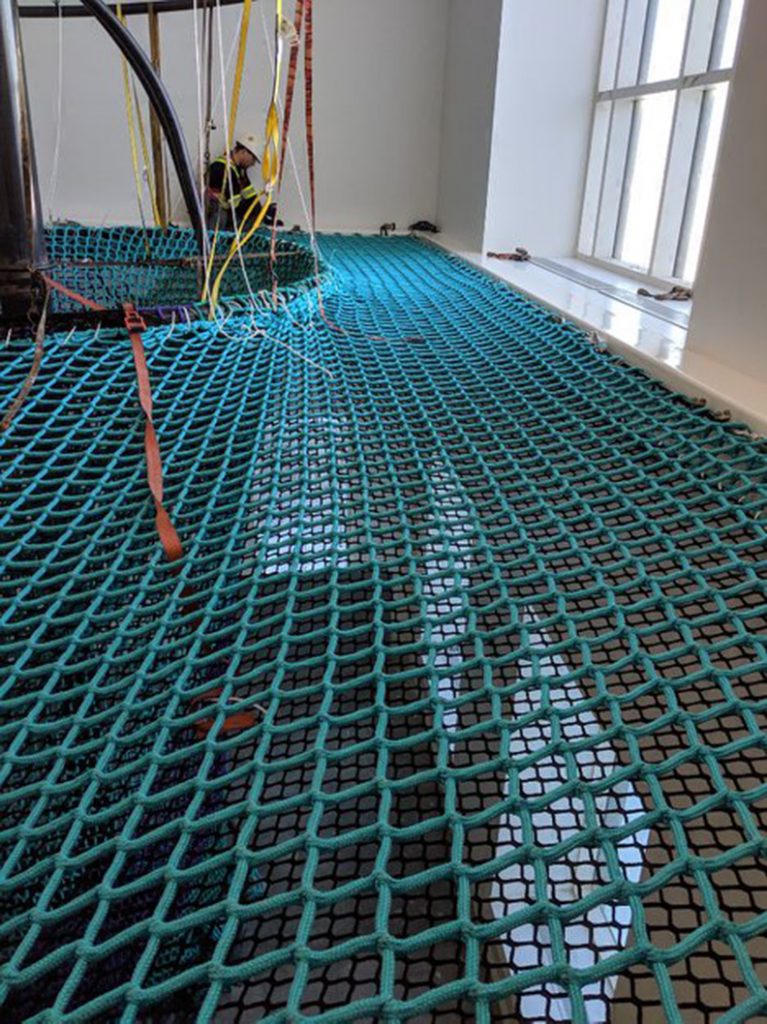

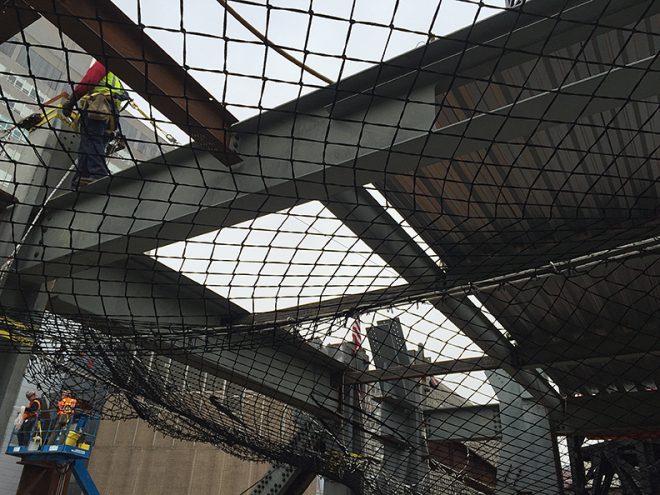

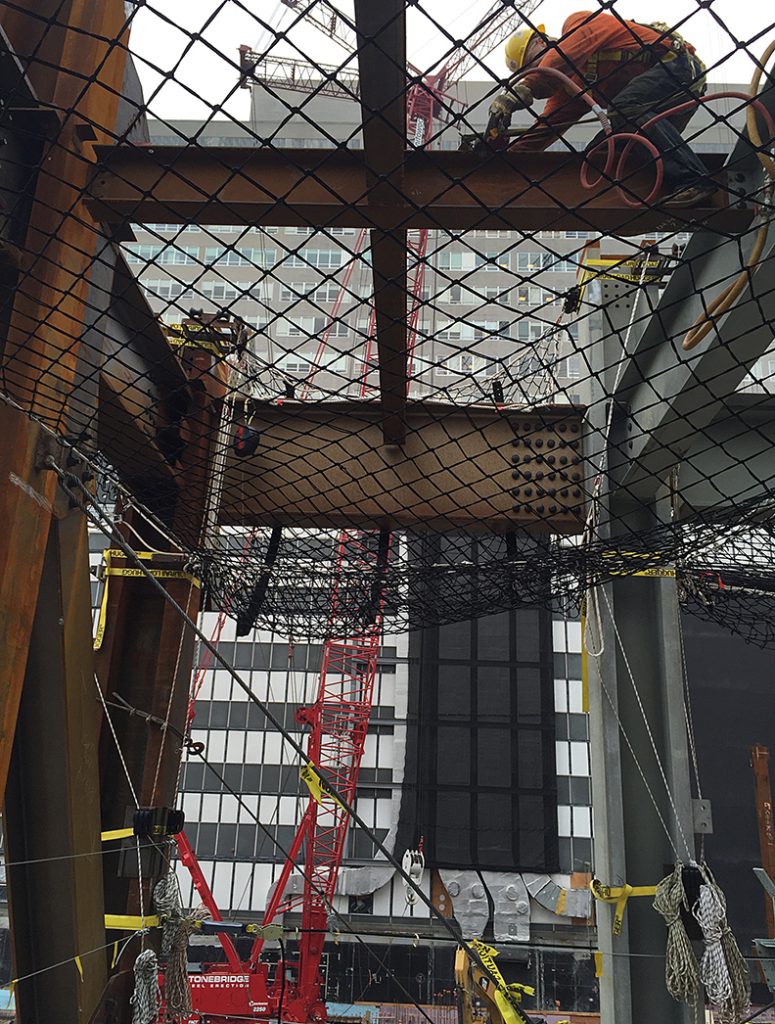
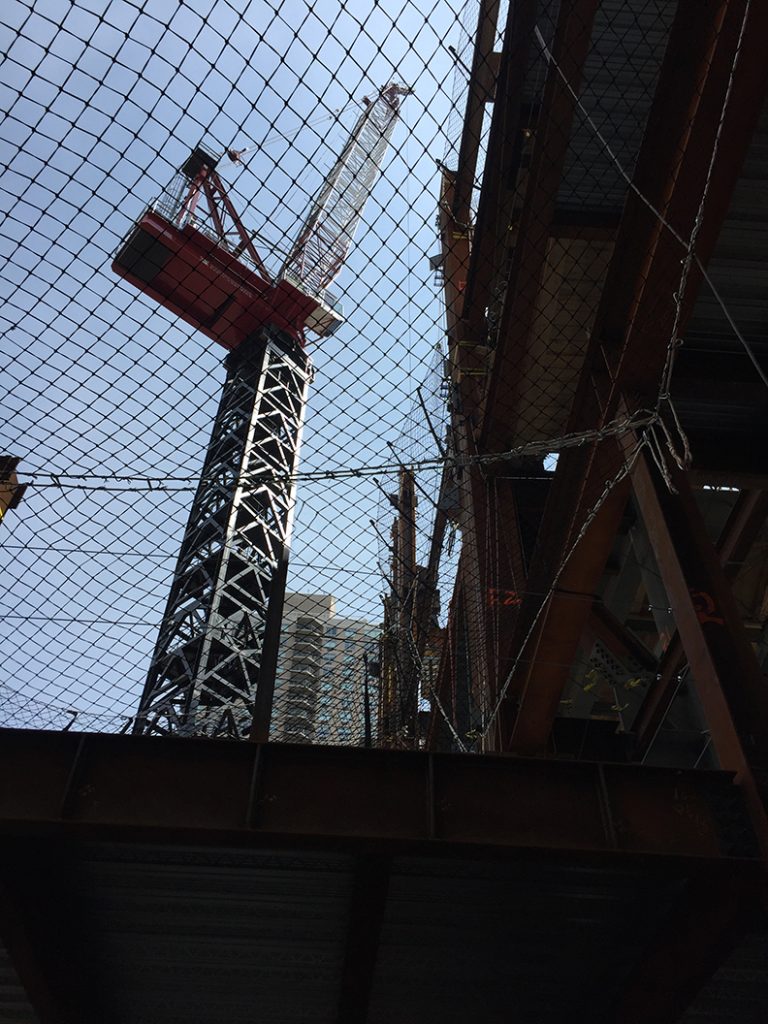
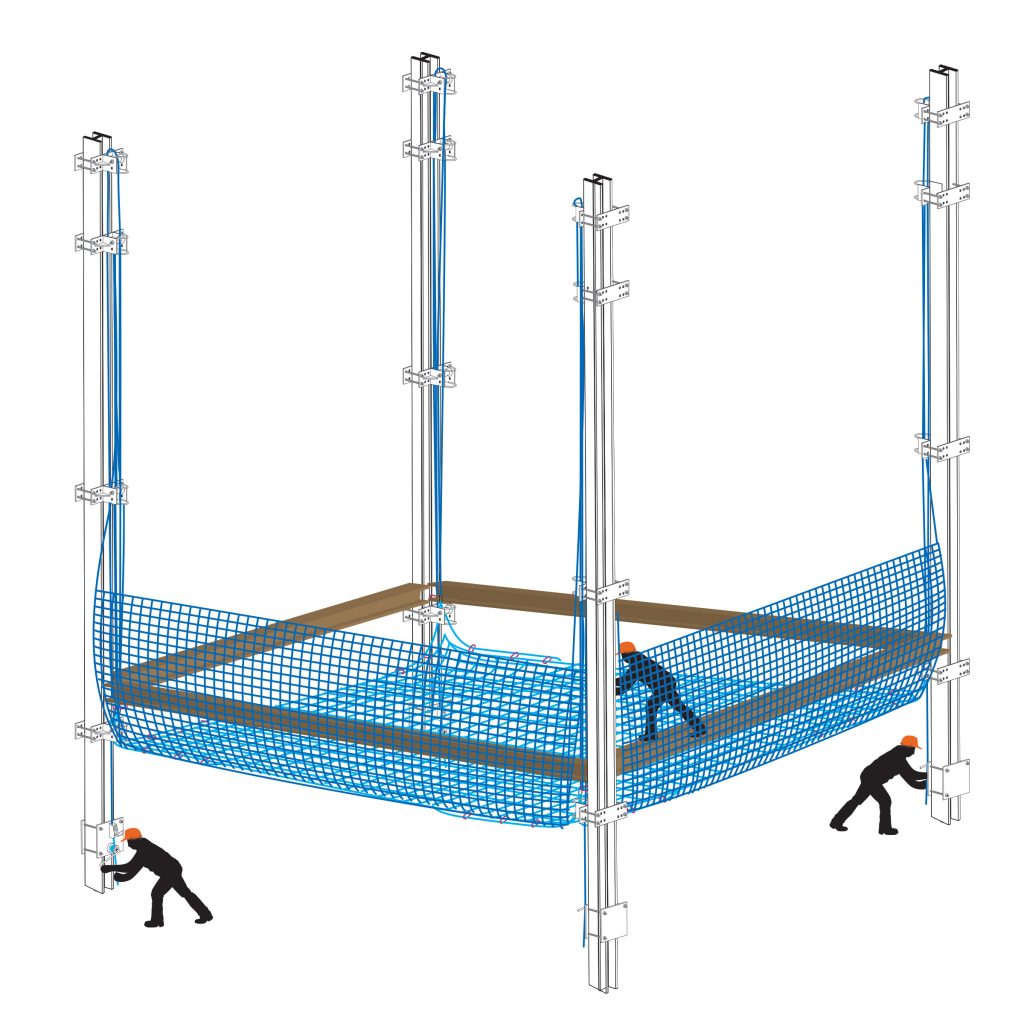
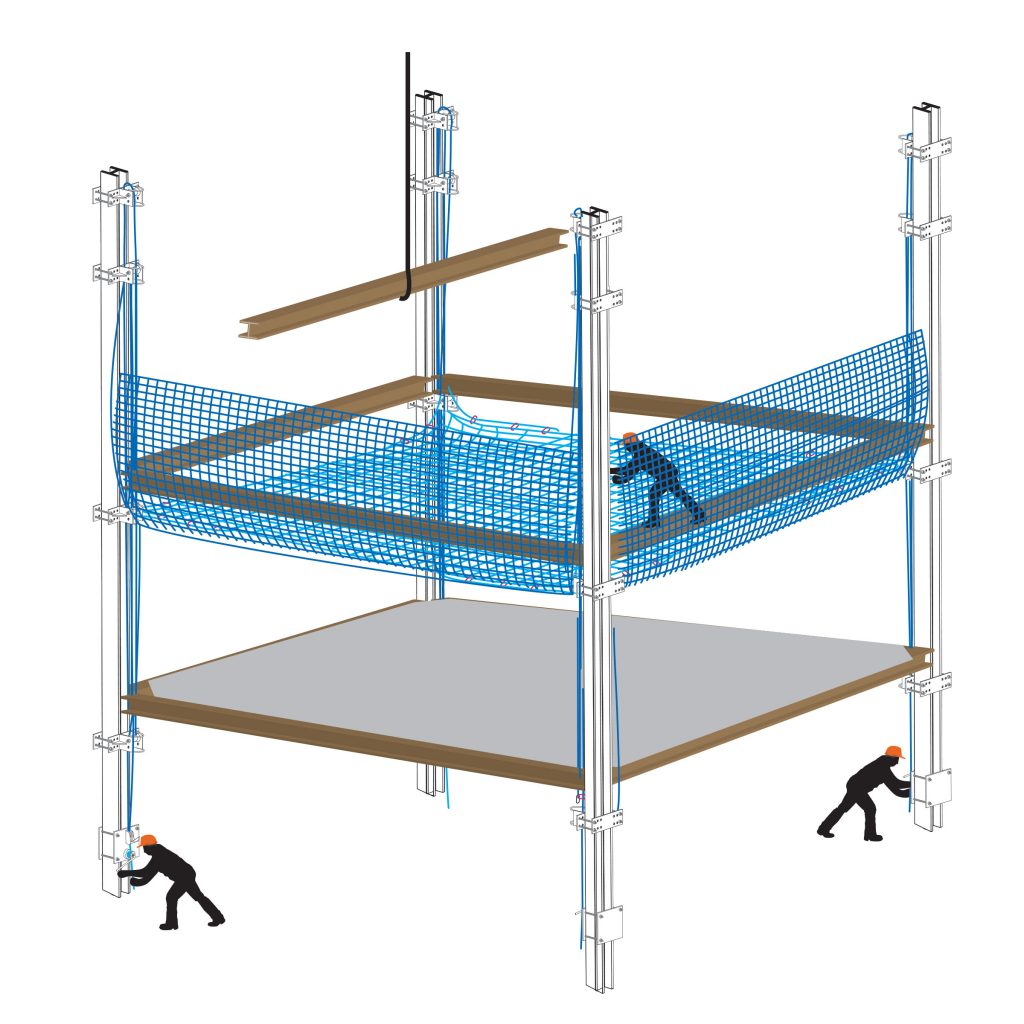
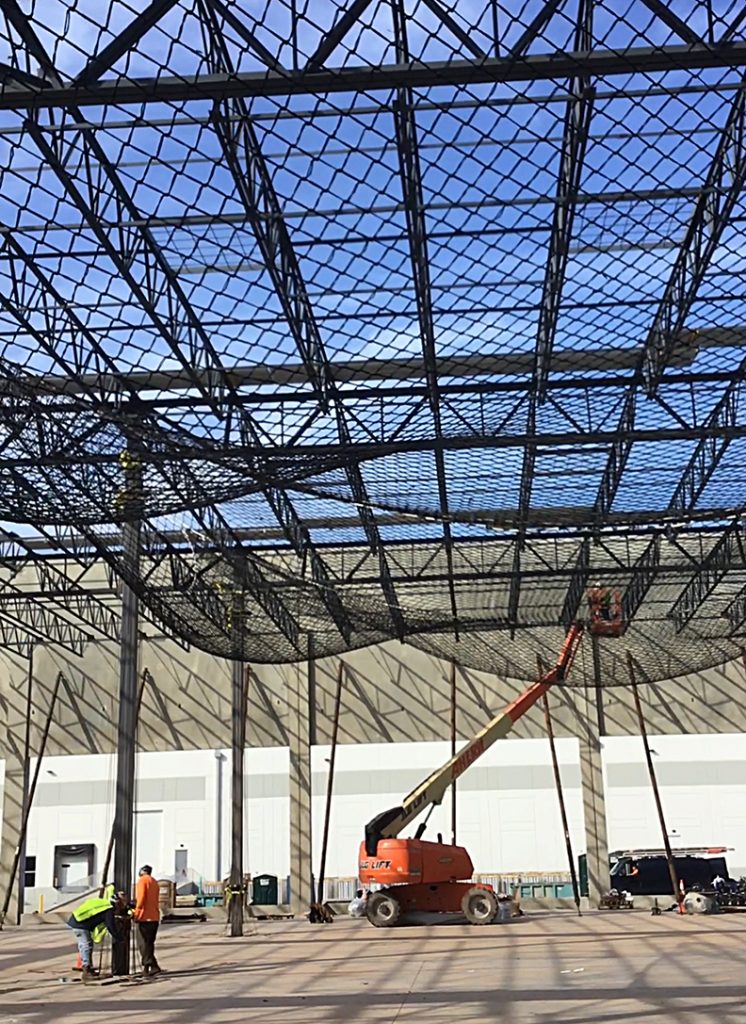
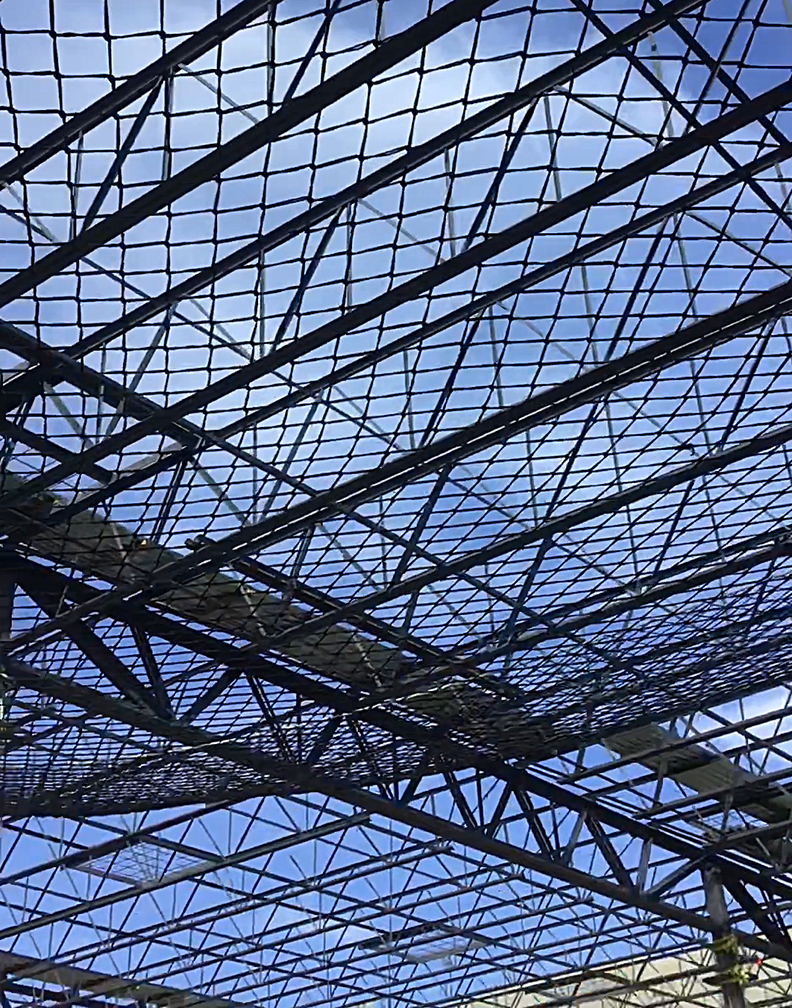
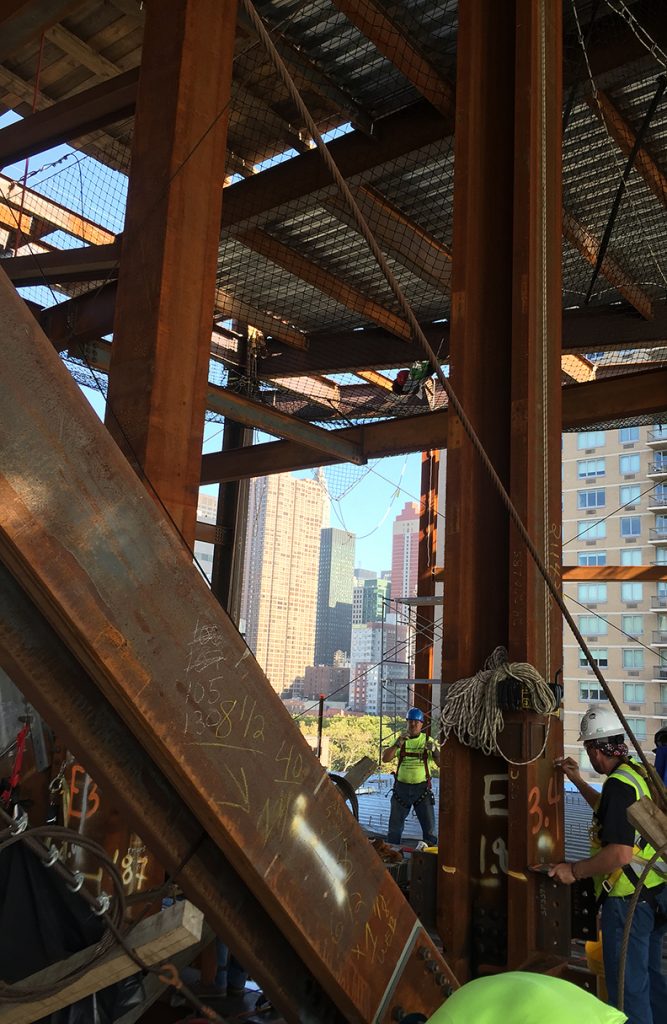
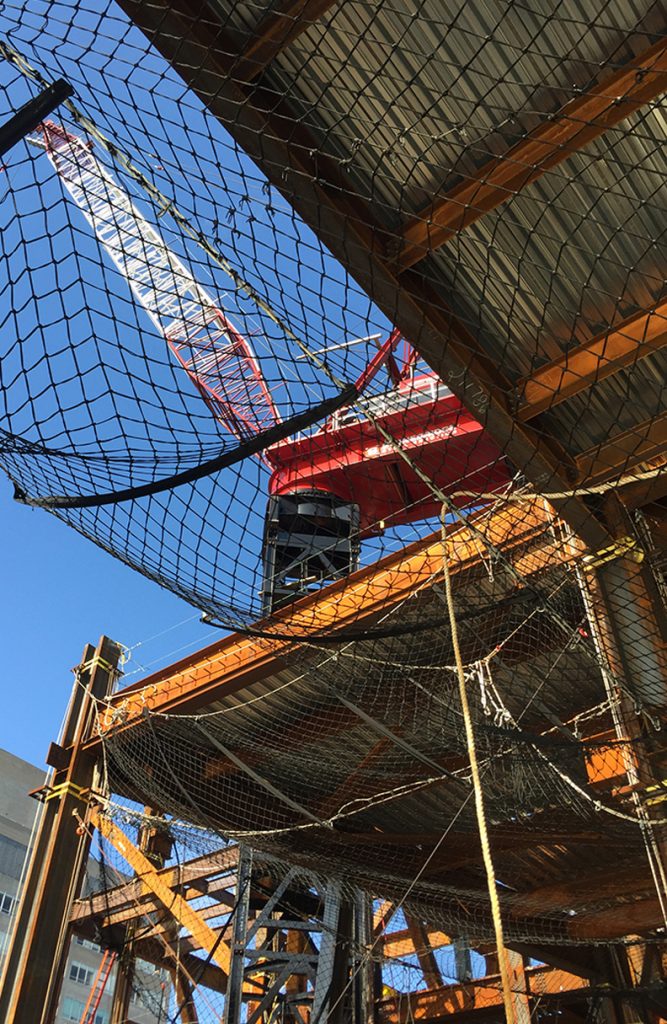 Pucuda Leading Edge provides safety netting for steel erectors, fall protection and debris containment. They provide assistance to both owners and contractors through consulting, engineering, and installation assistance.
Pucuda Leading Edge provides safety netting for steel erectors, fall protection and debris containment. They provide assistance to both owners and contractors through consulting, engineering, and installation assistance.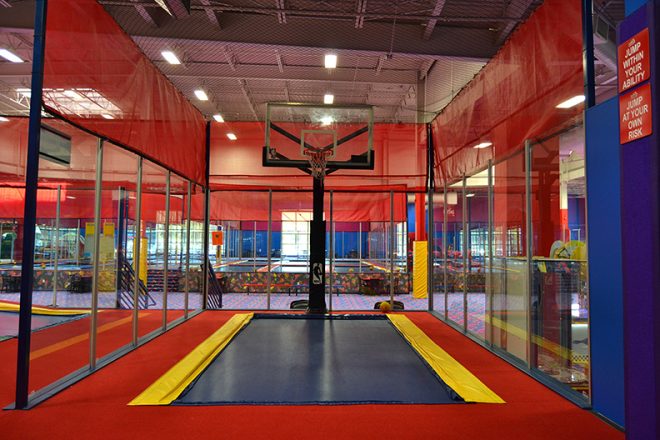
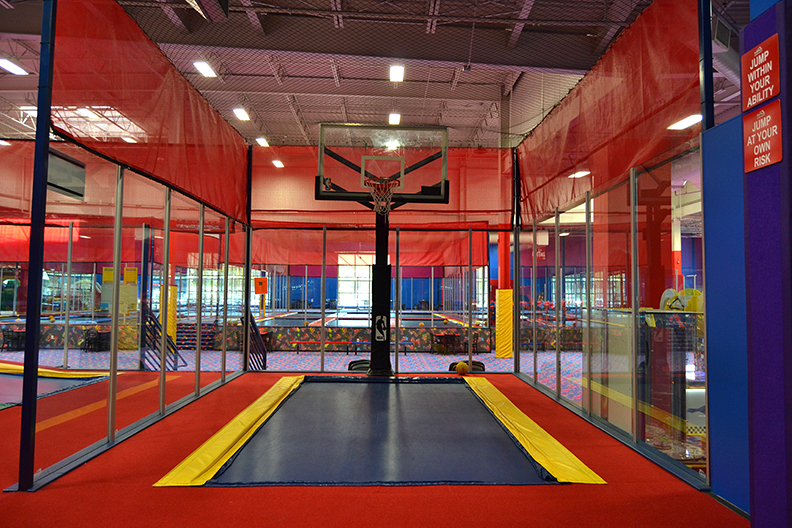
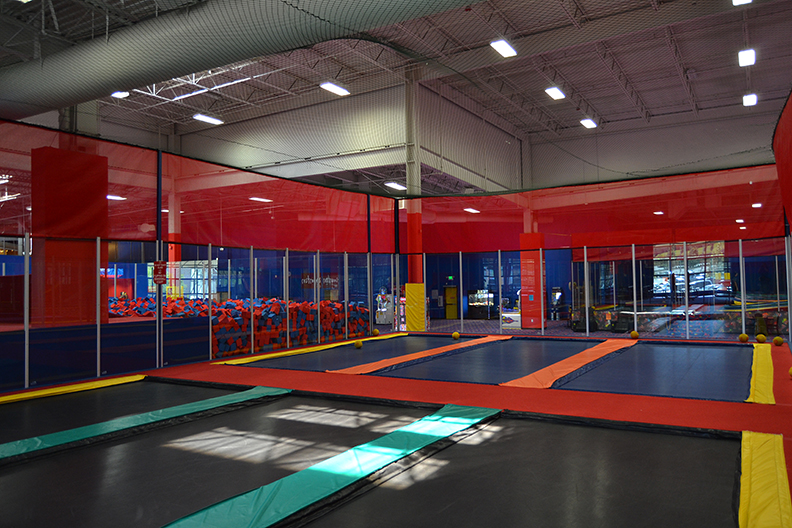
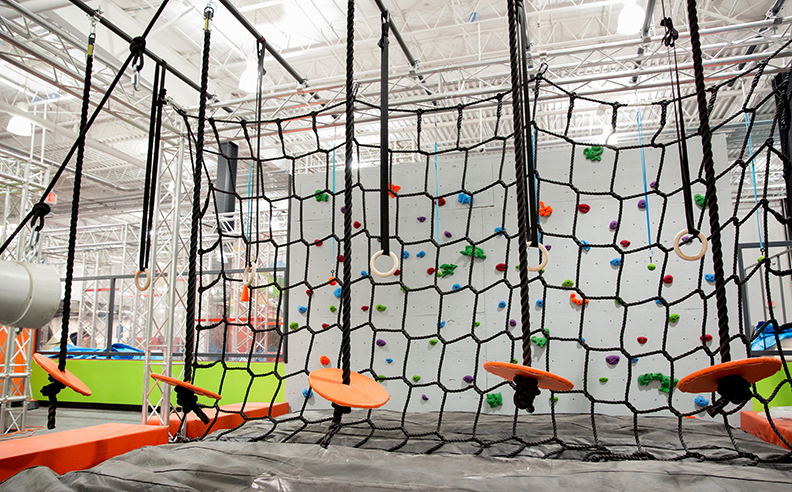
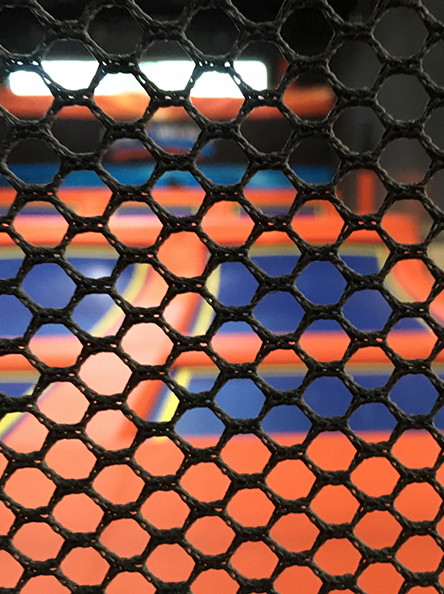
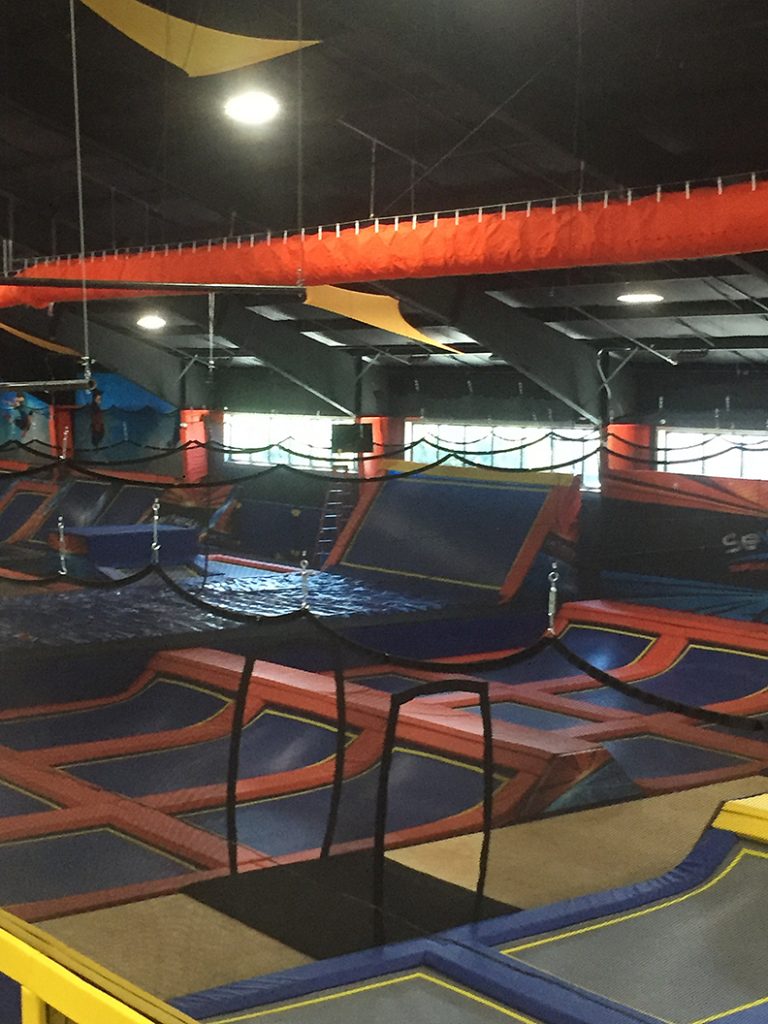
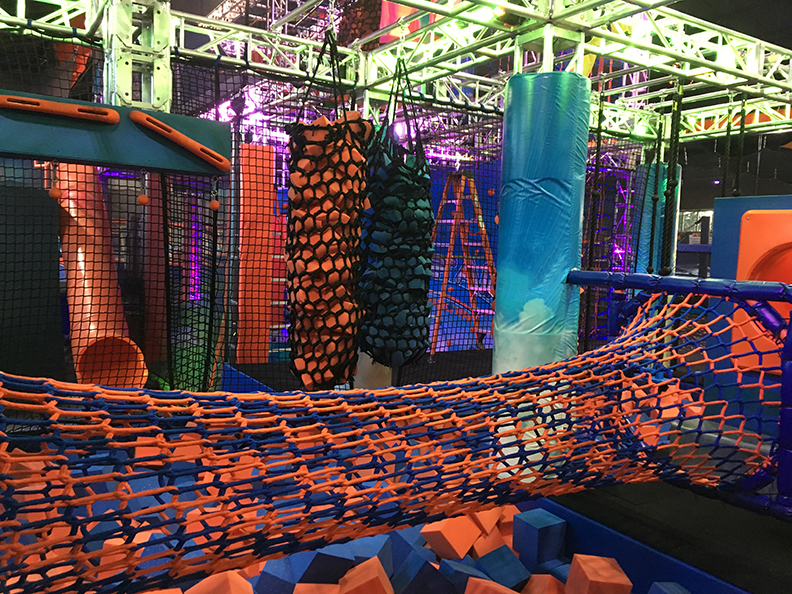 If you are designing an indoor activity venue and are looking for ideas and products, give us a call.
If you are designing an indoor activity venue and are looking for ideas and products, give us a call.